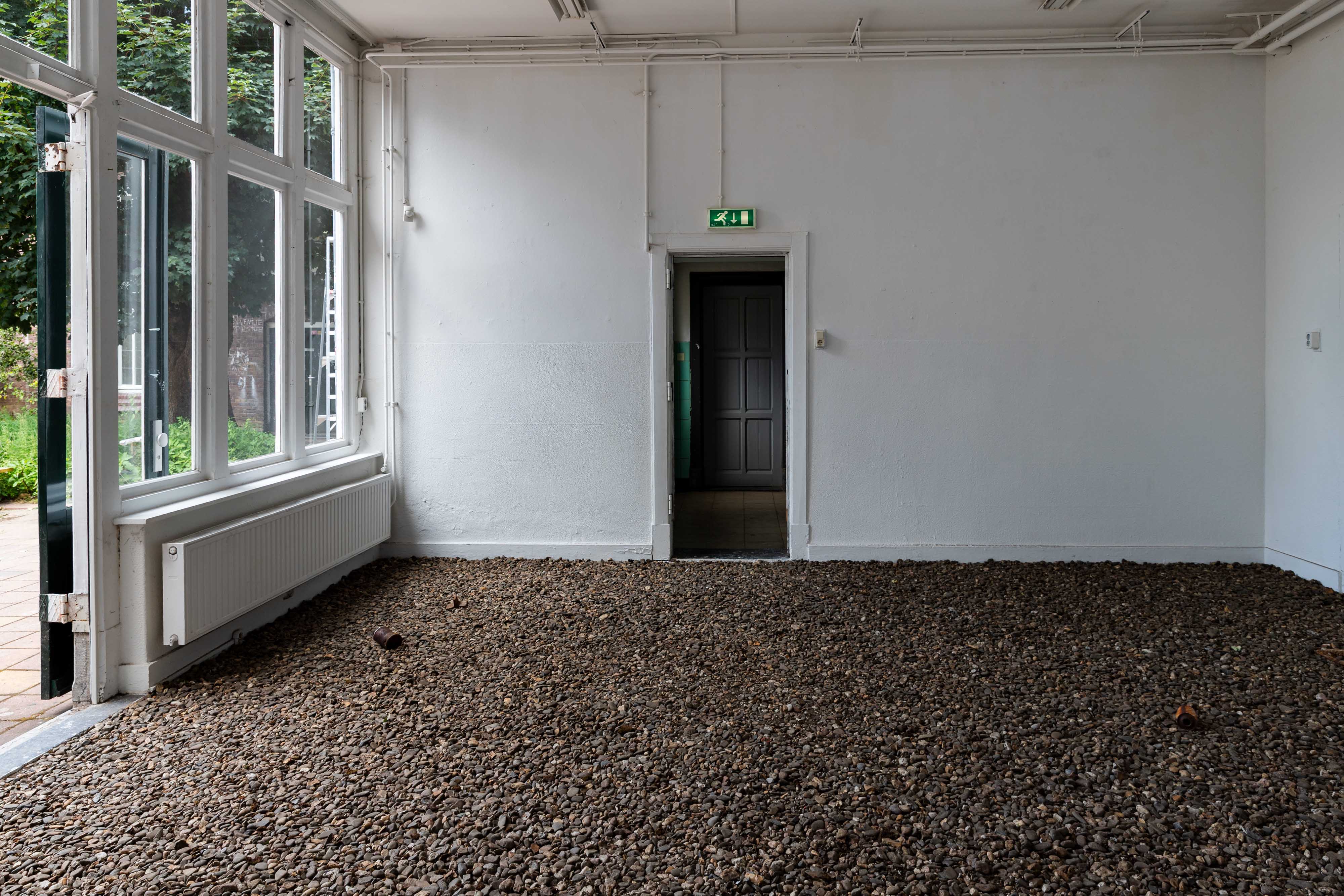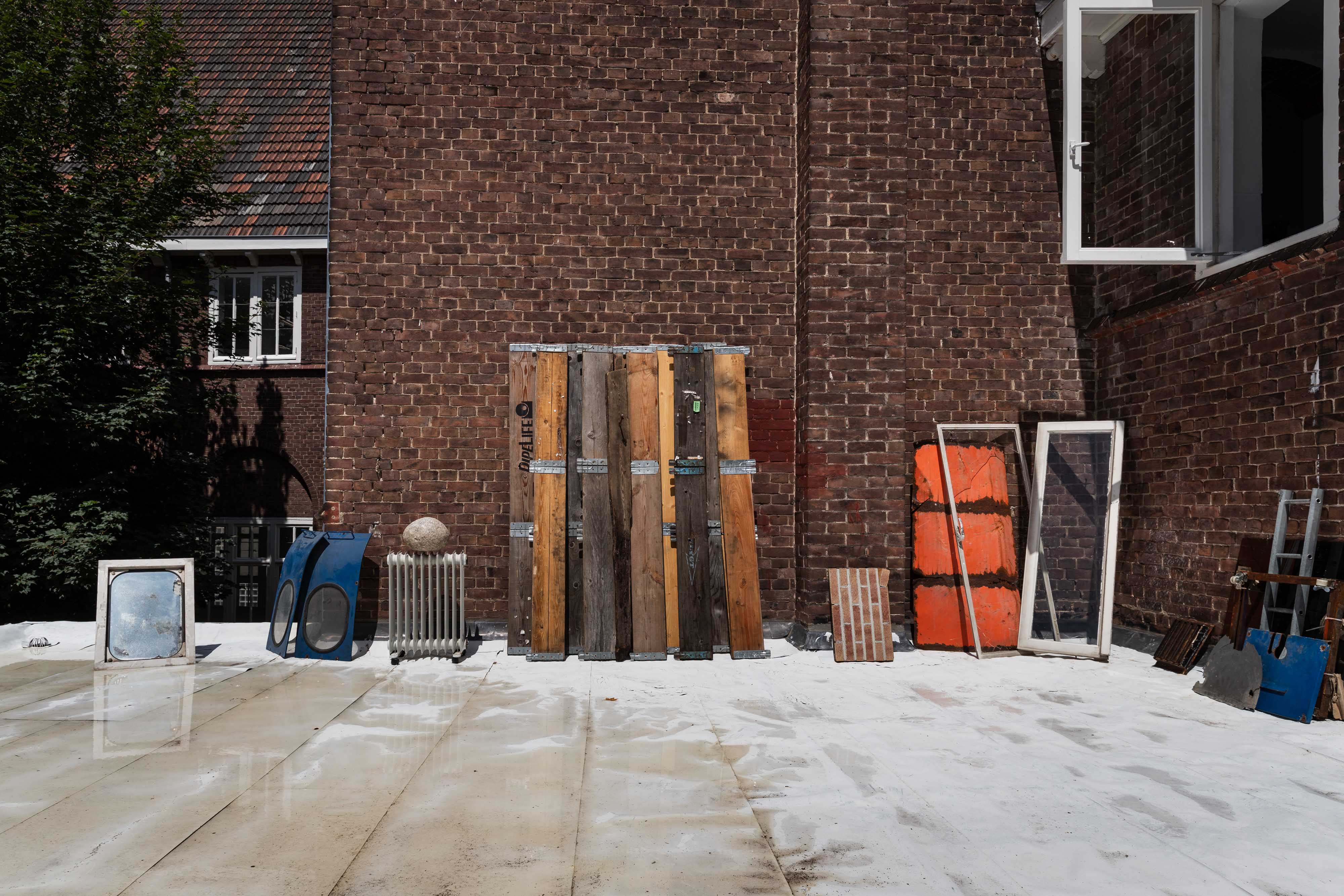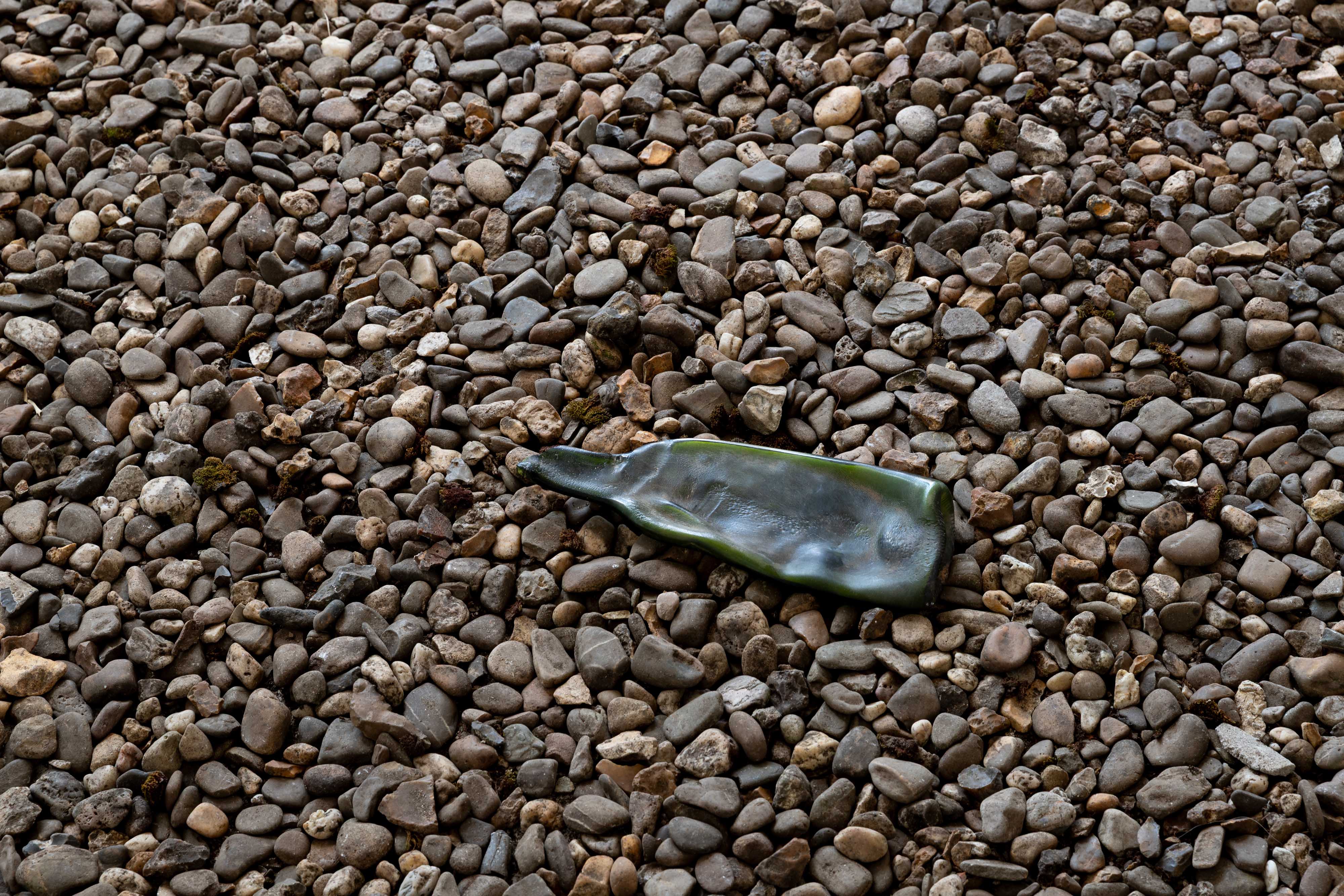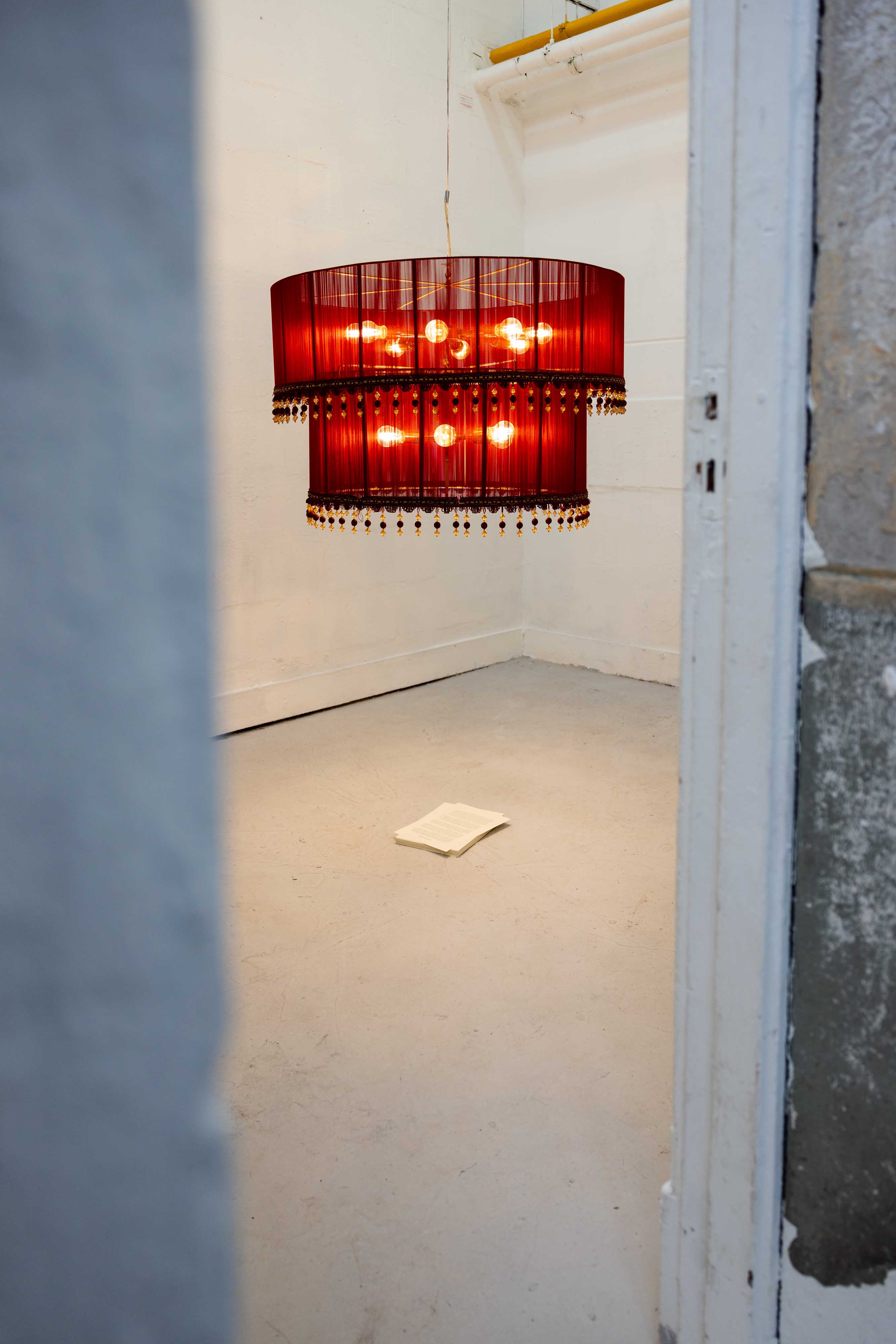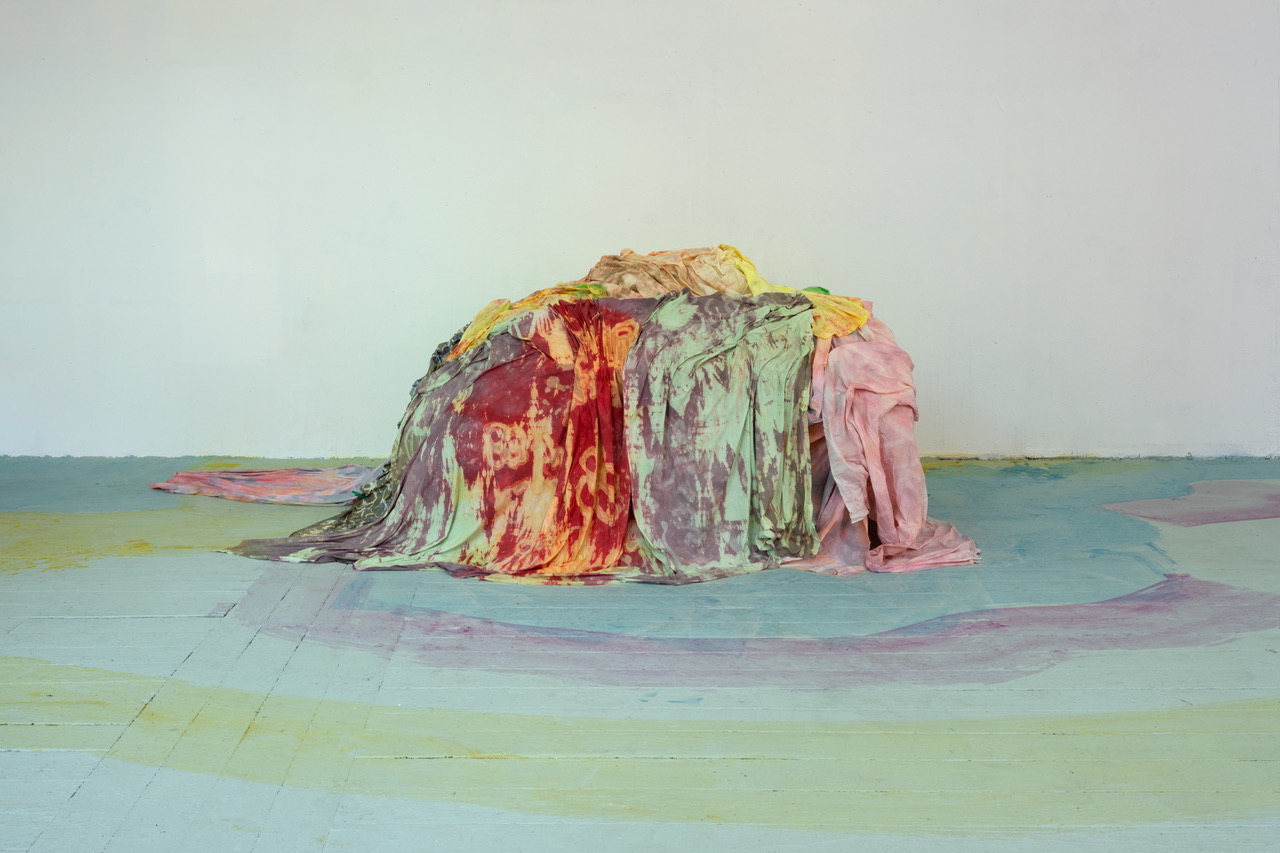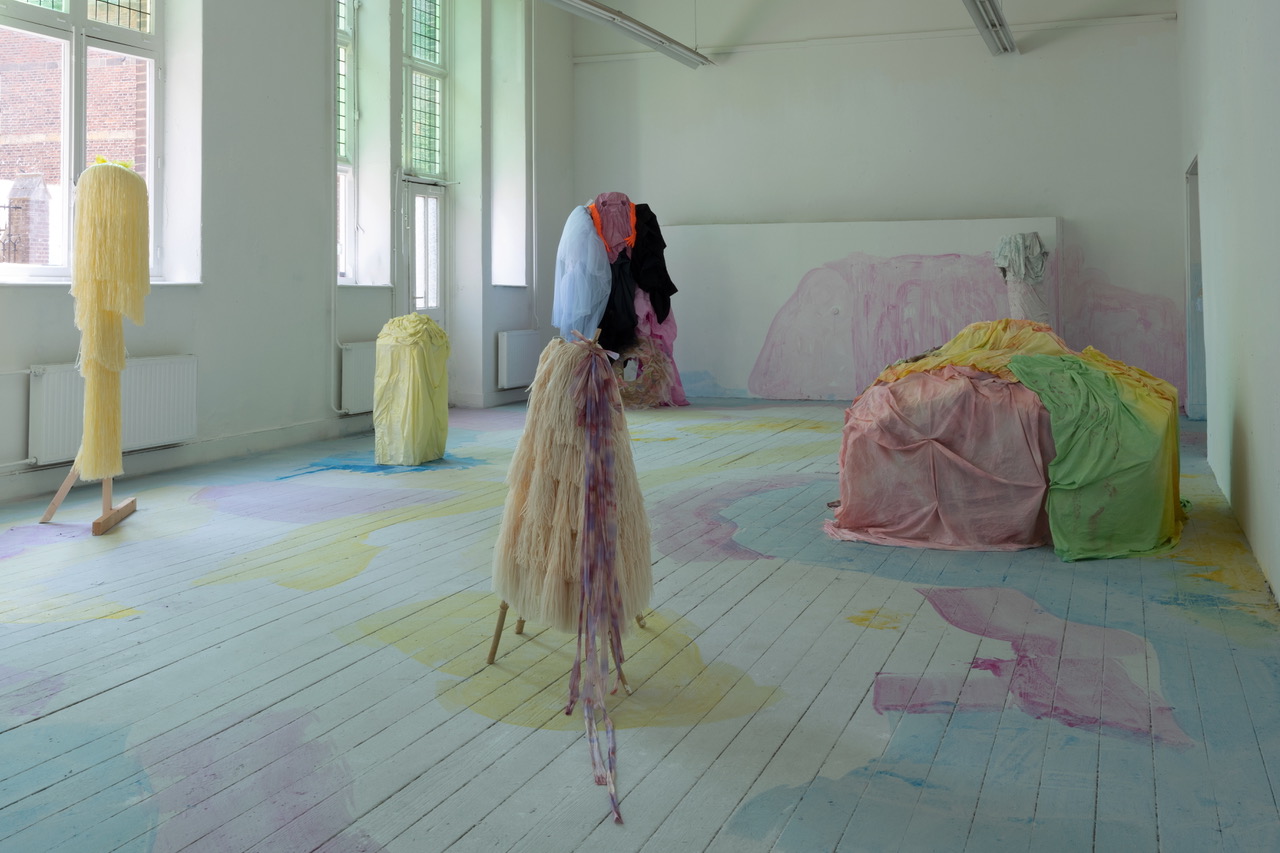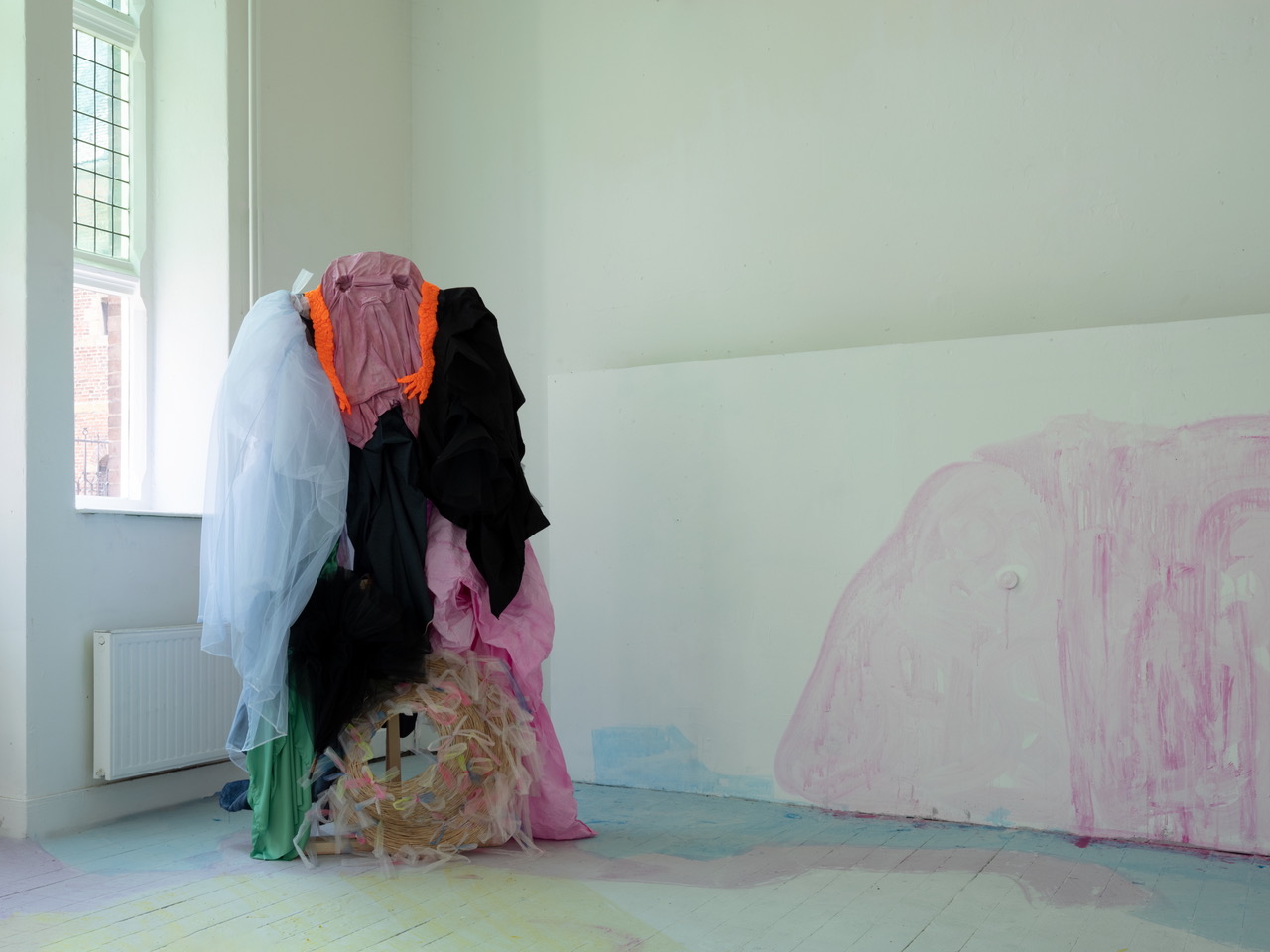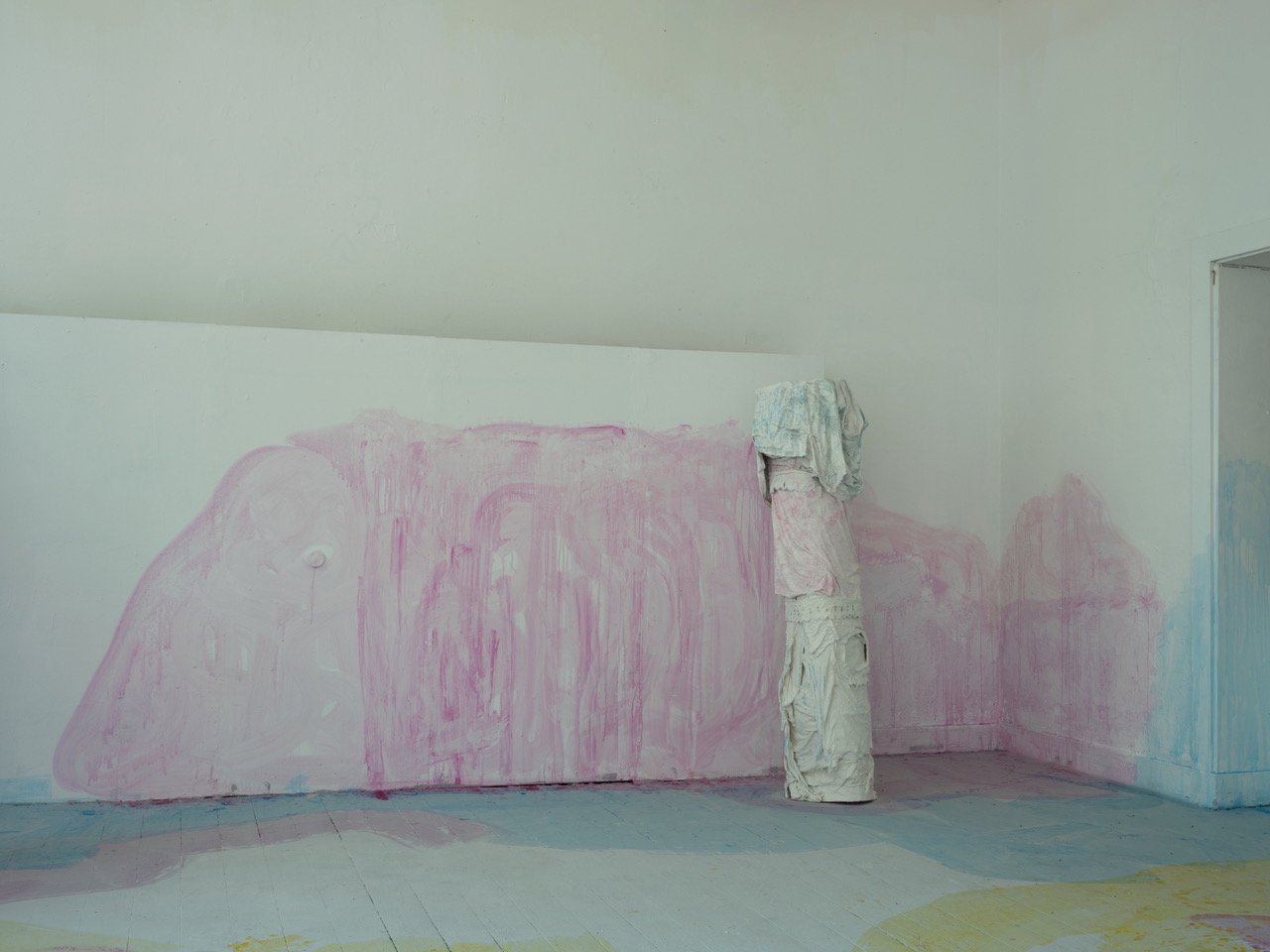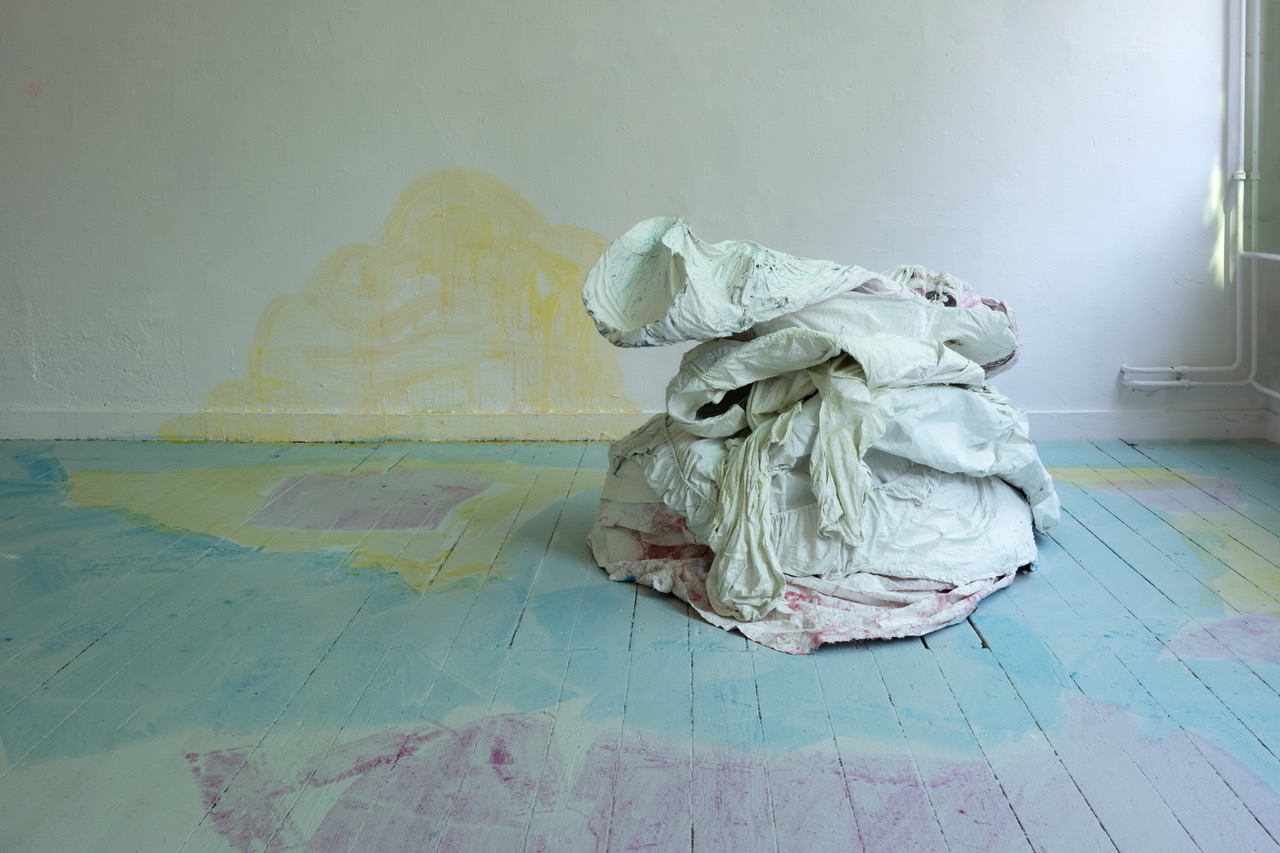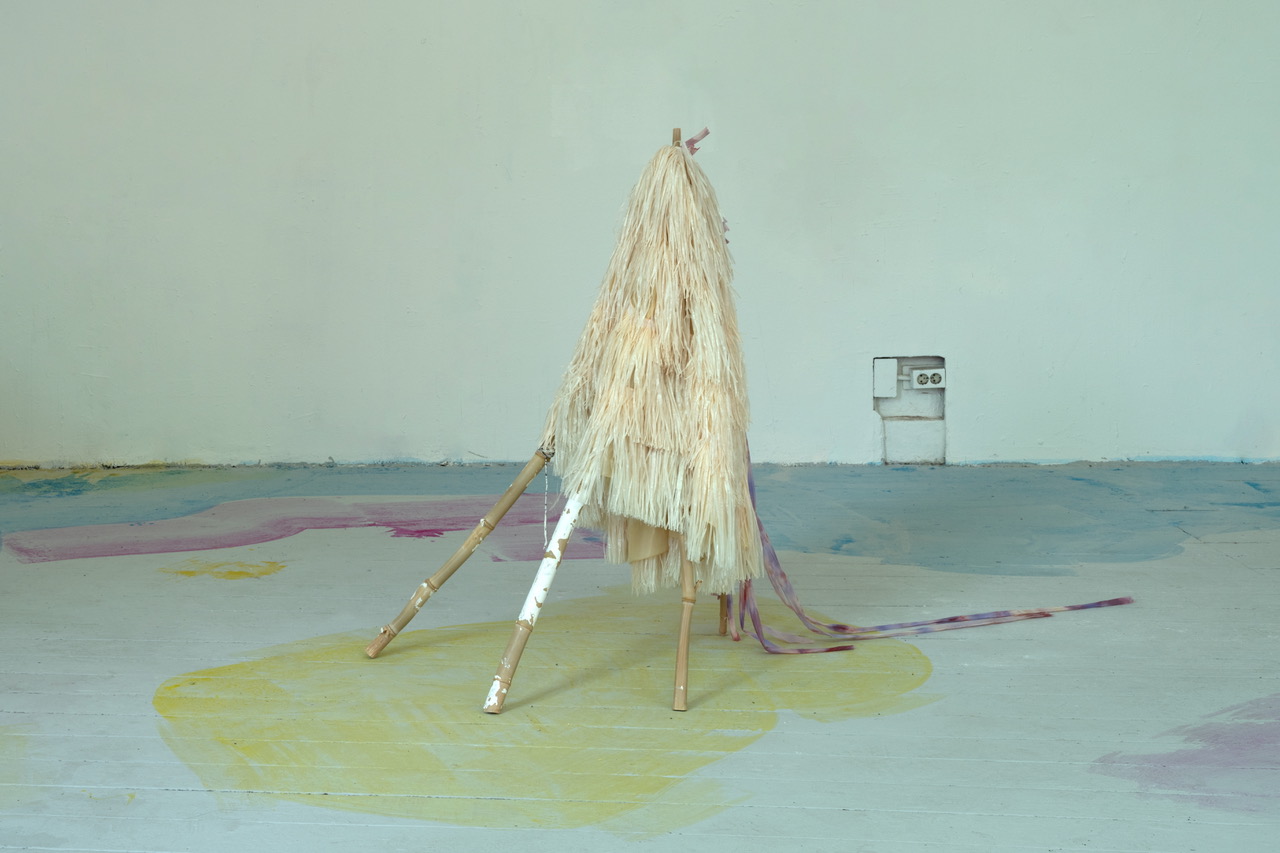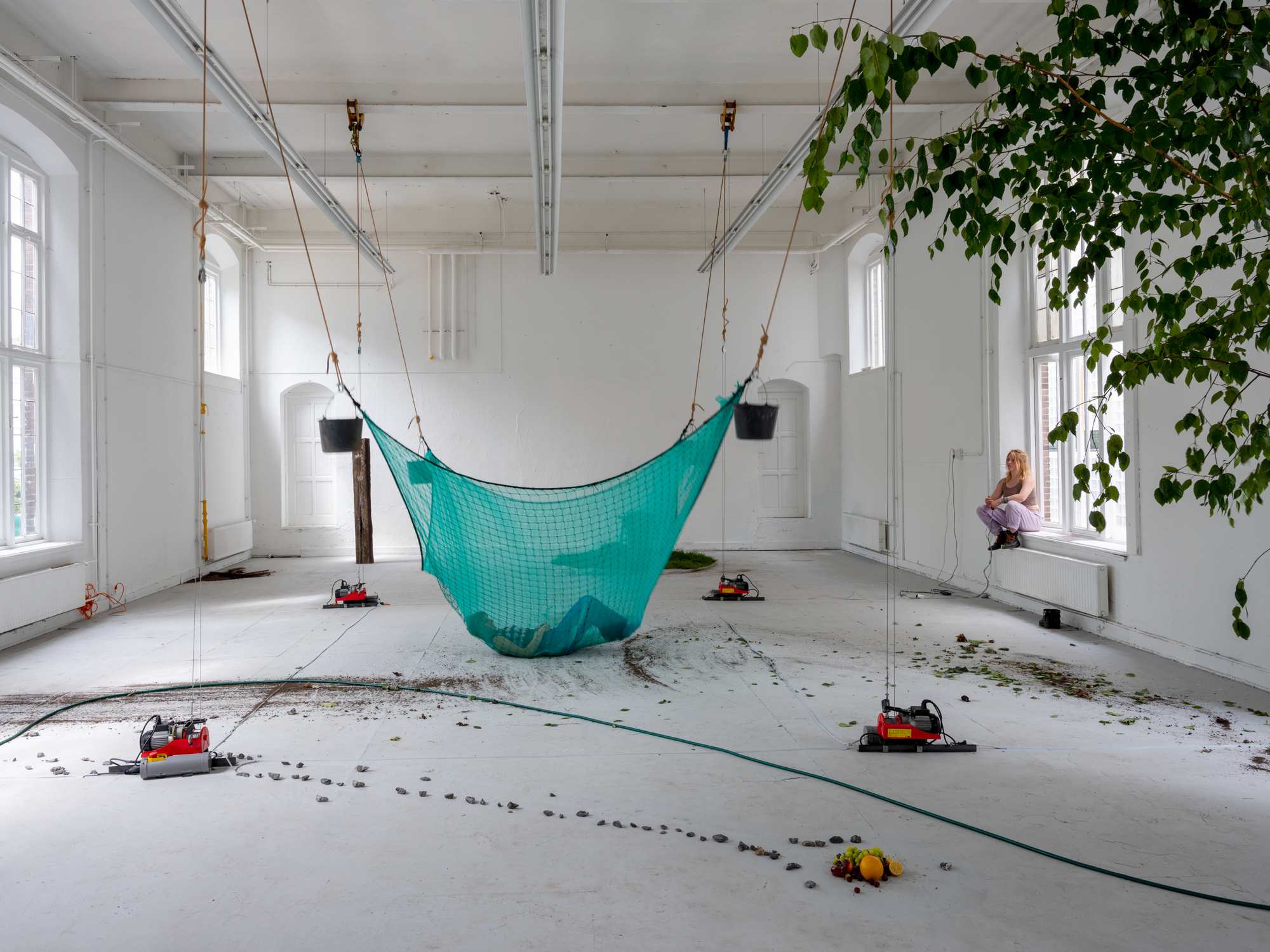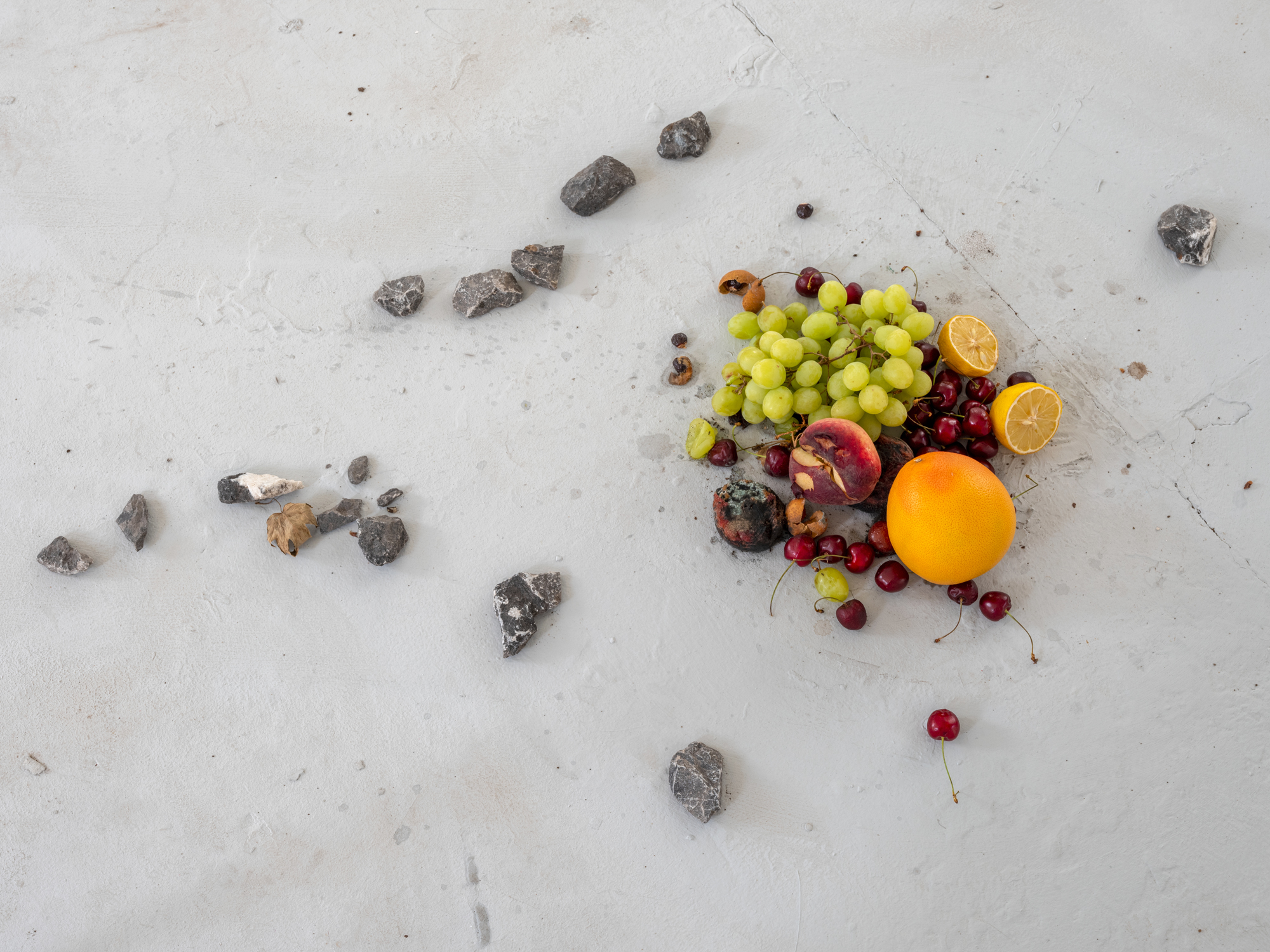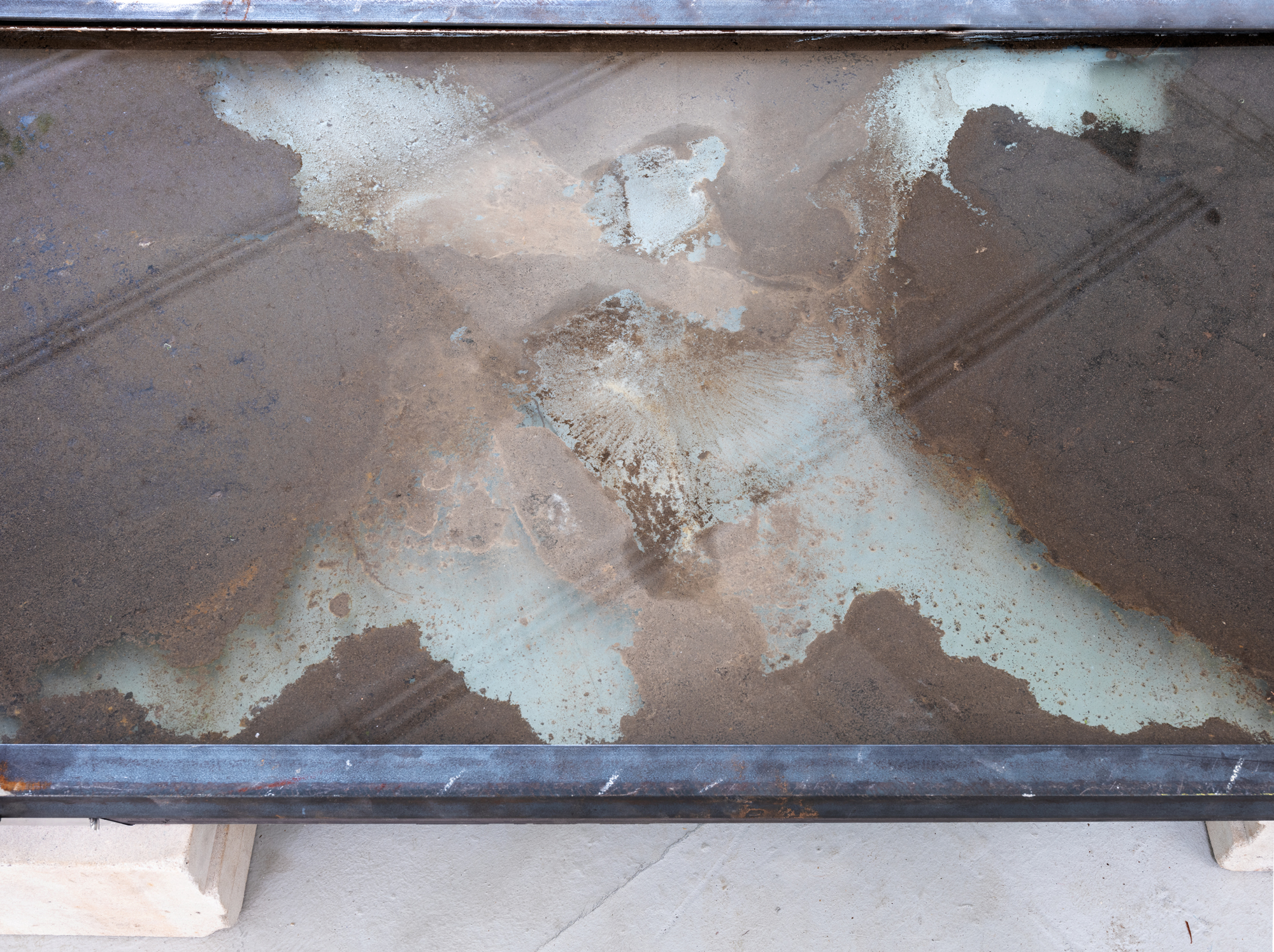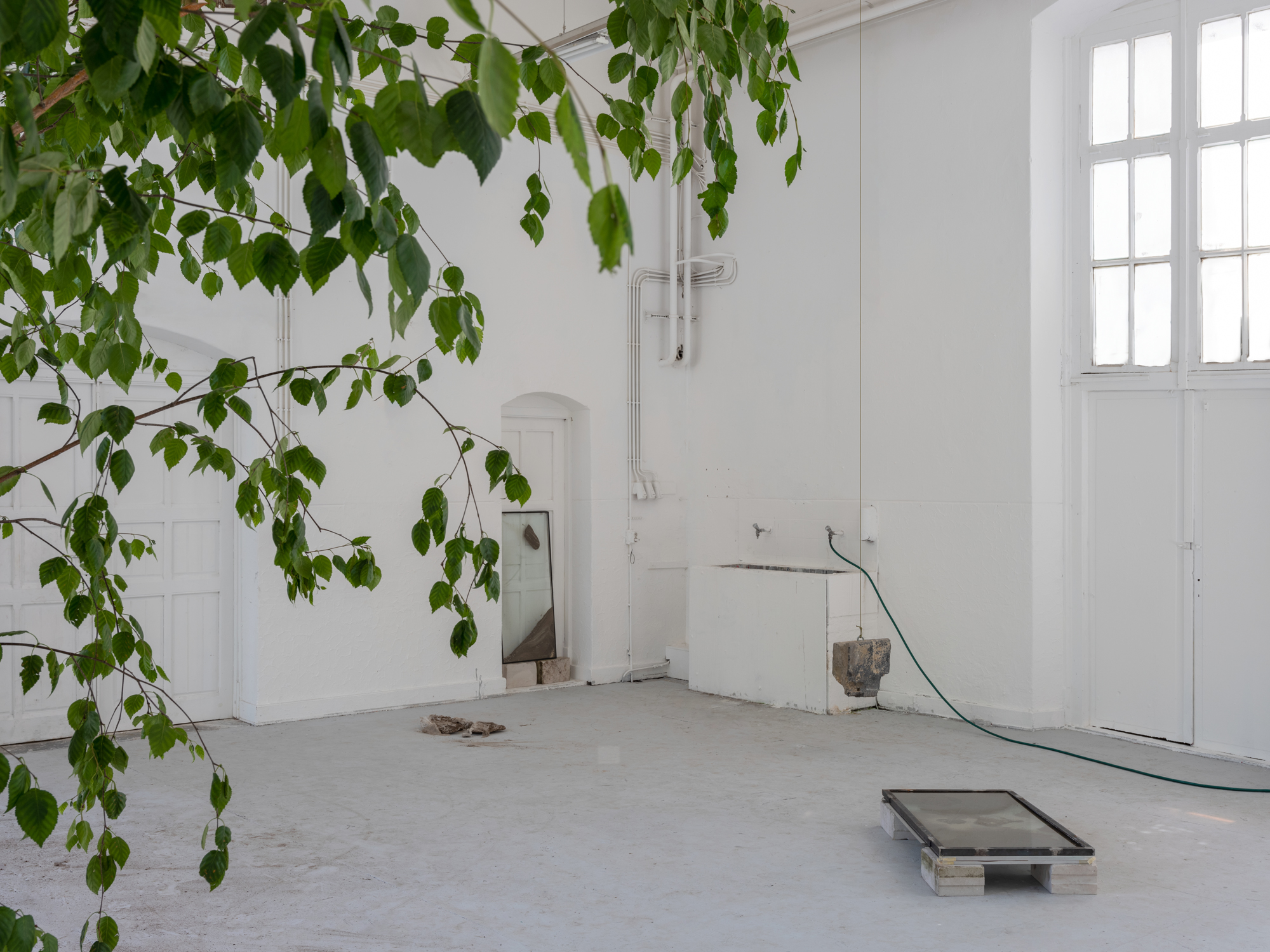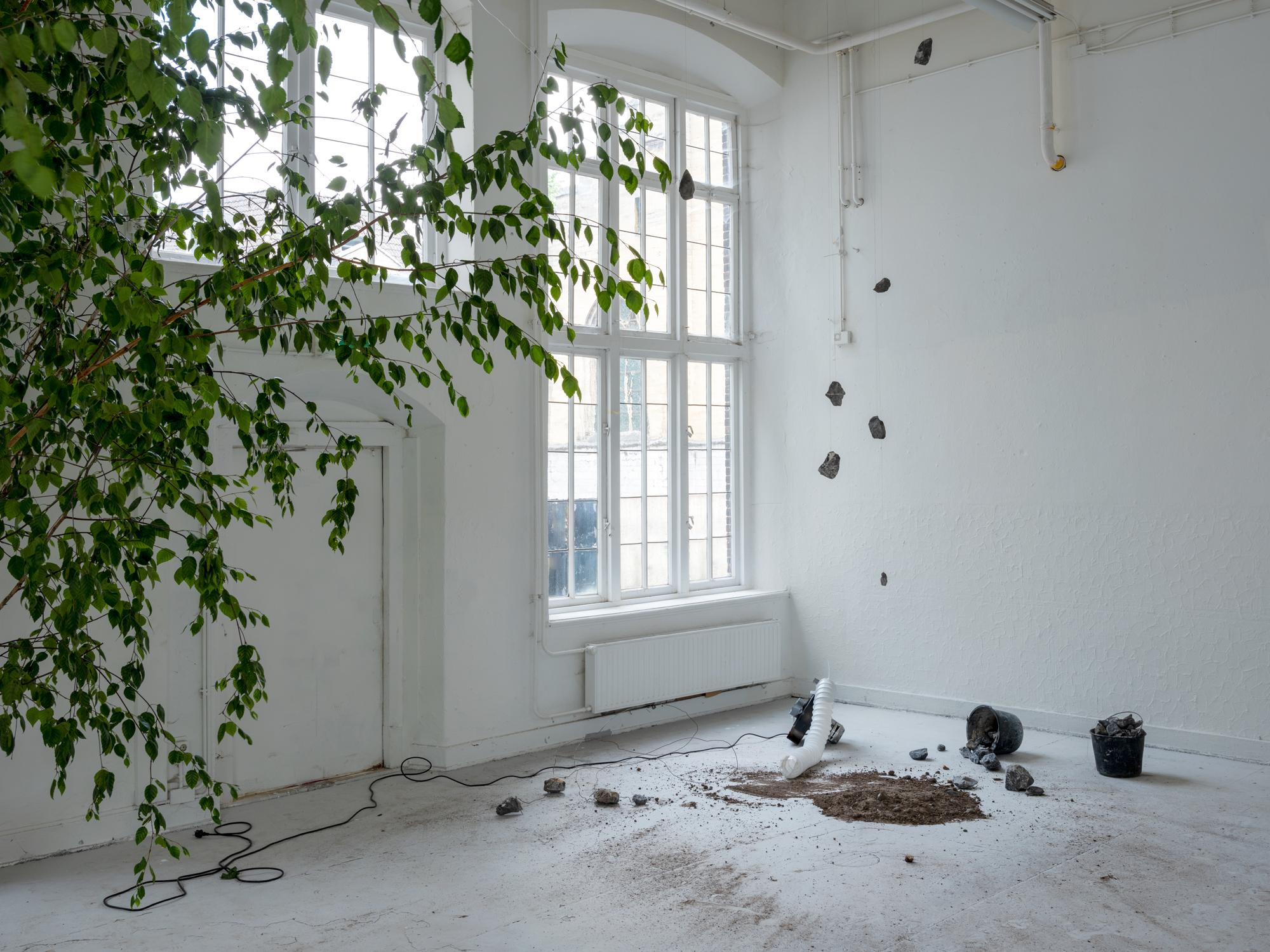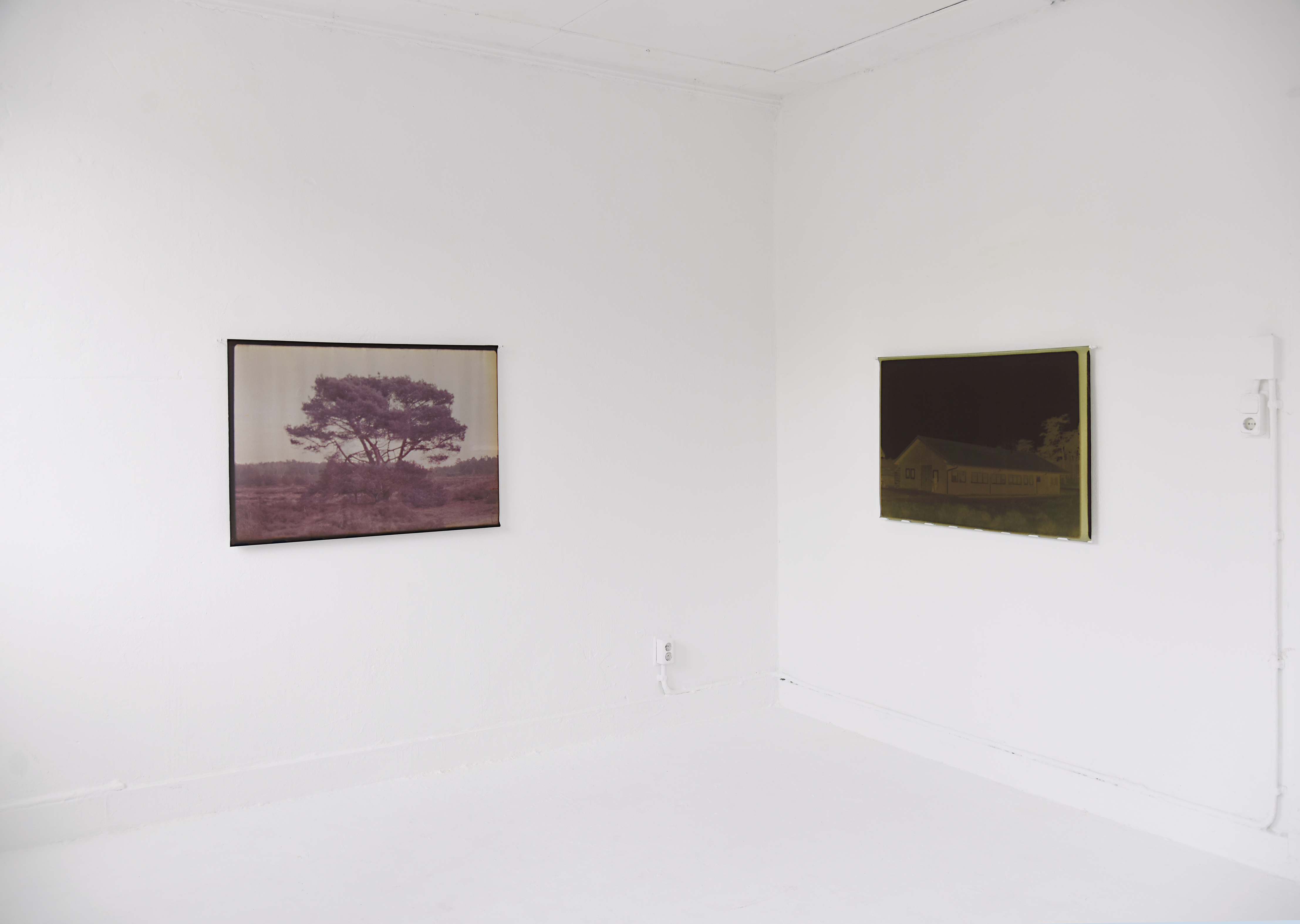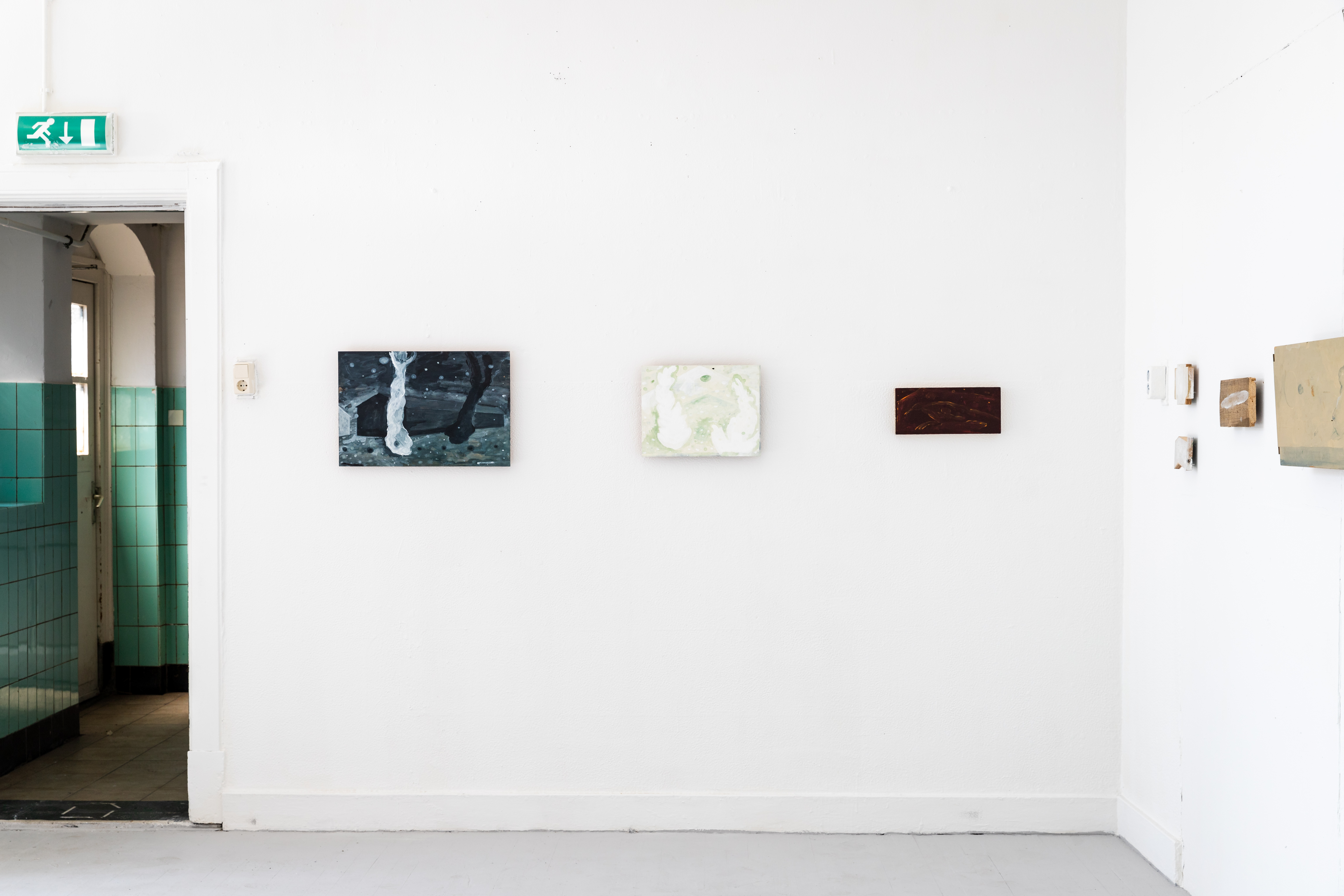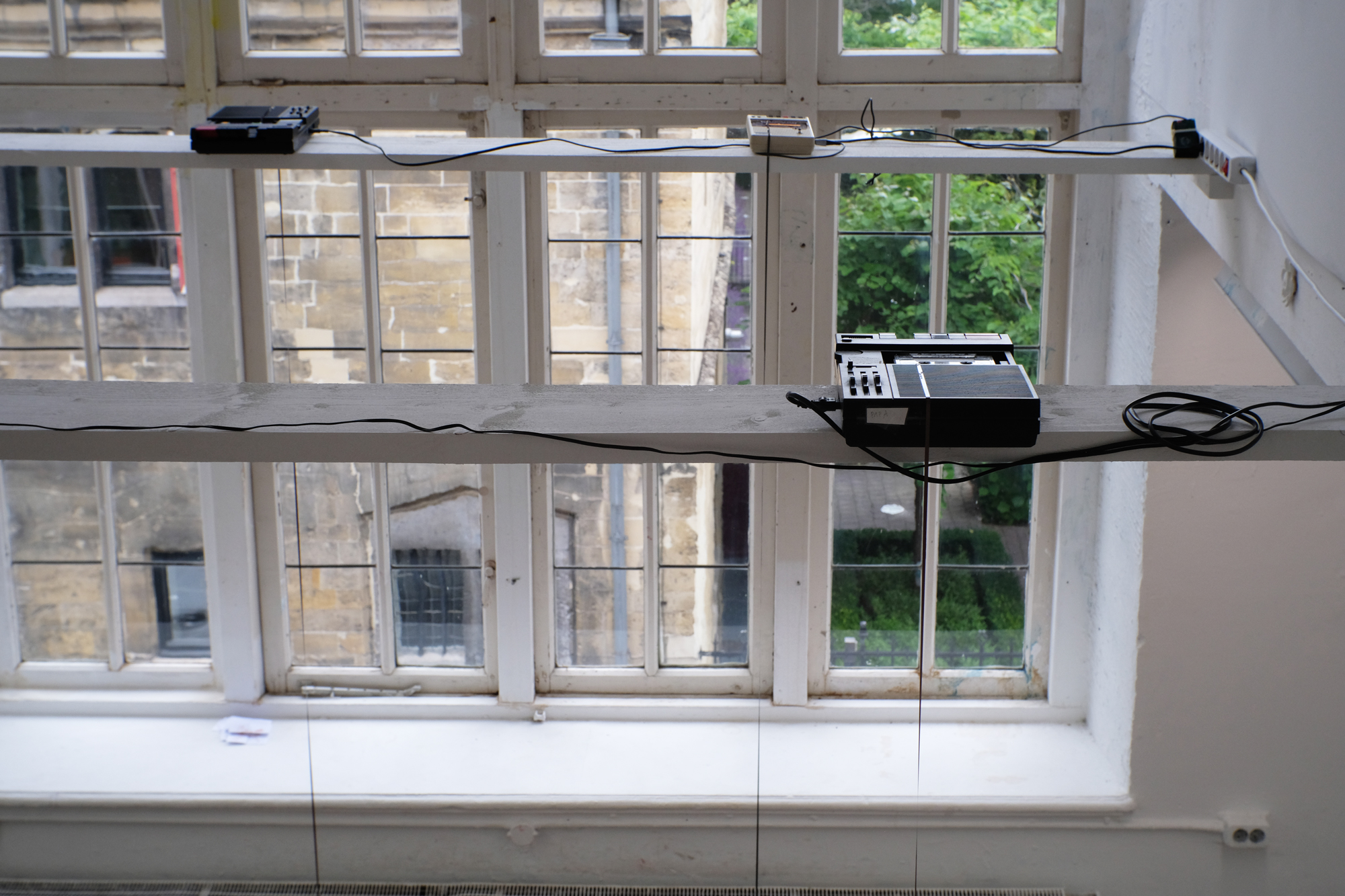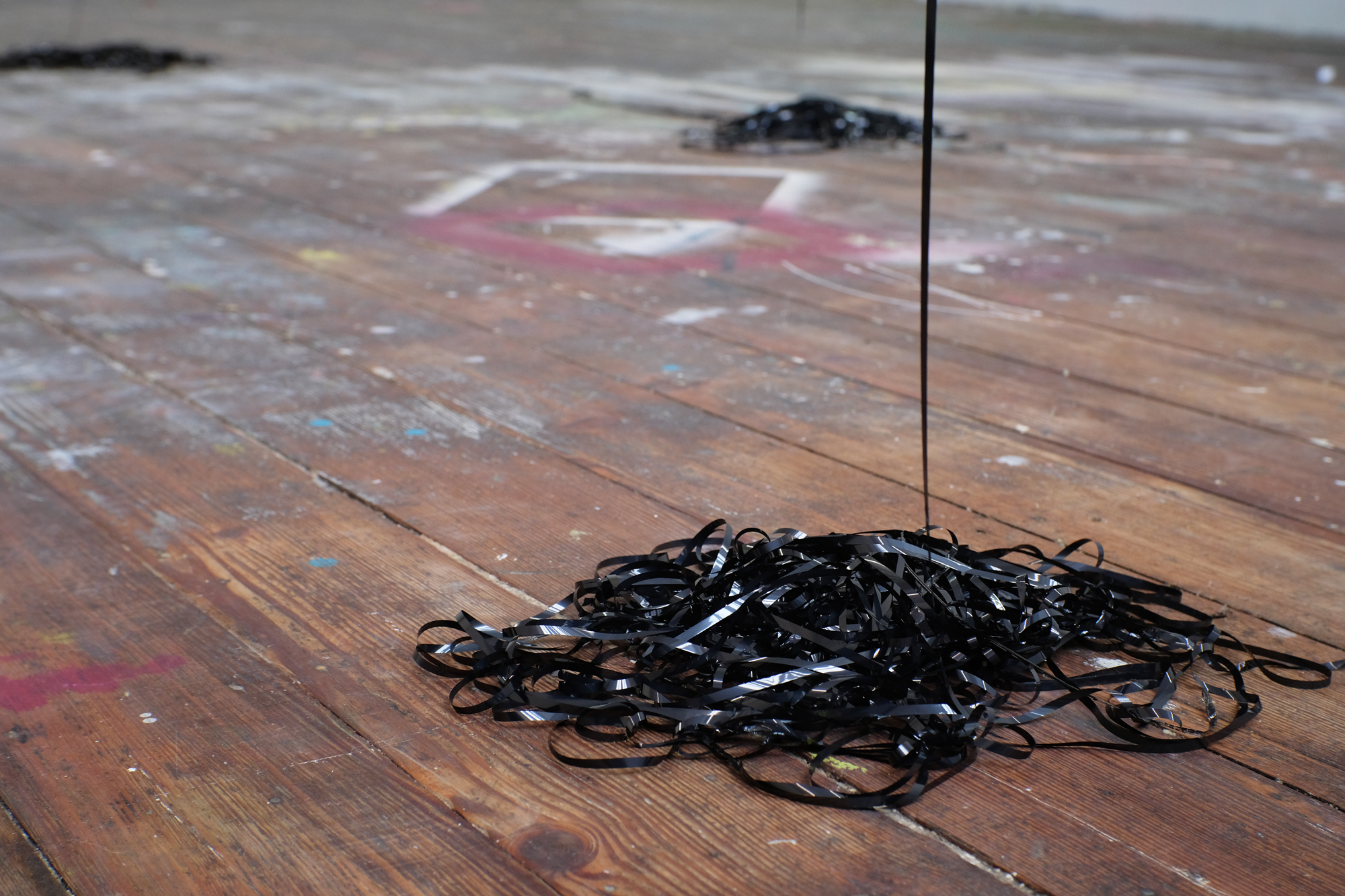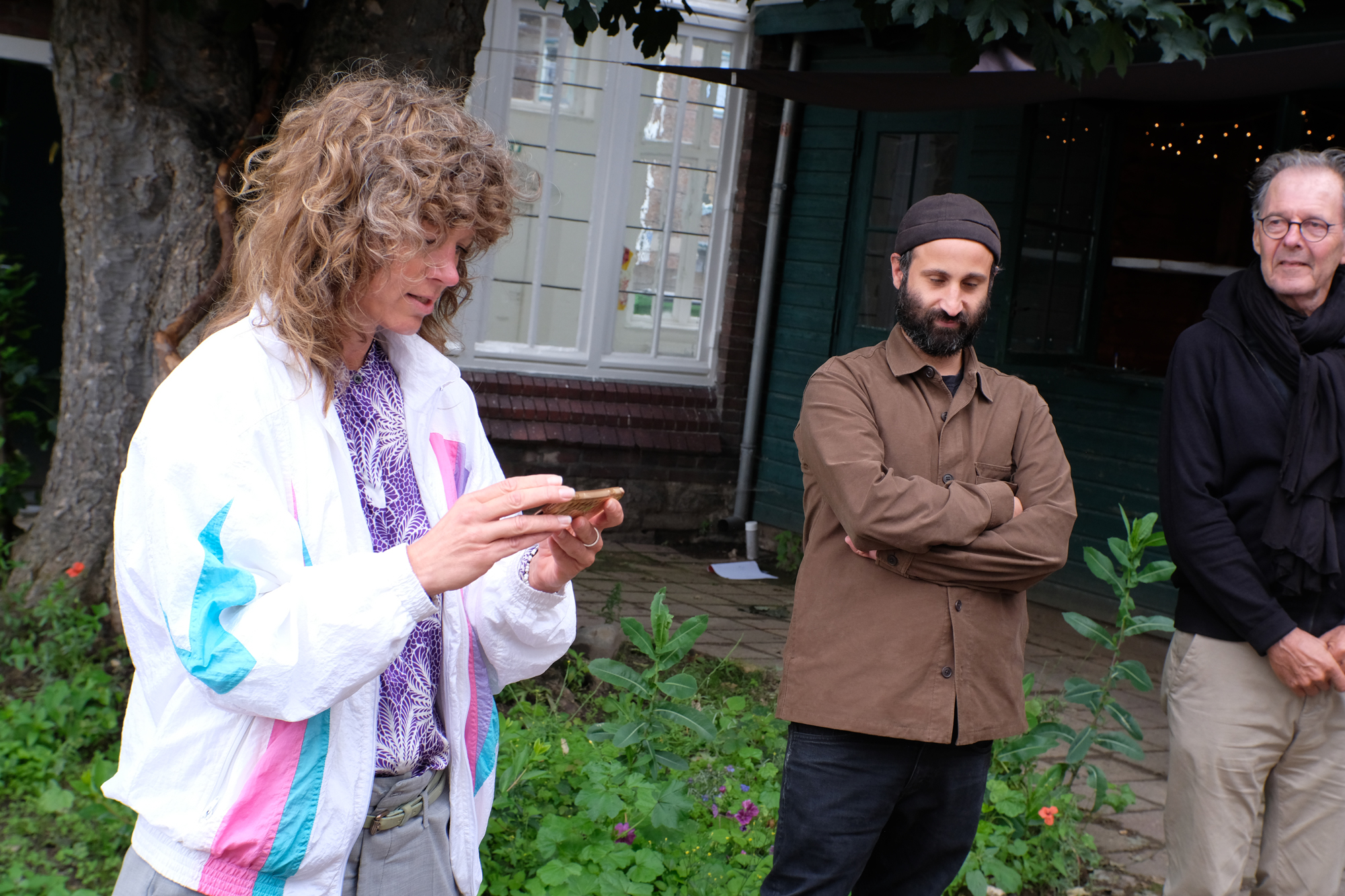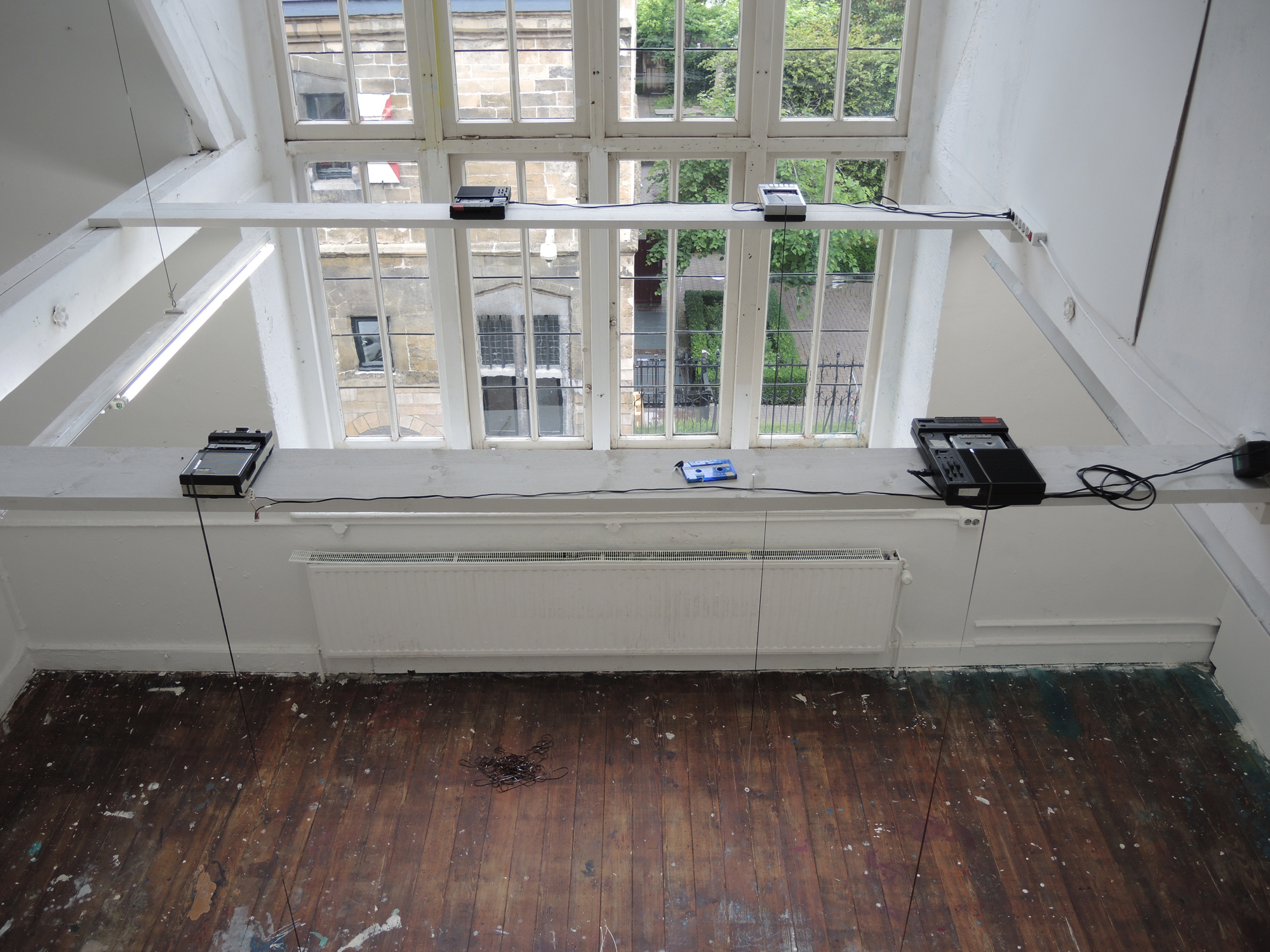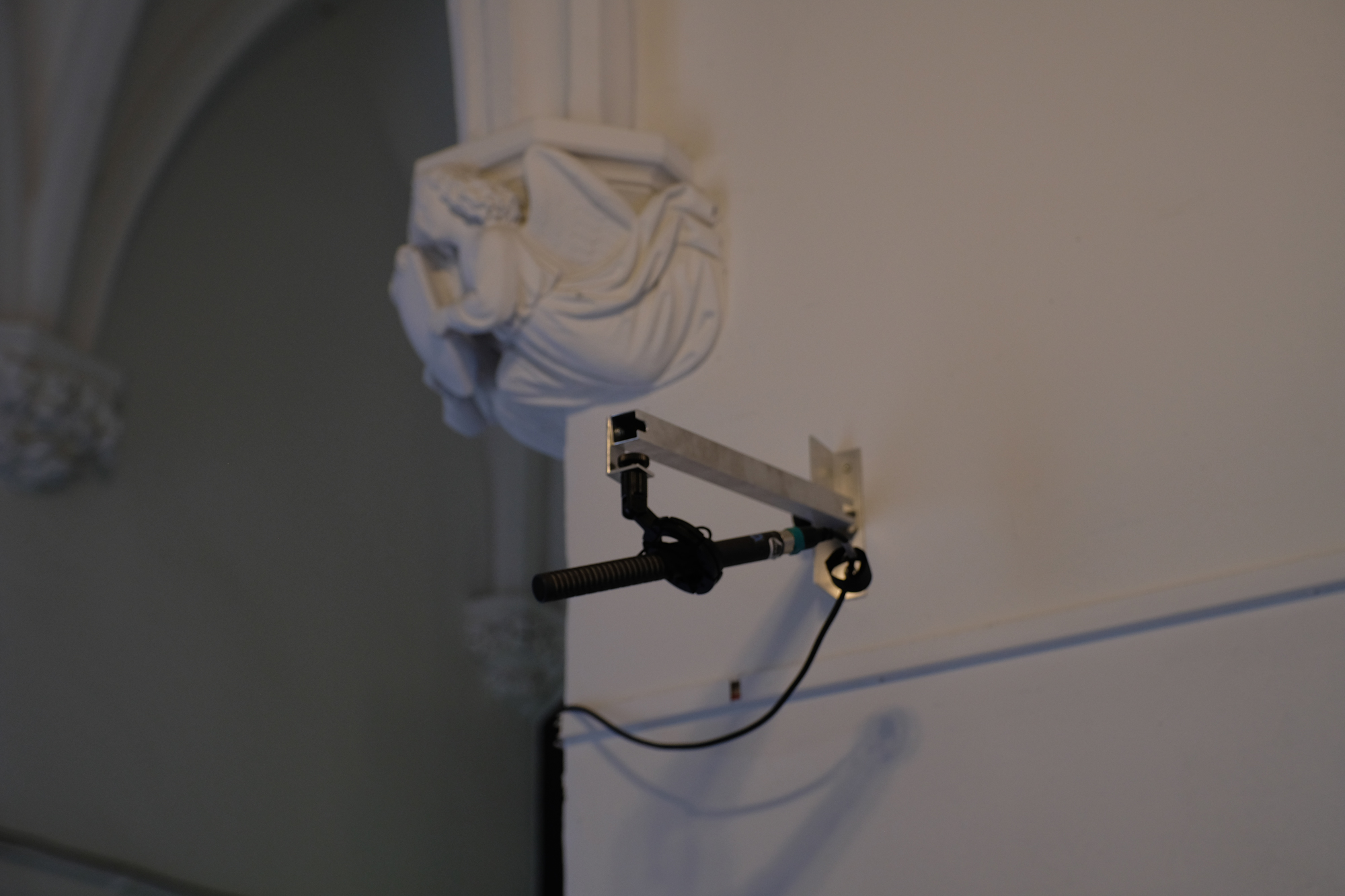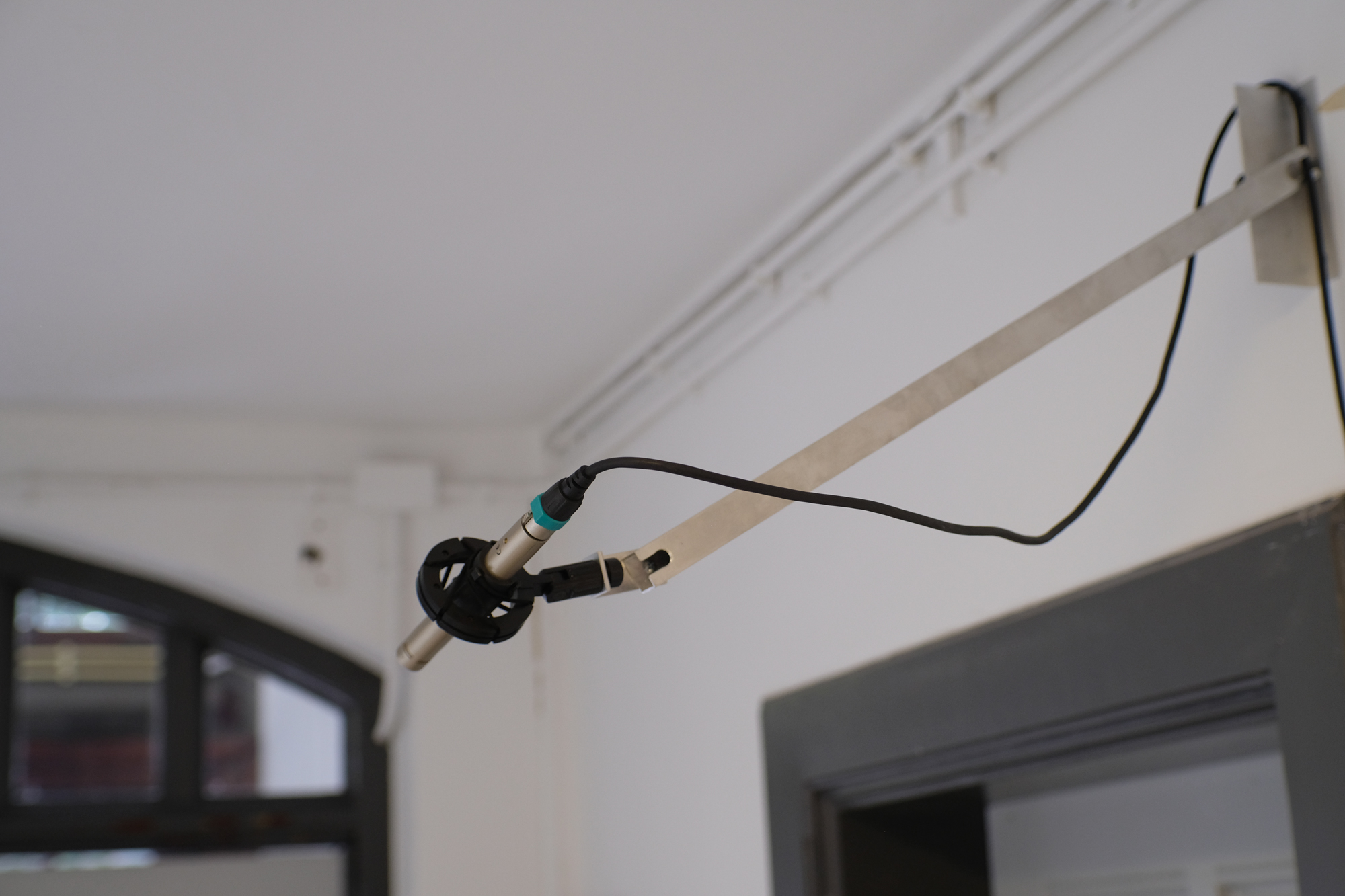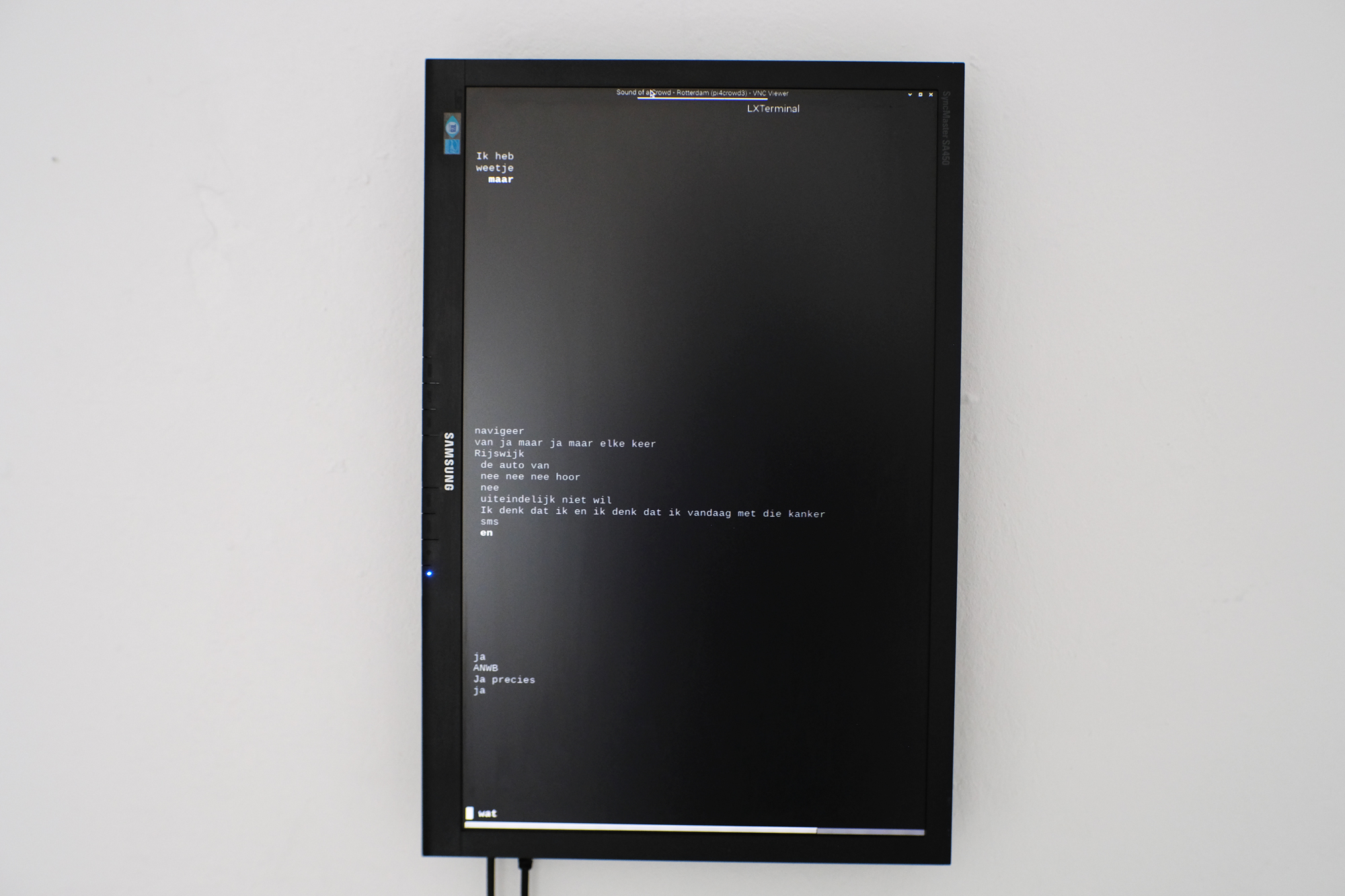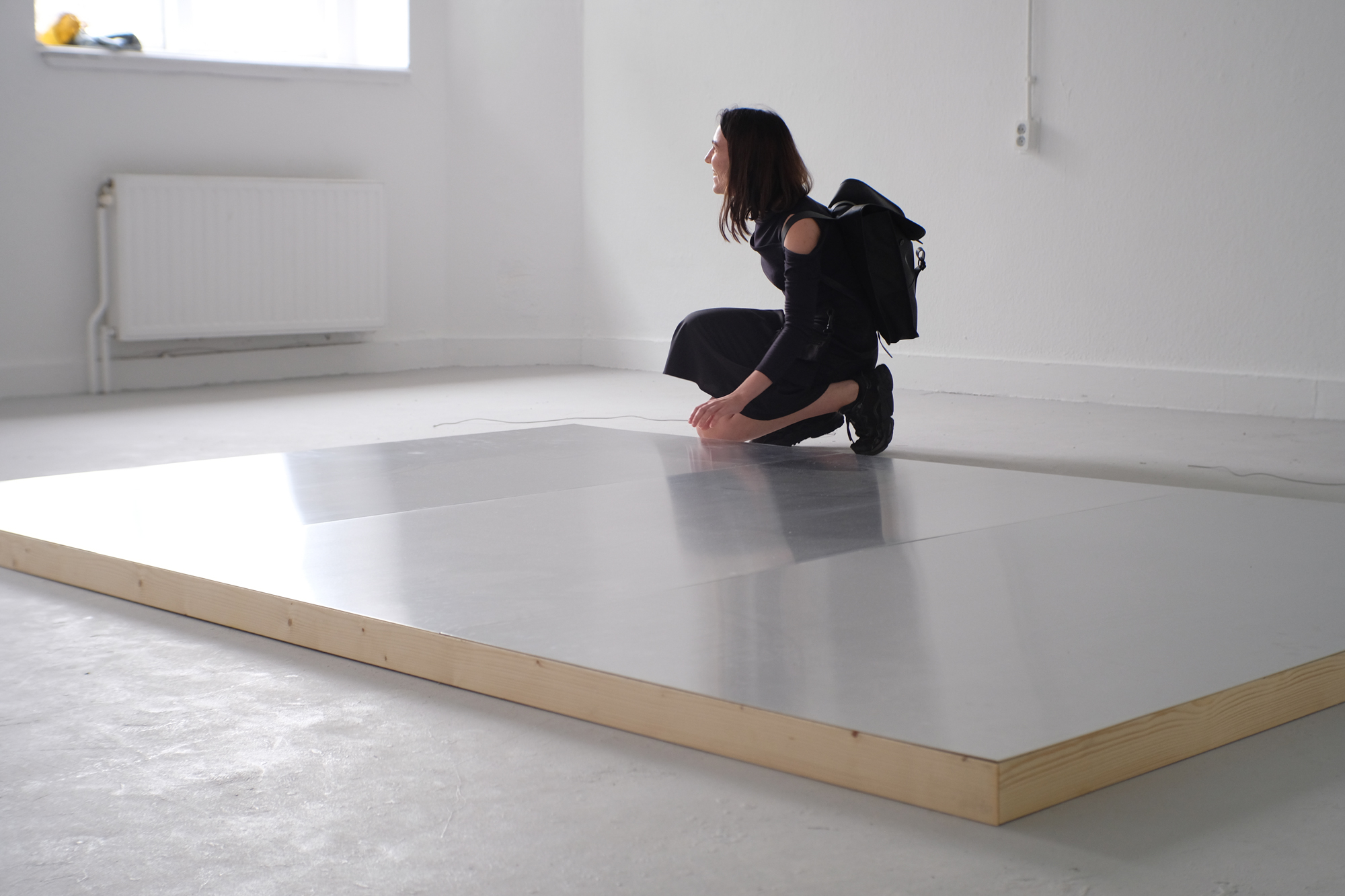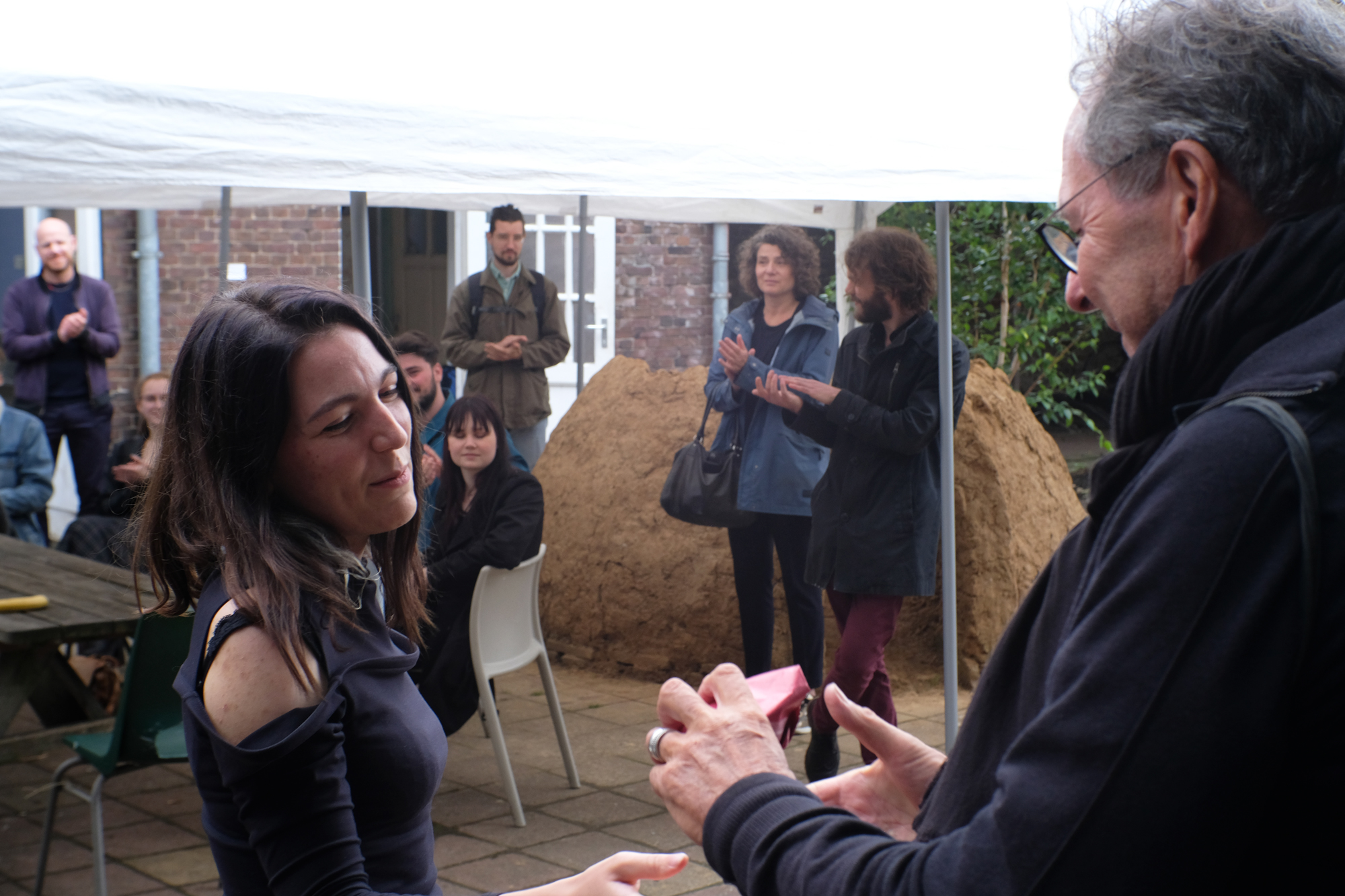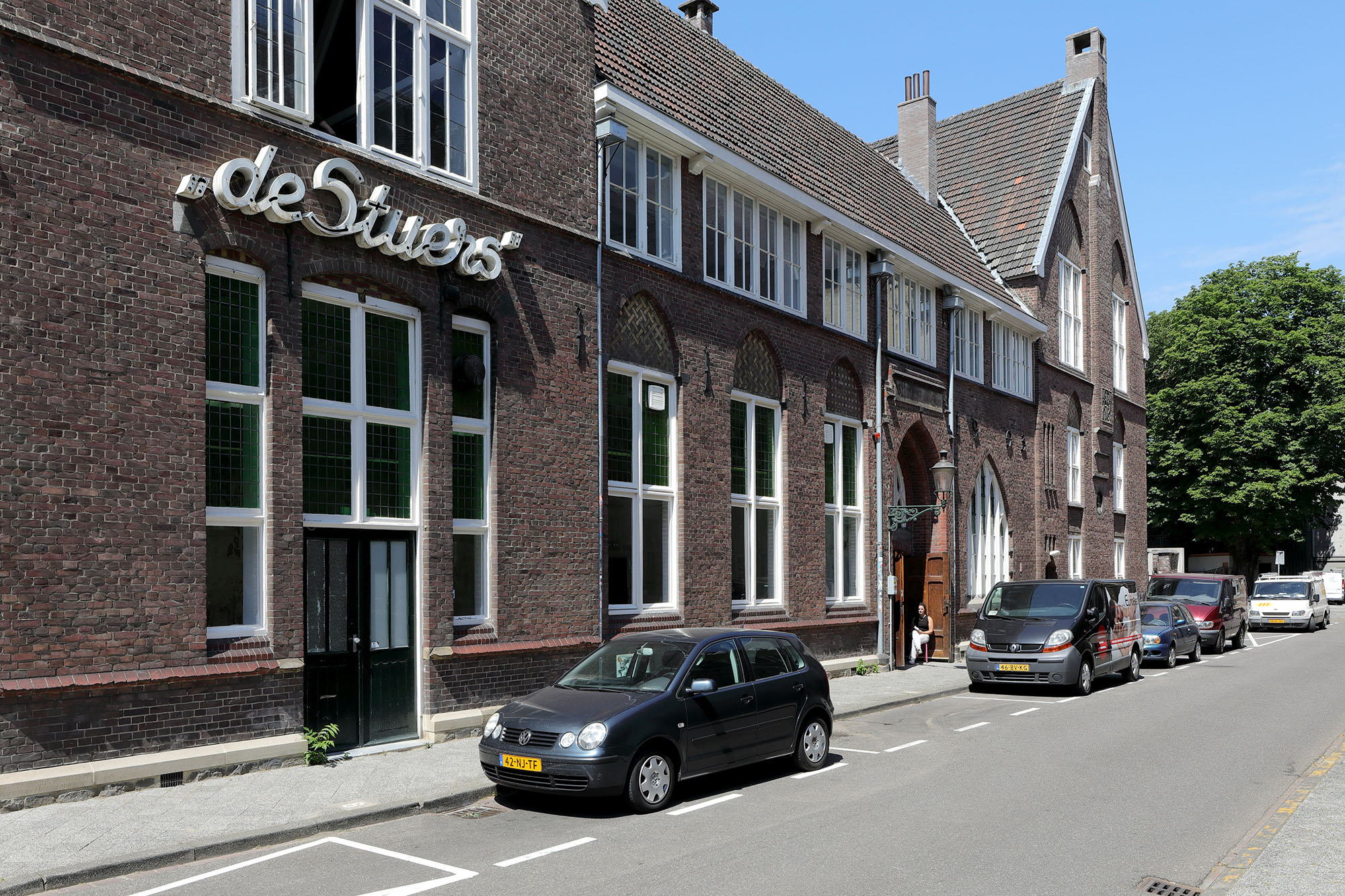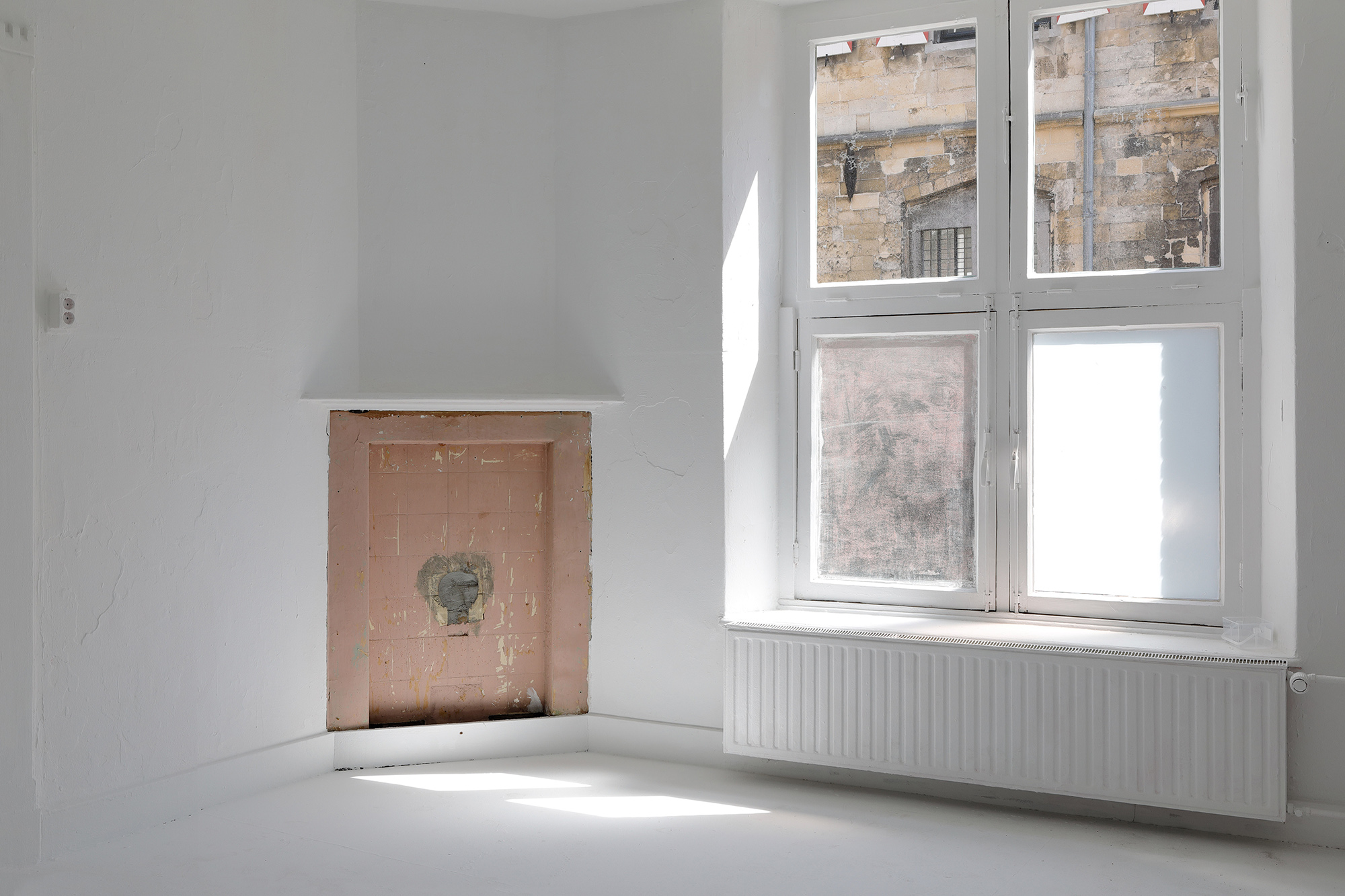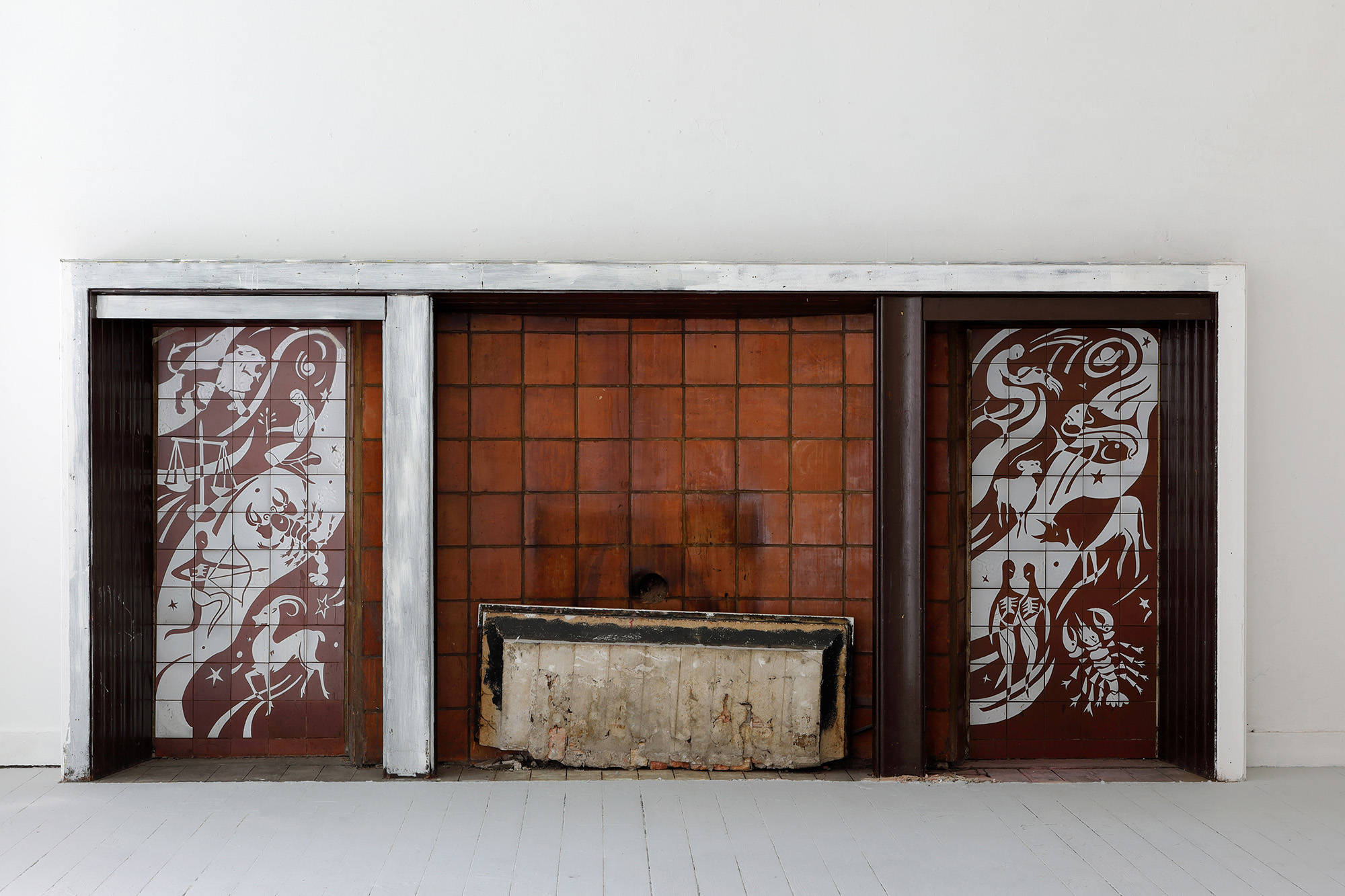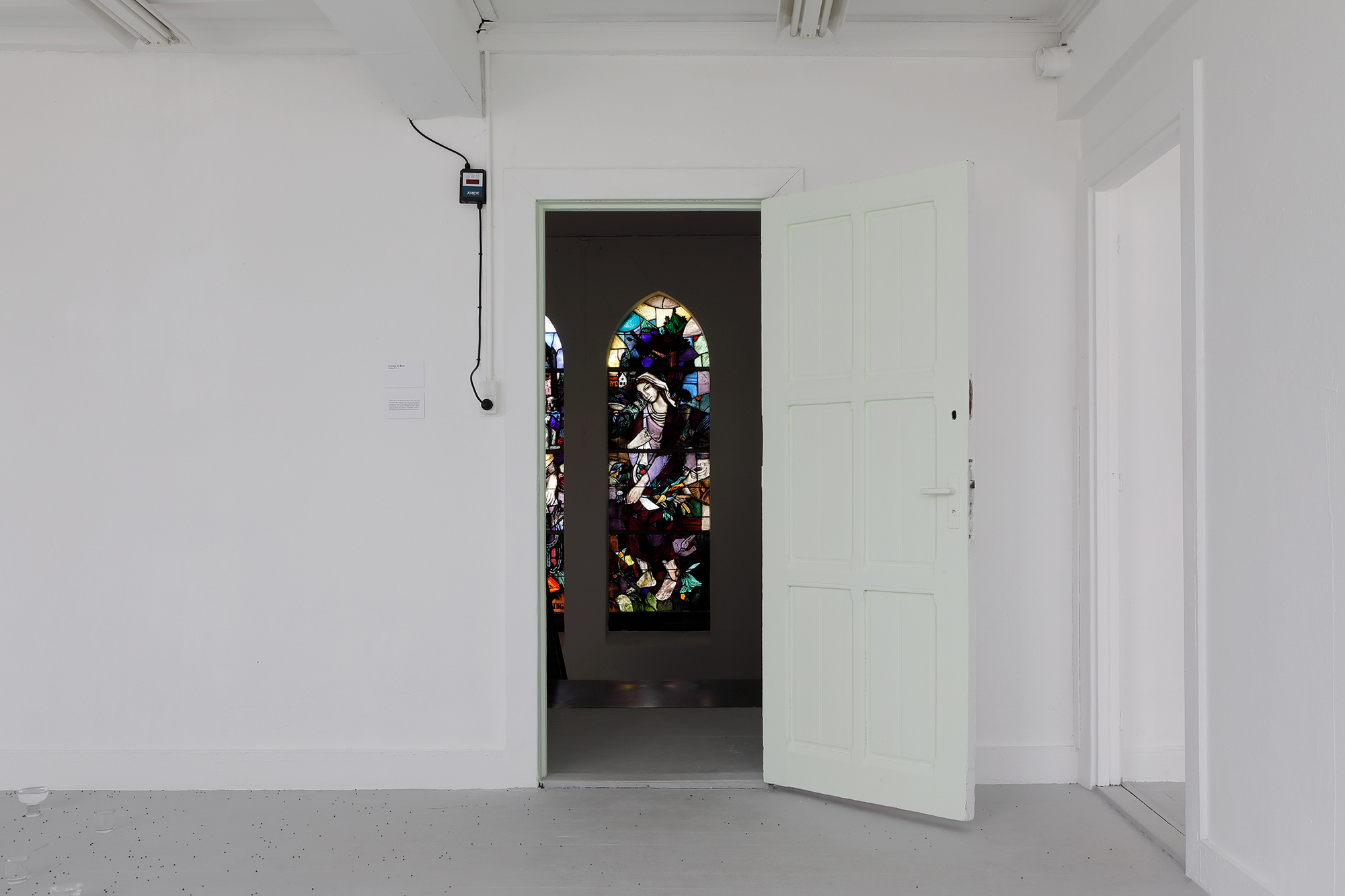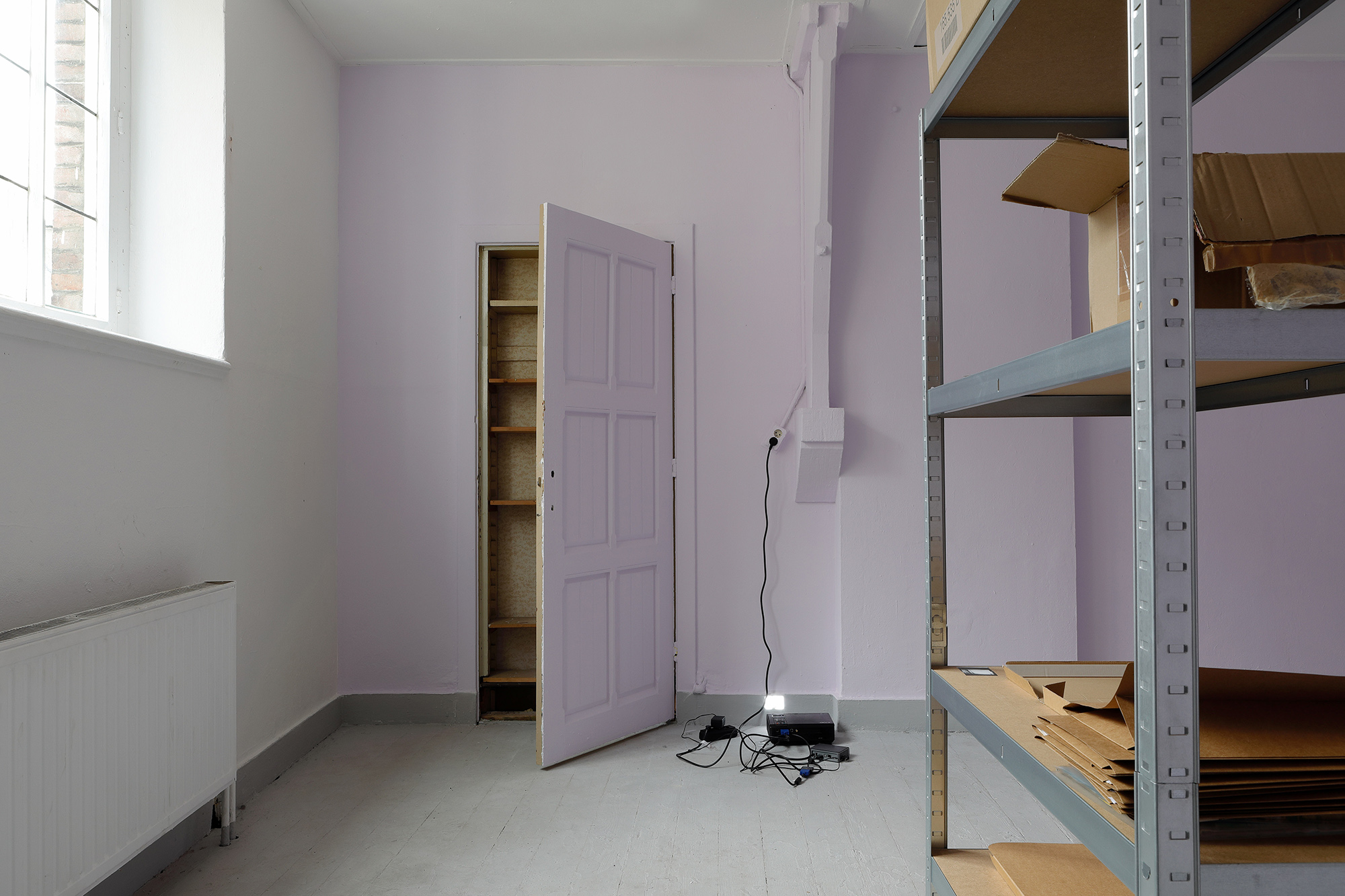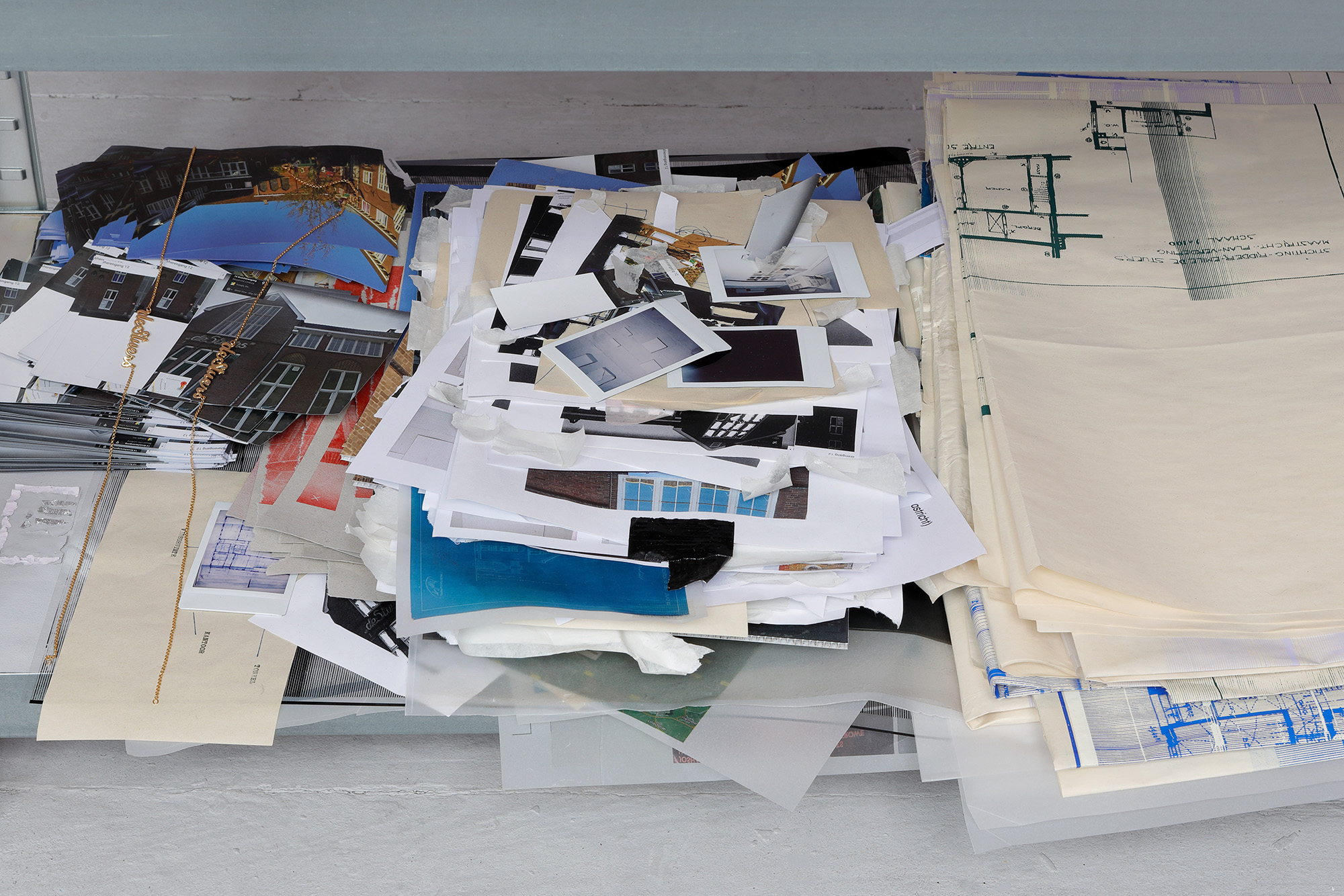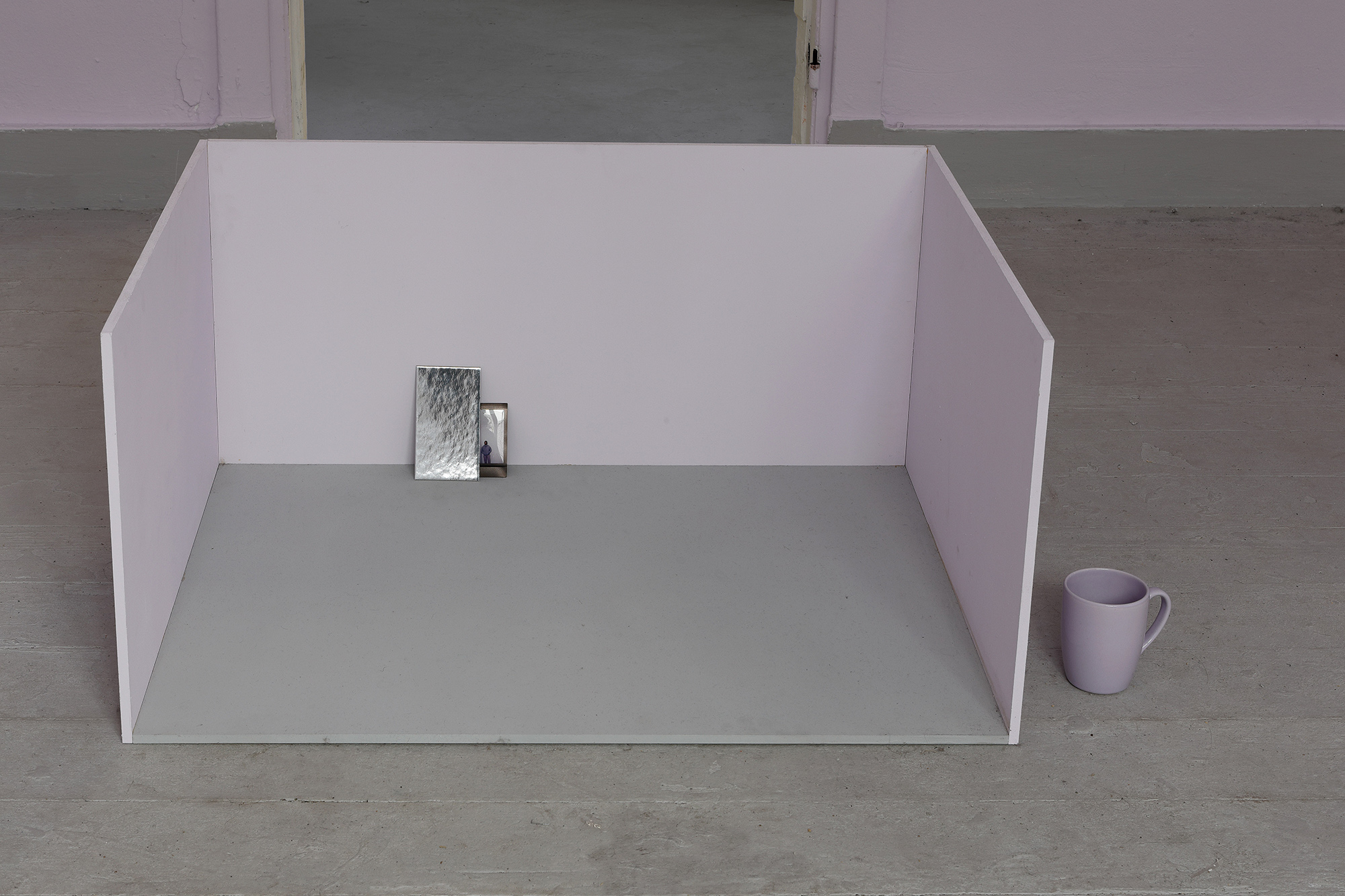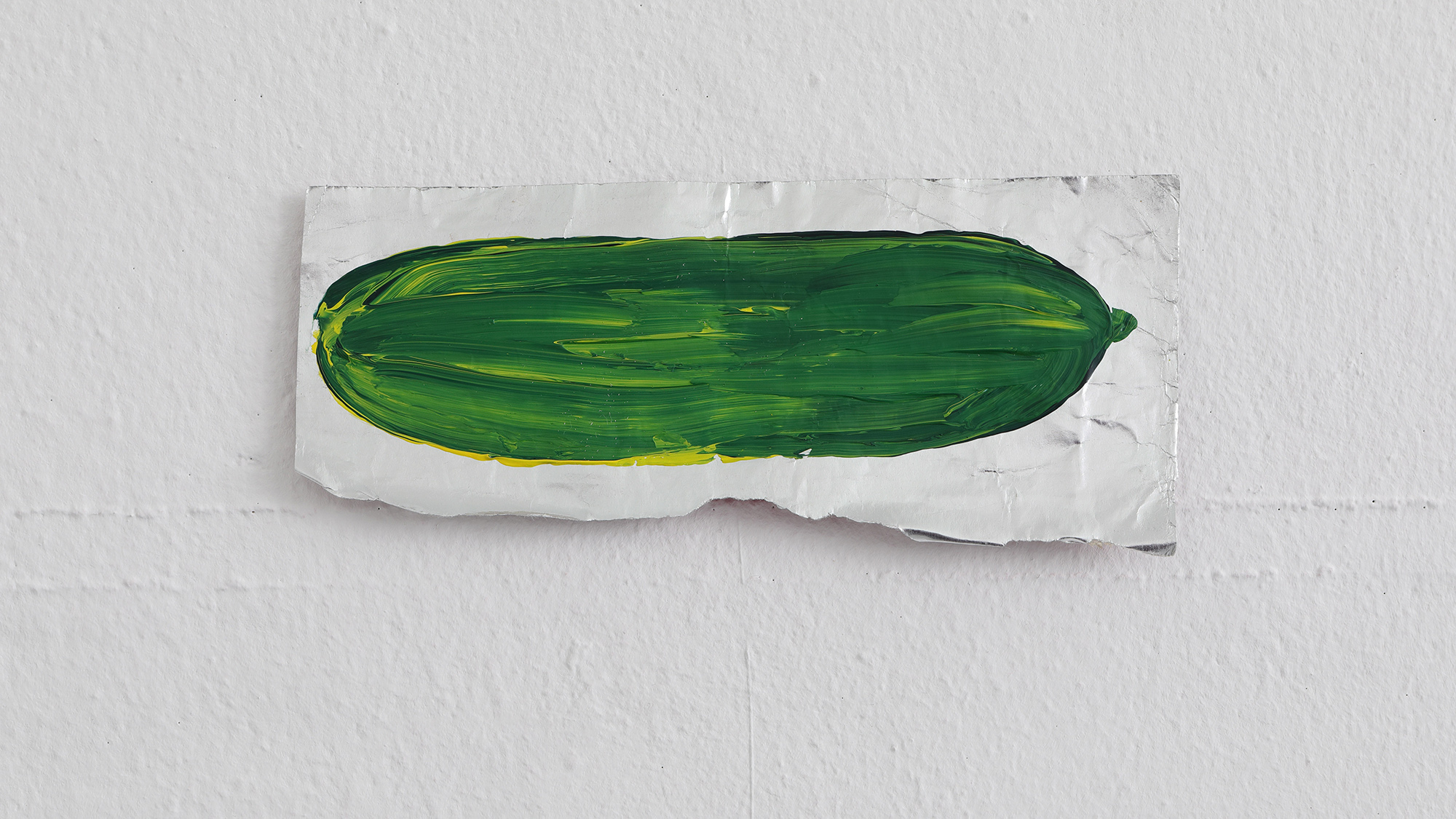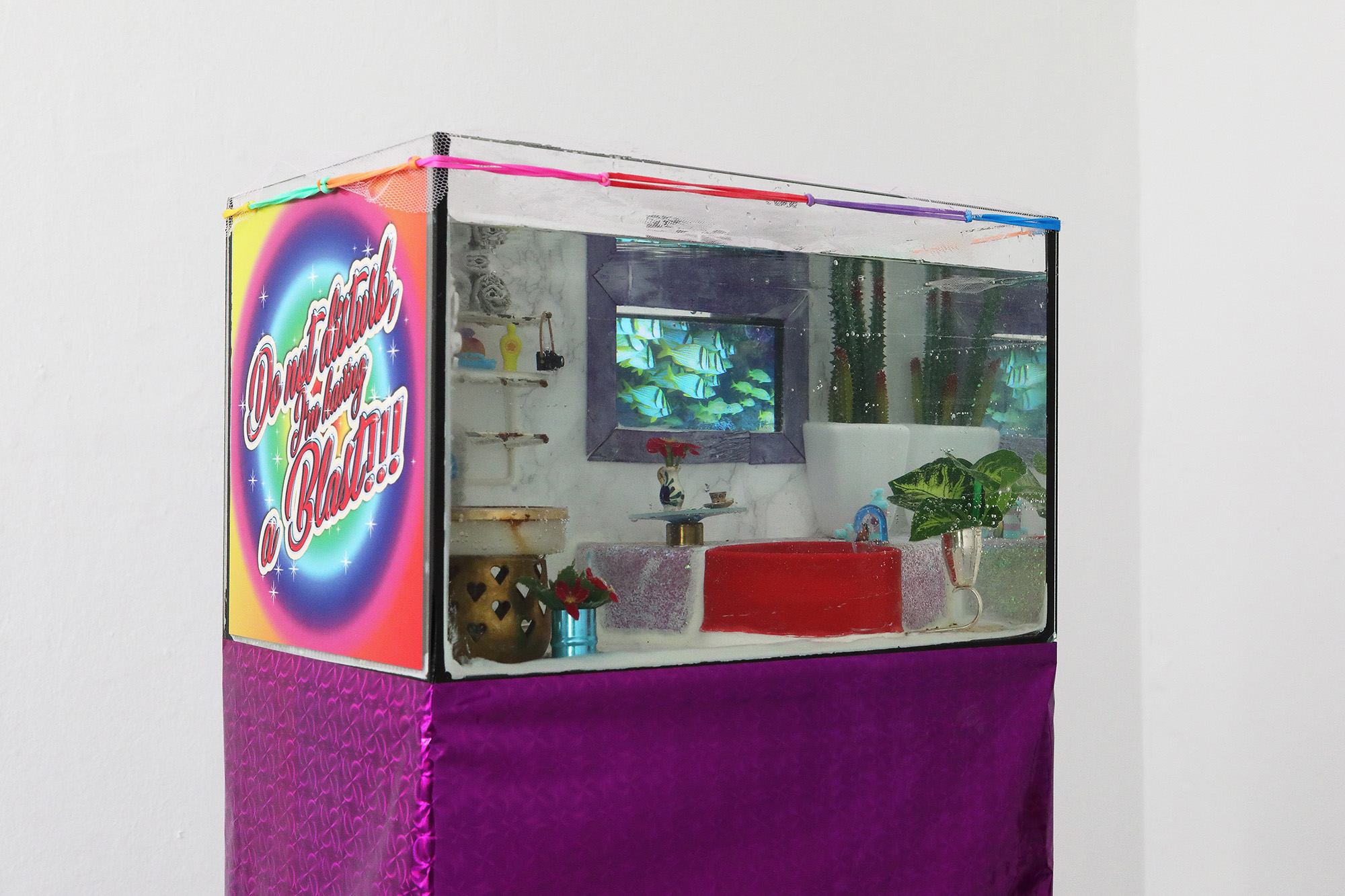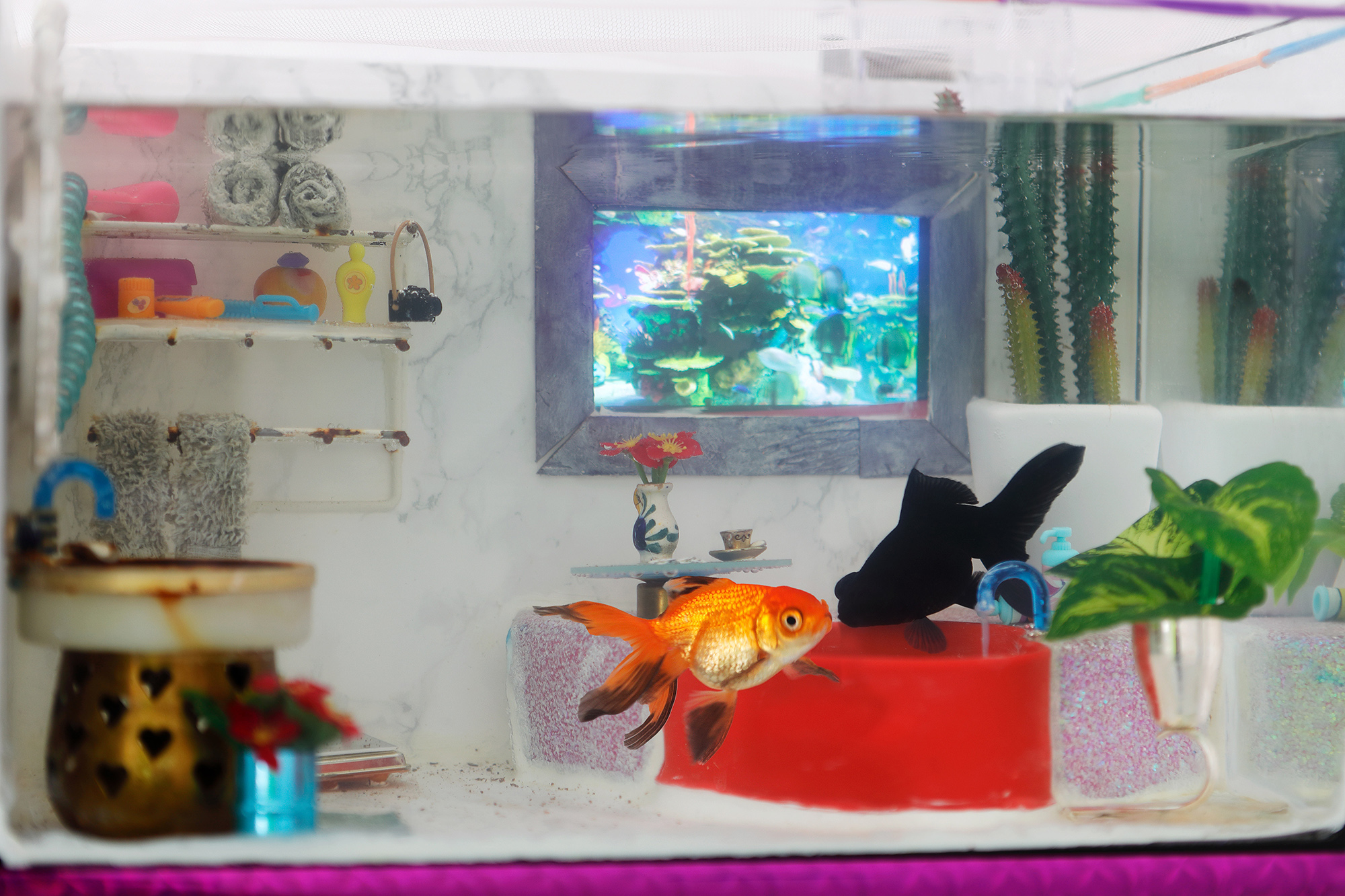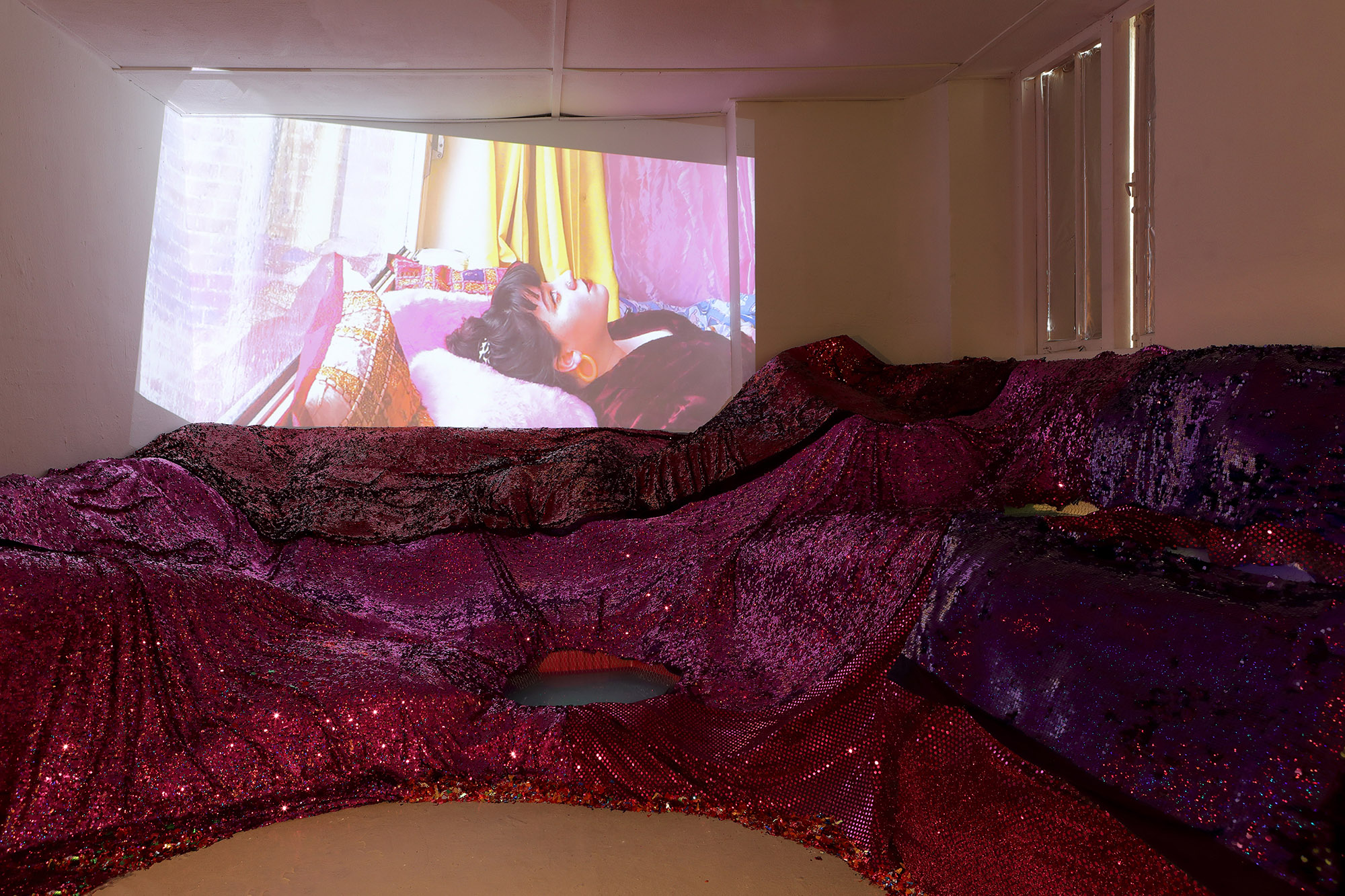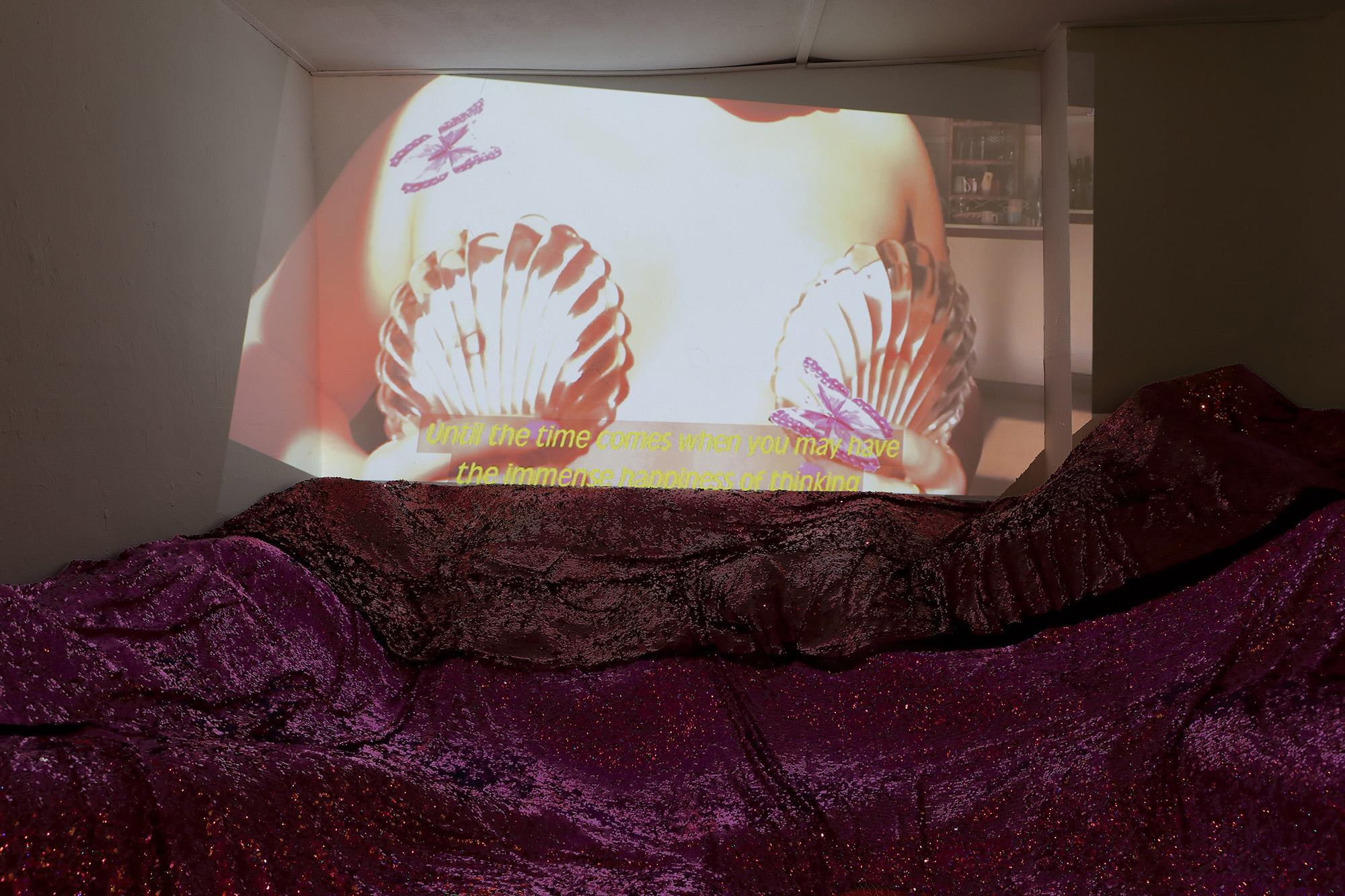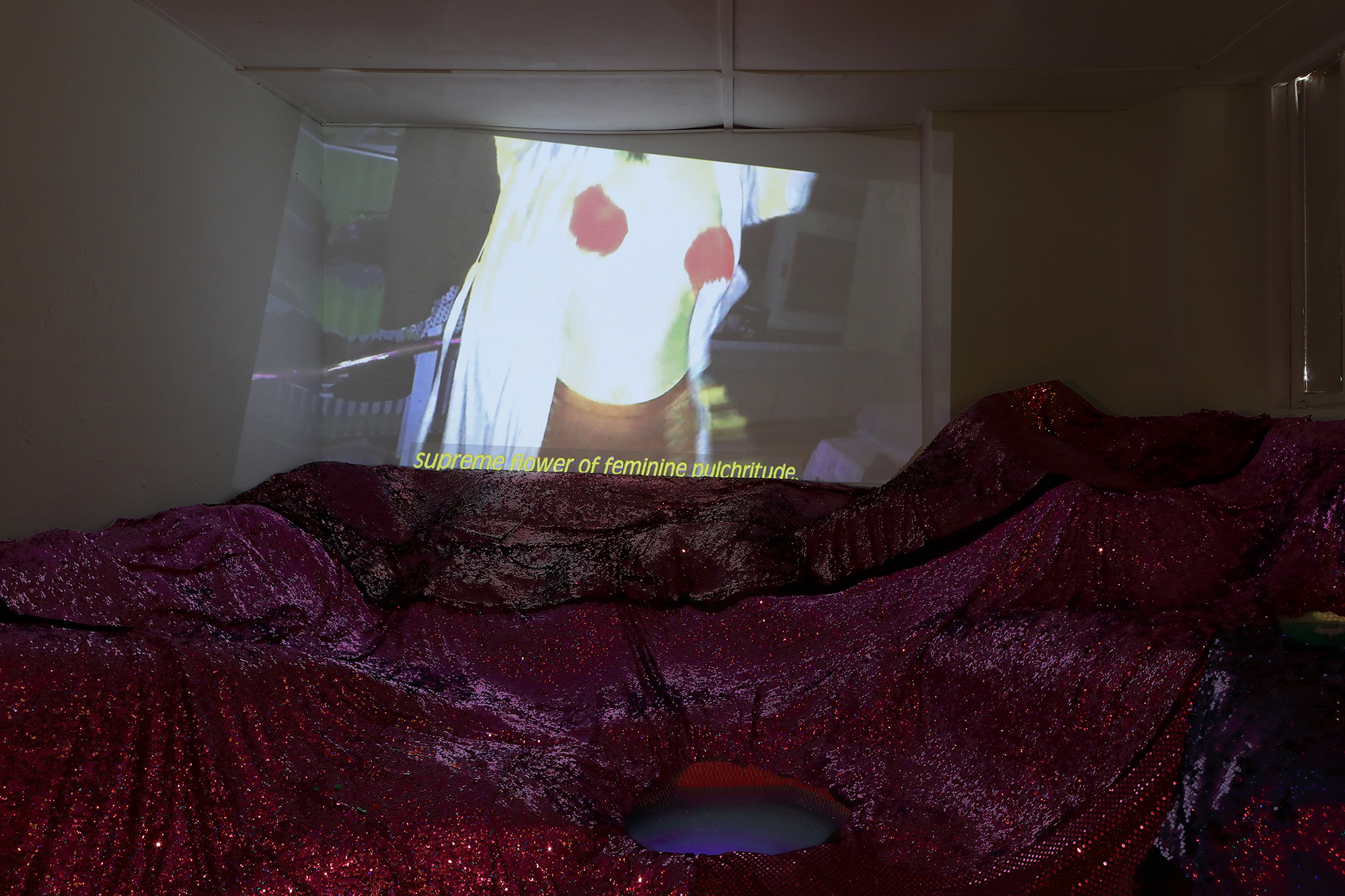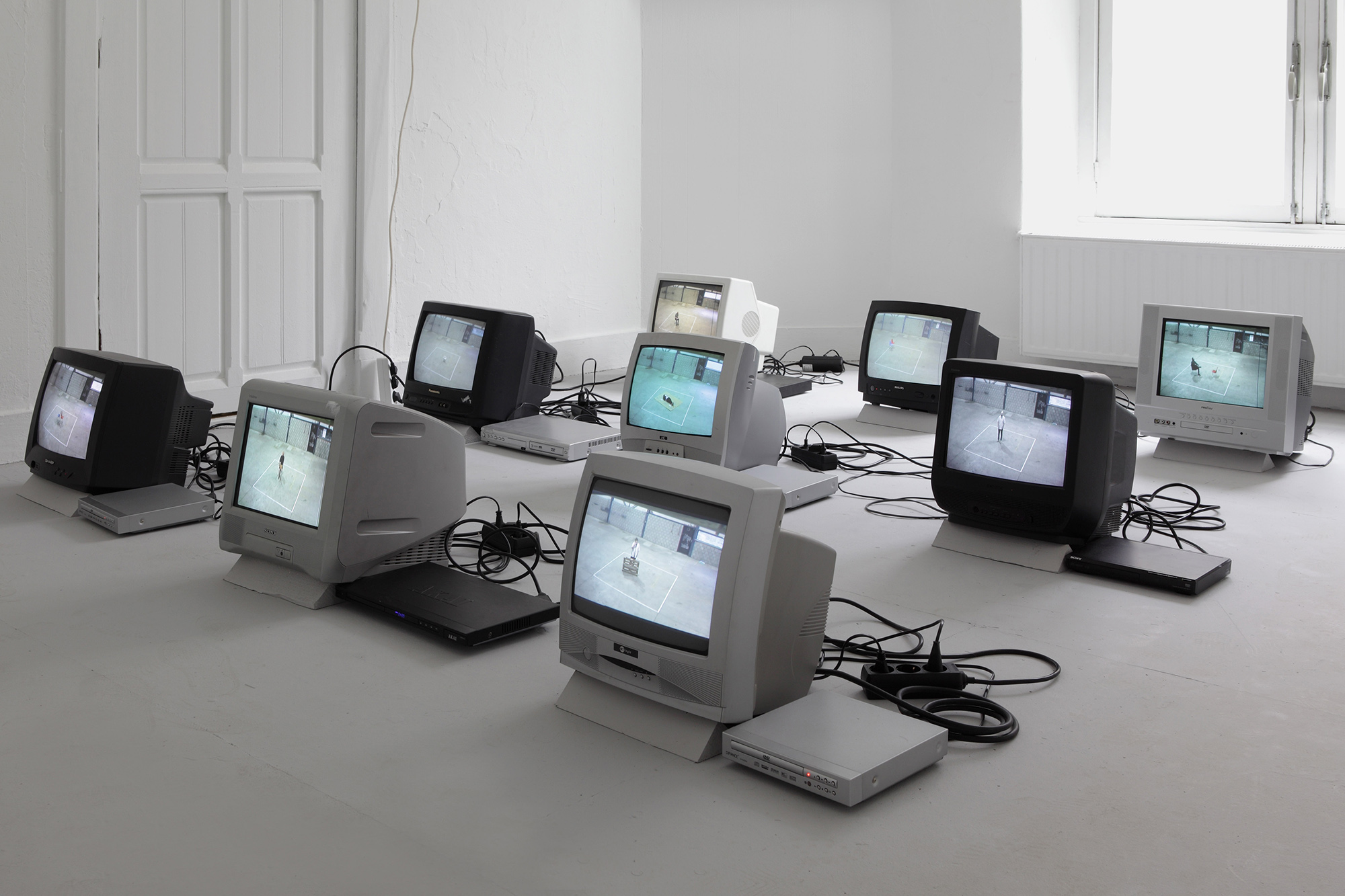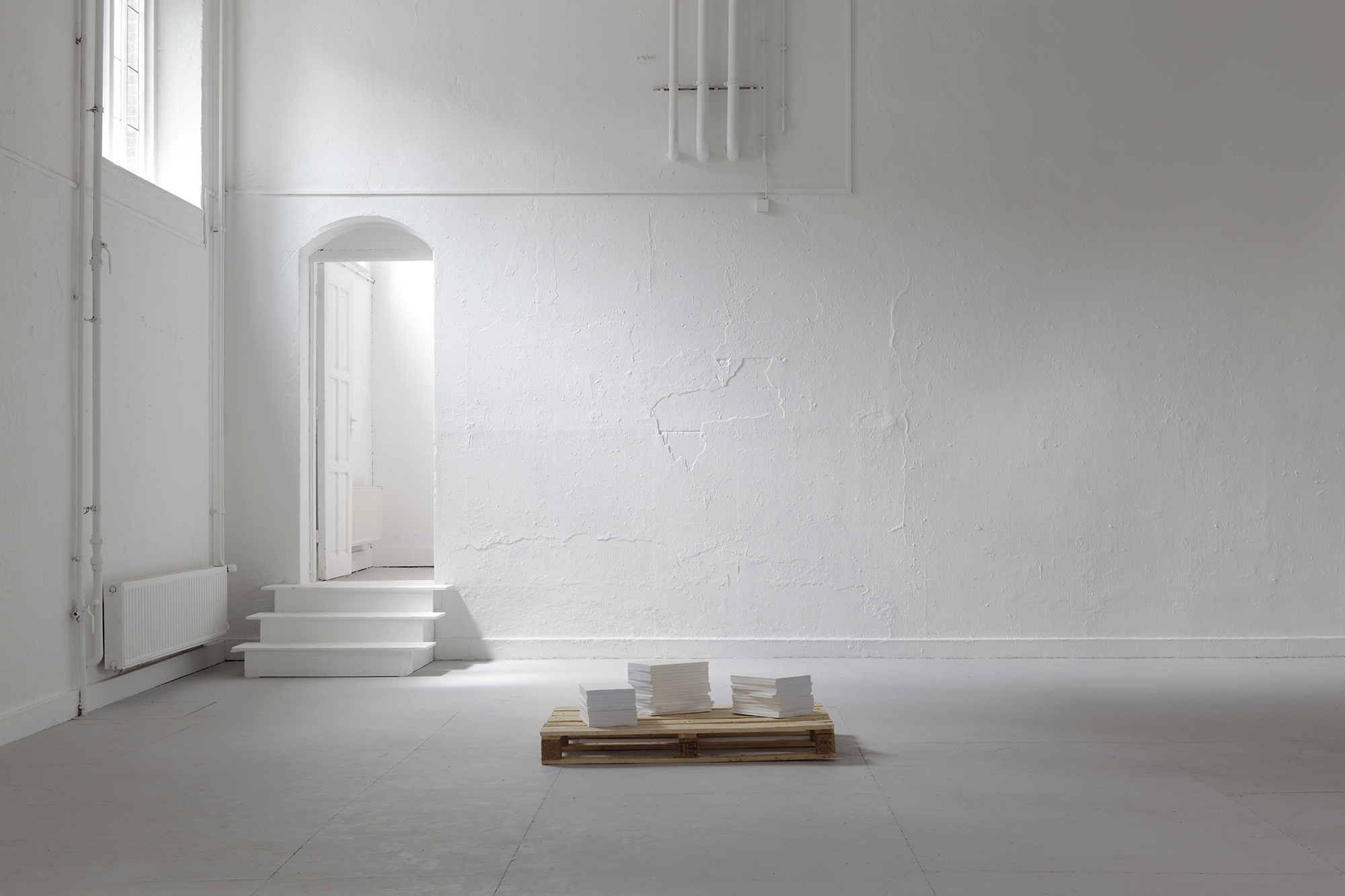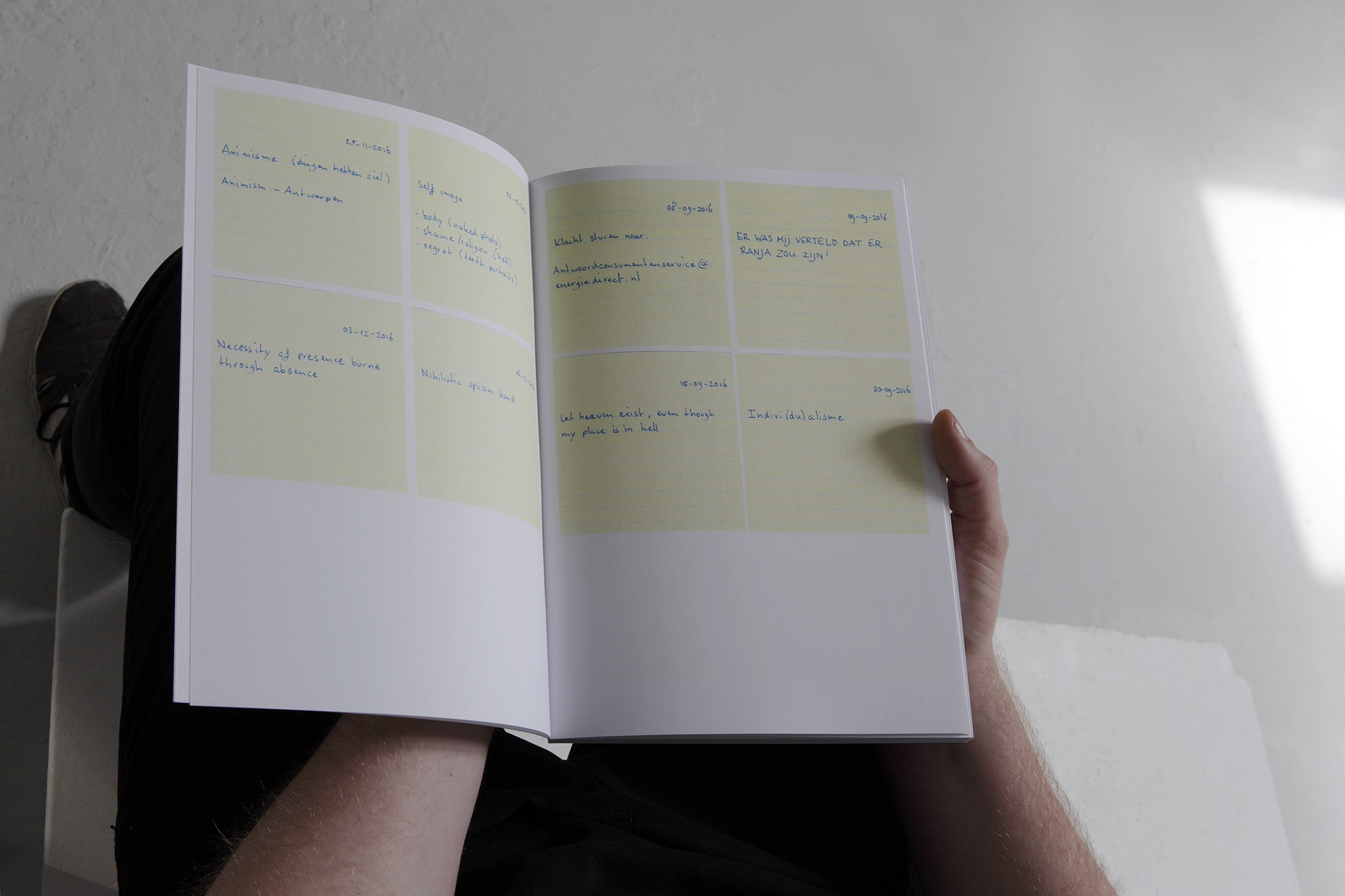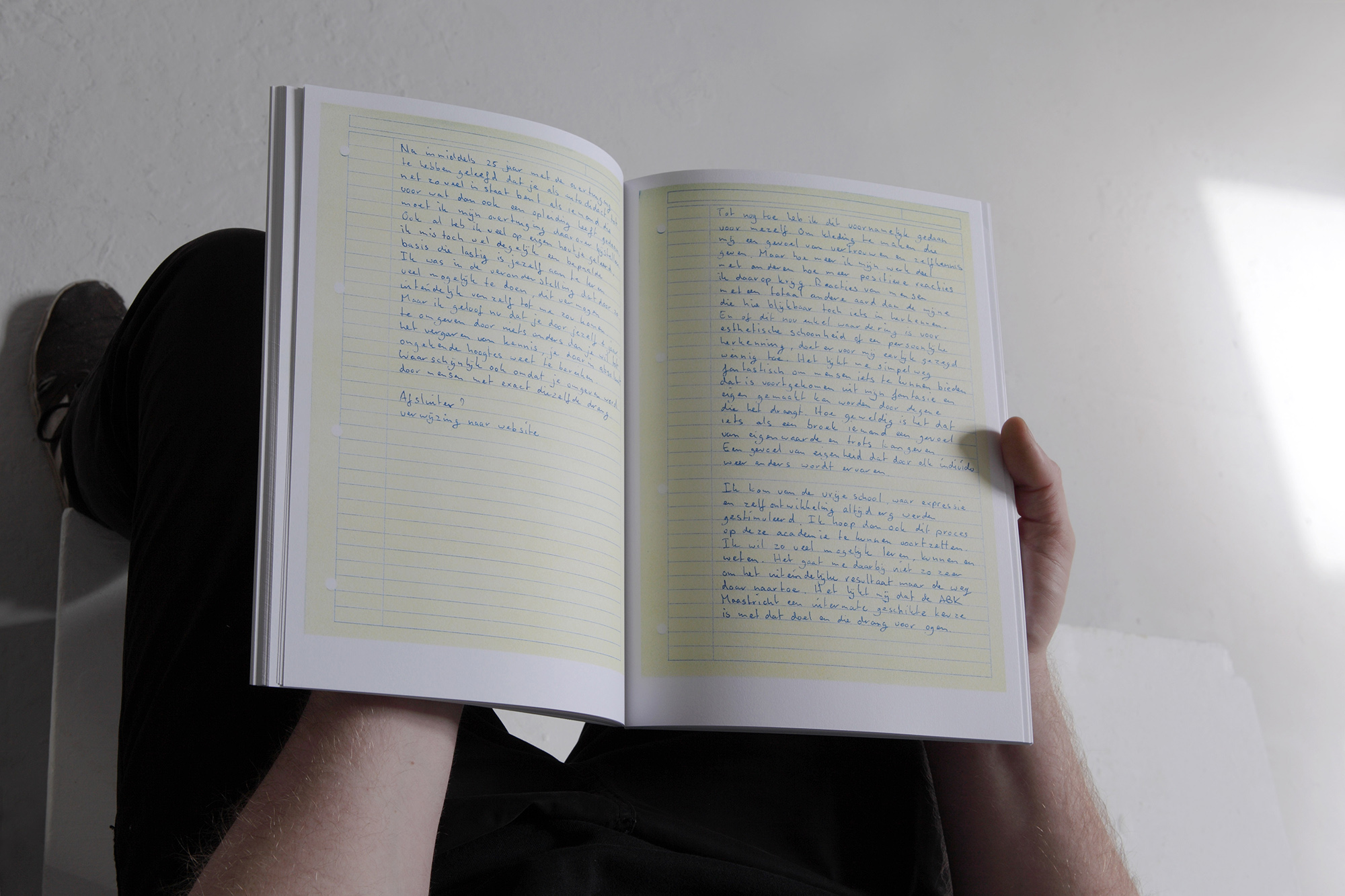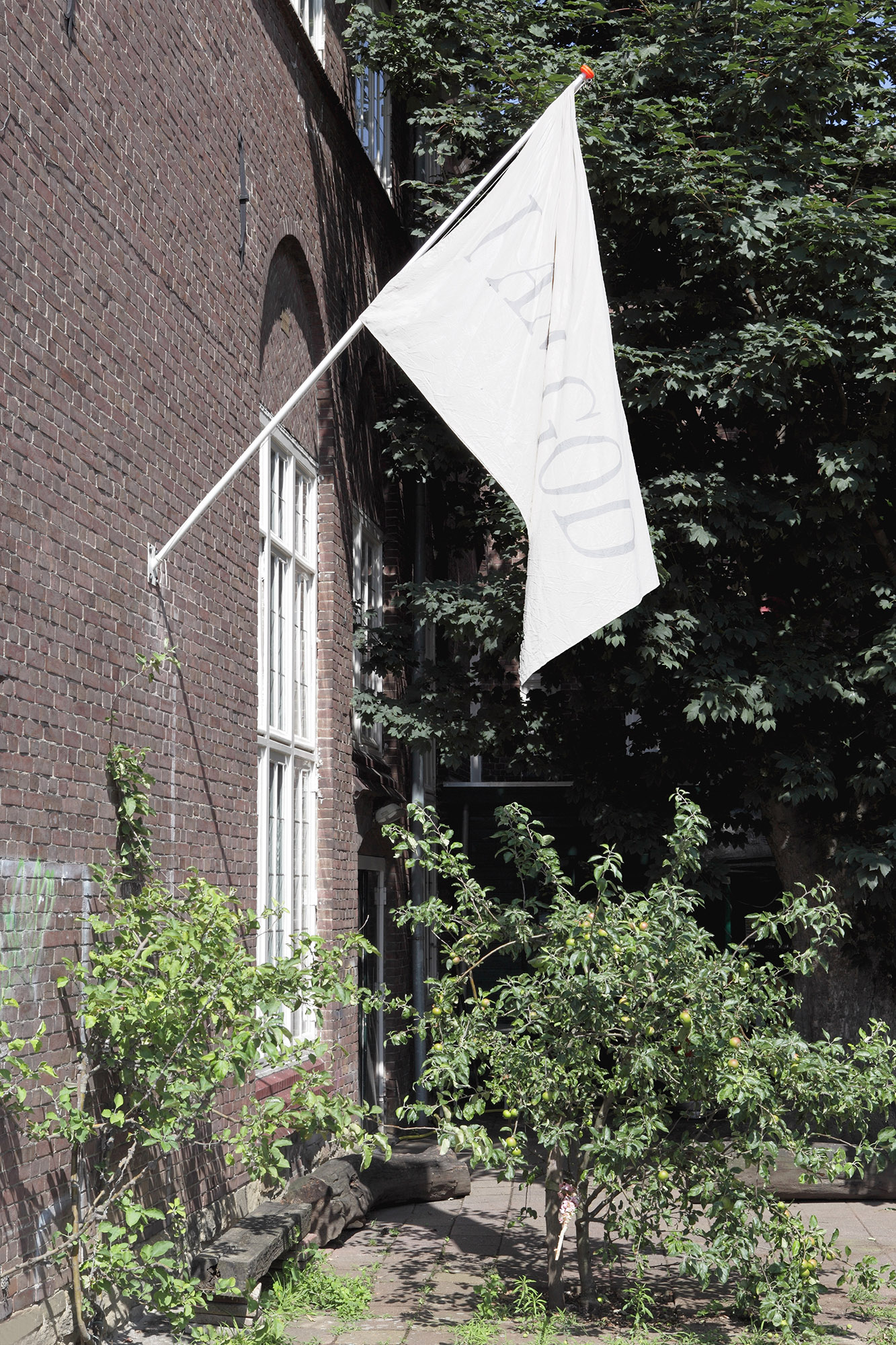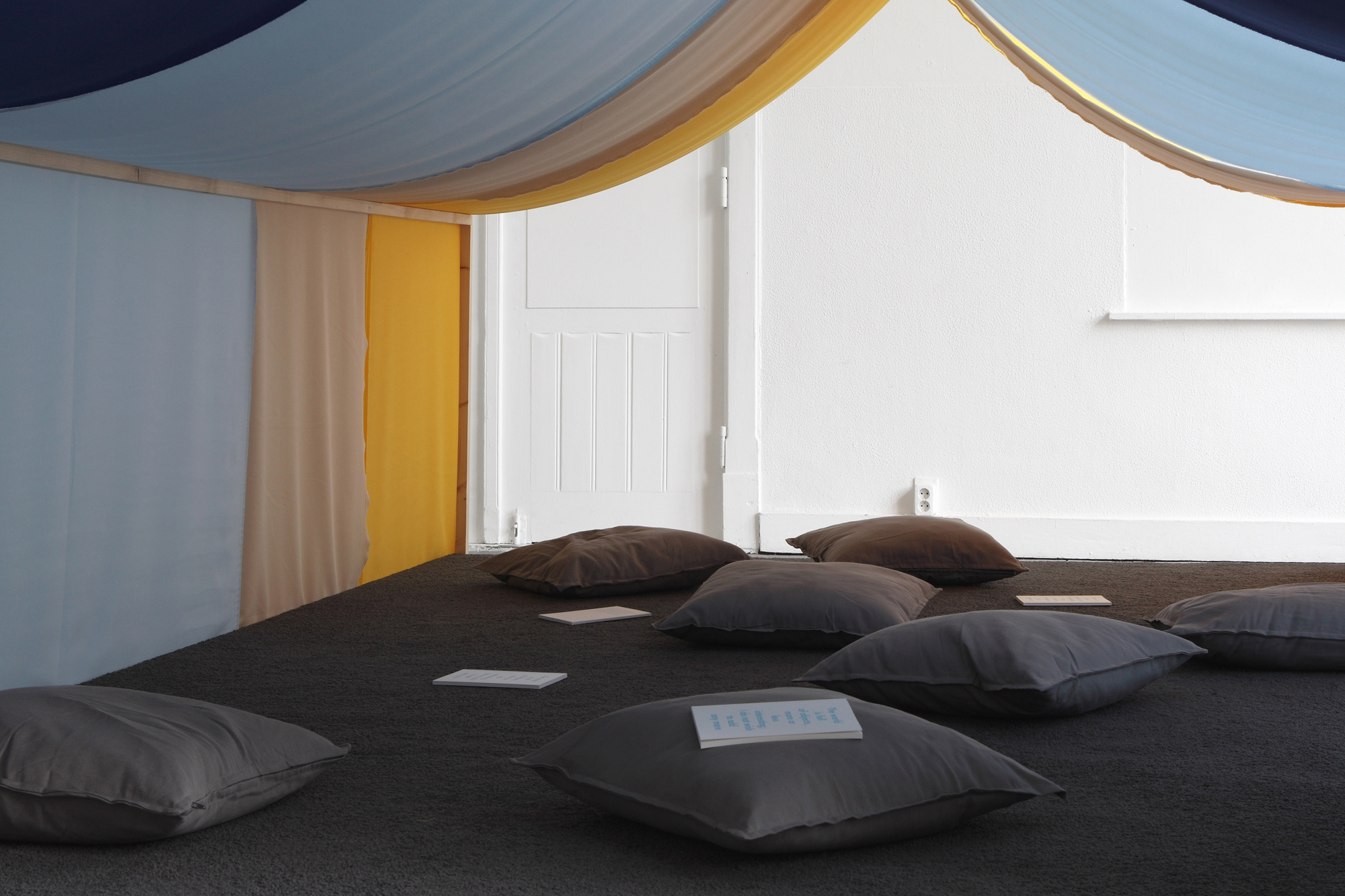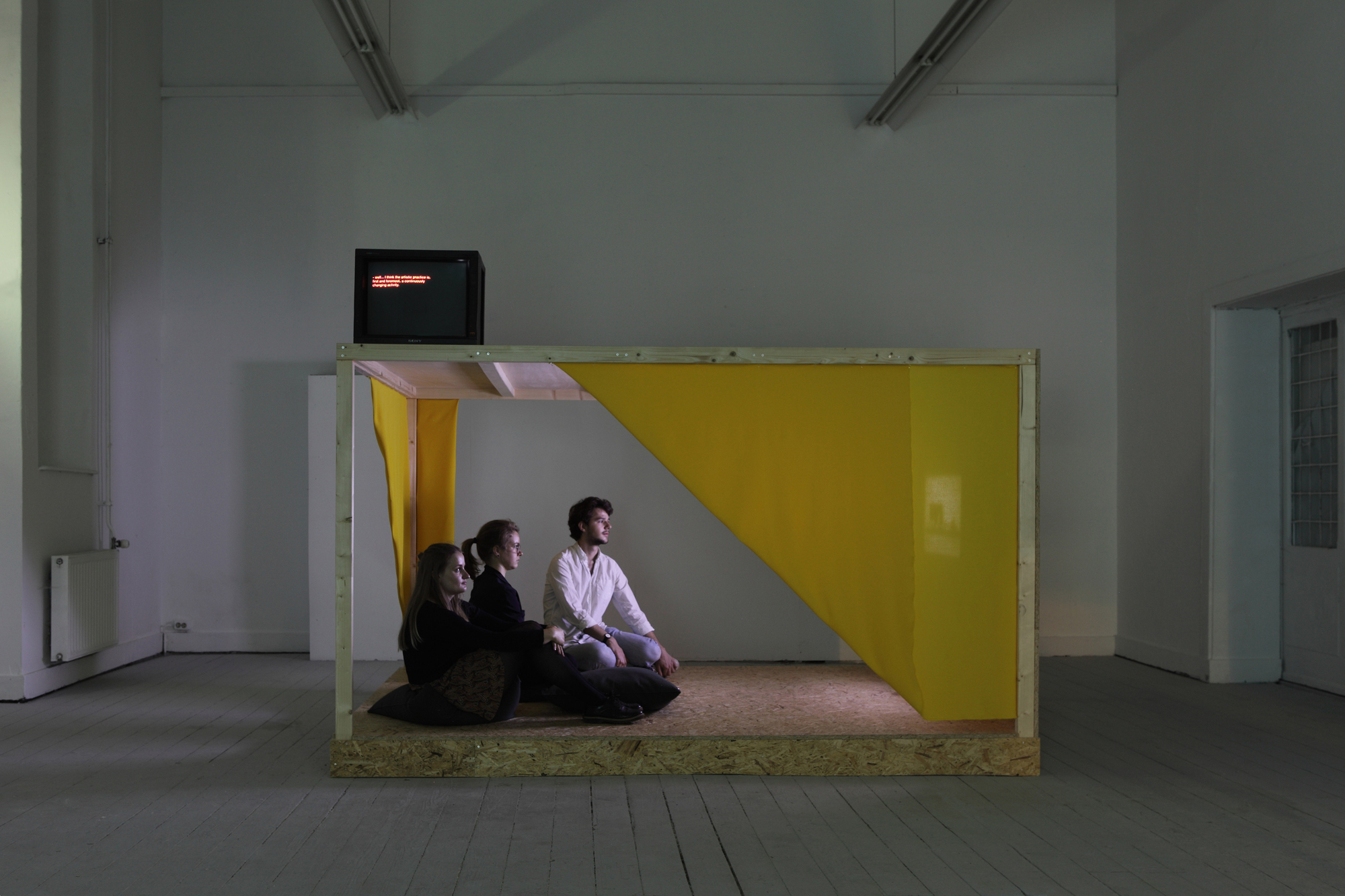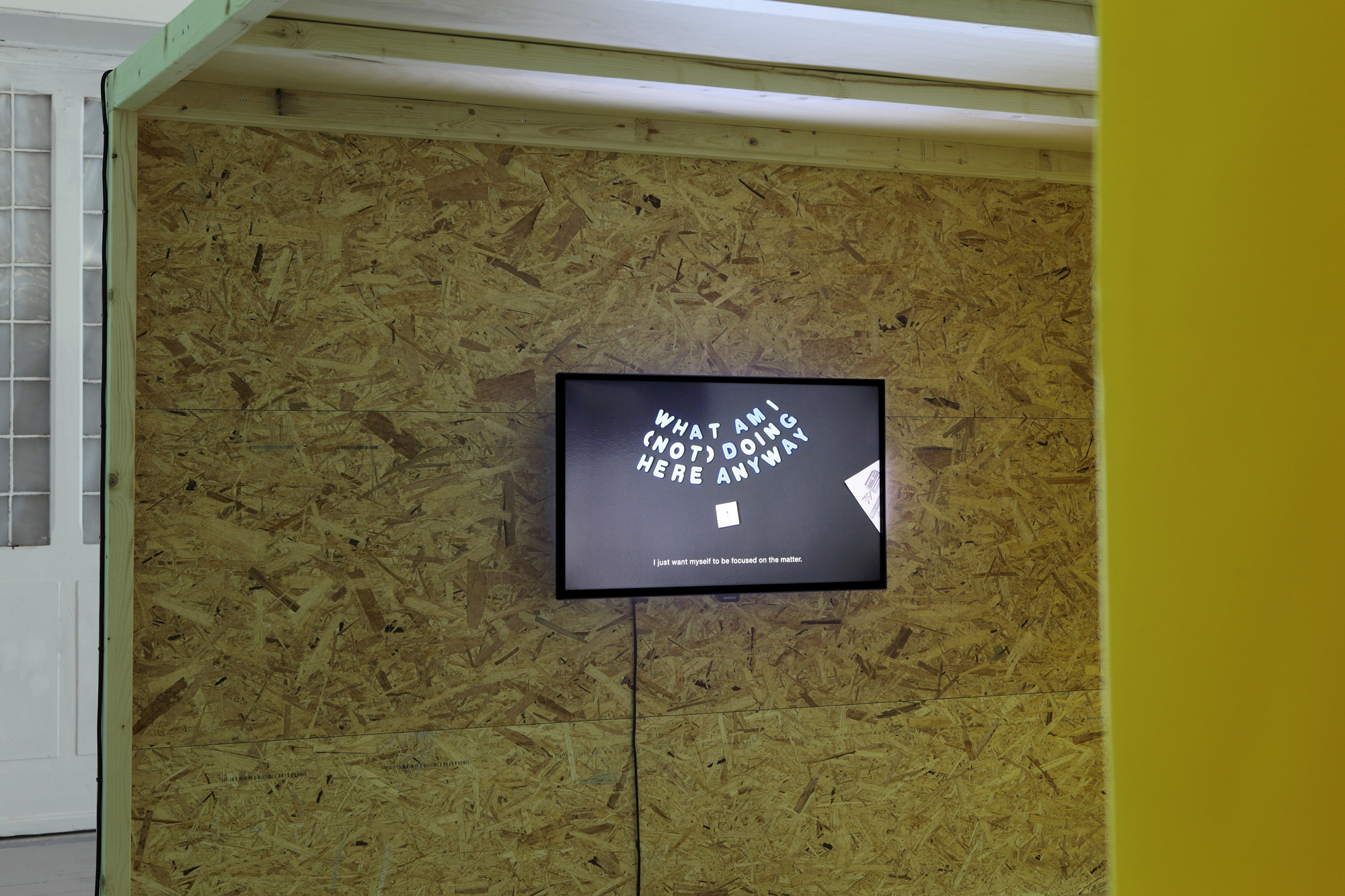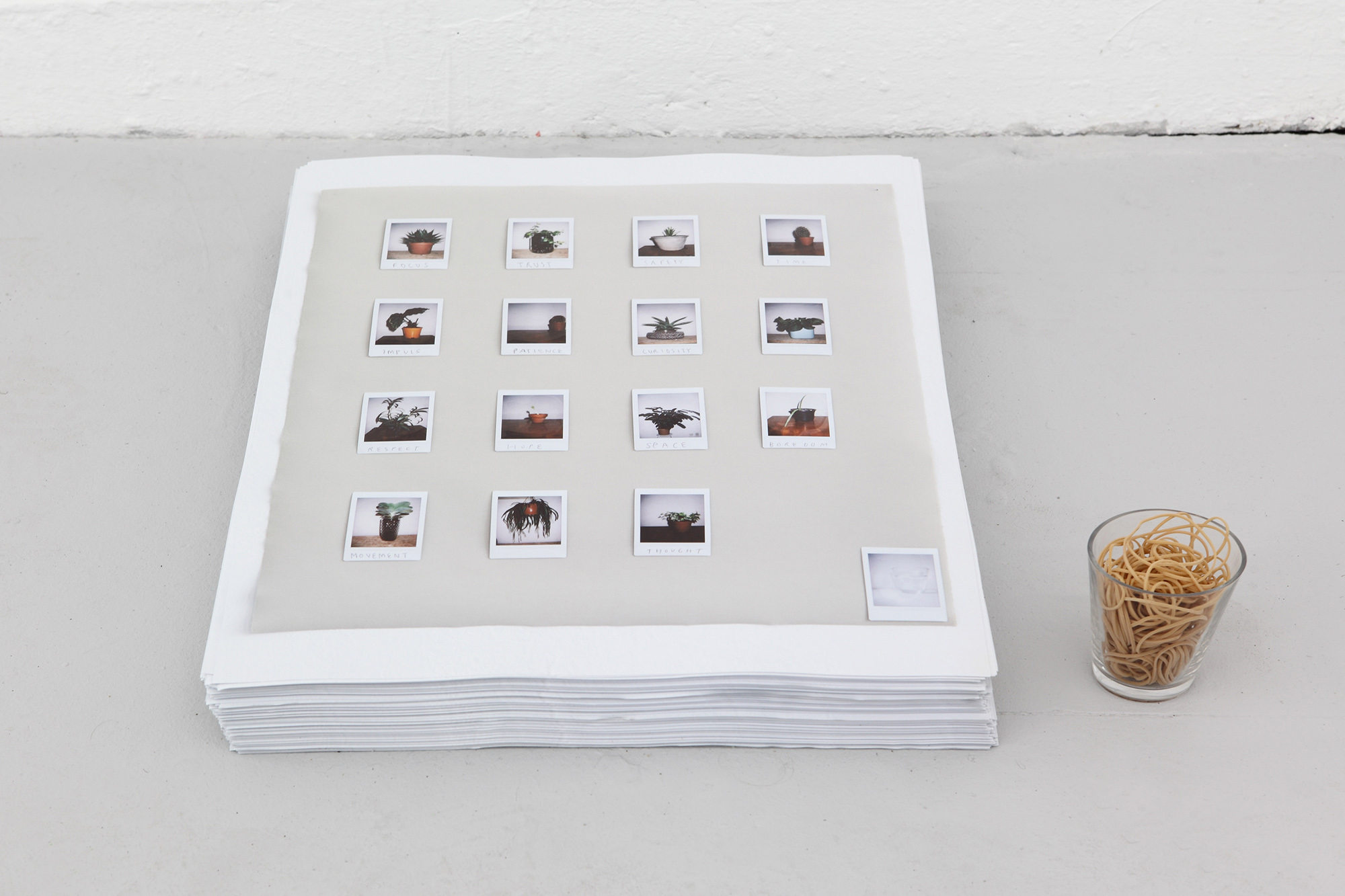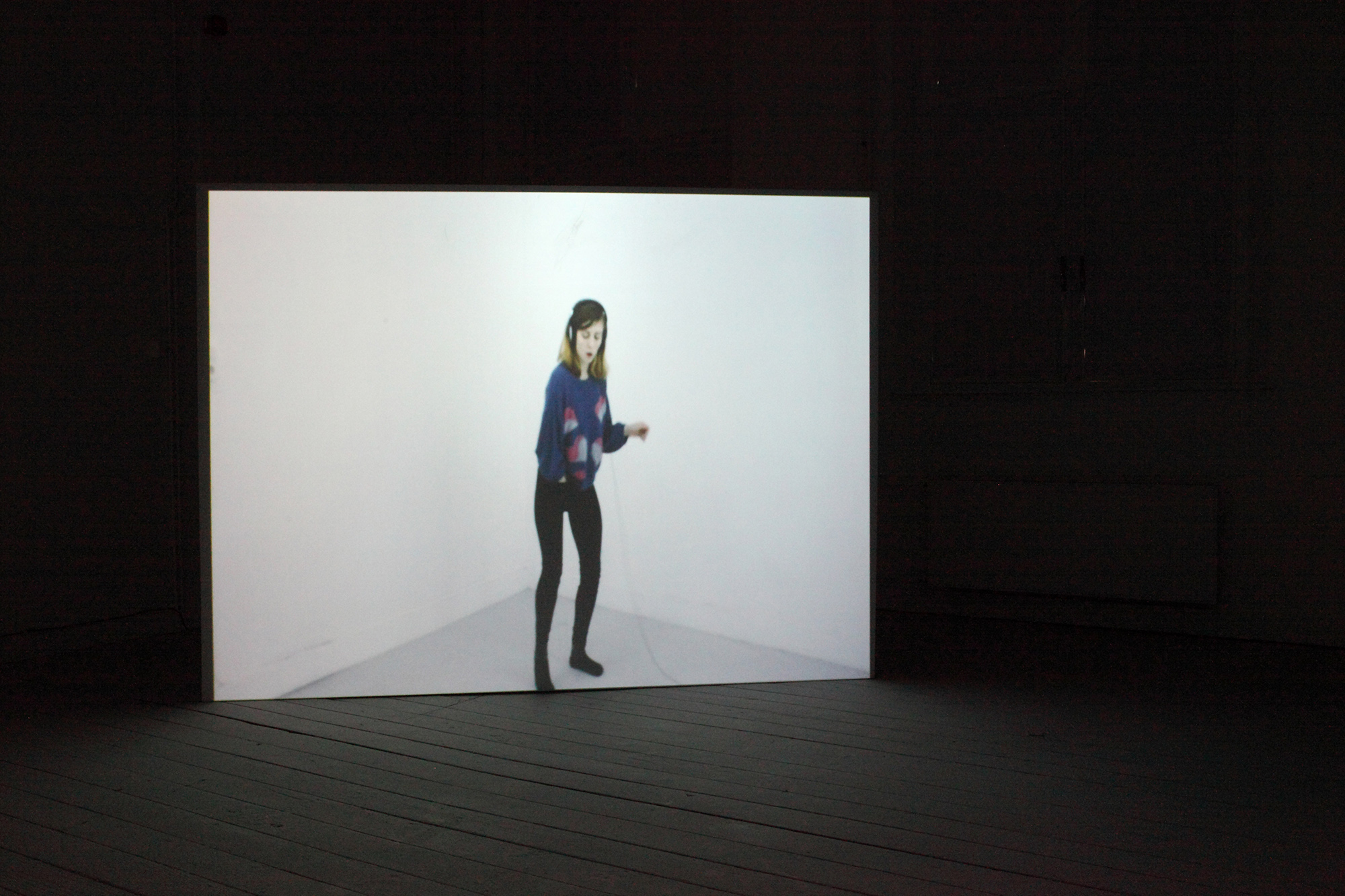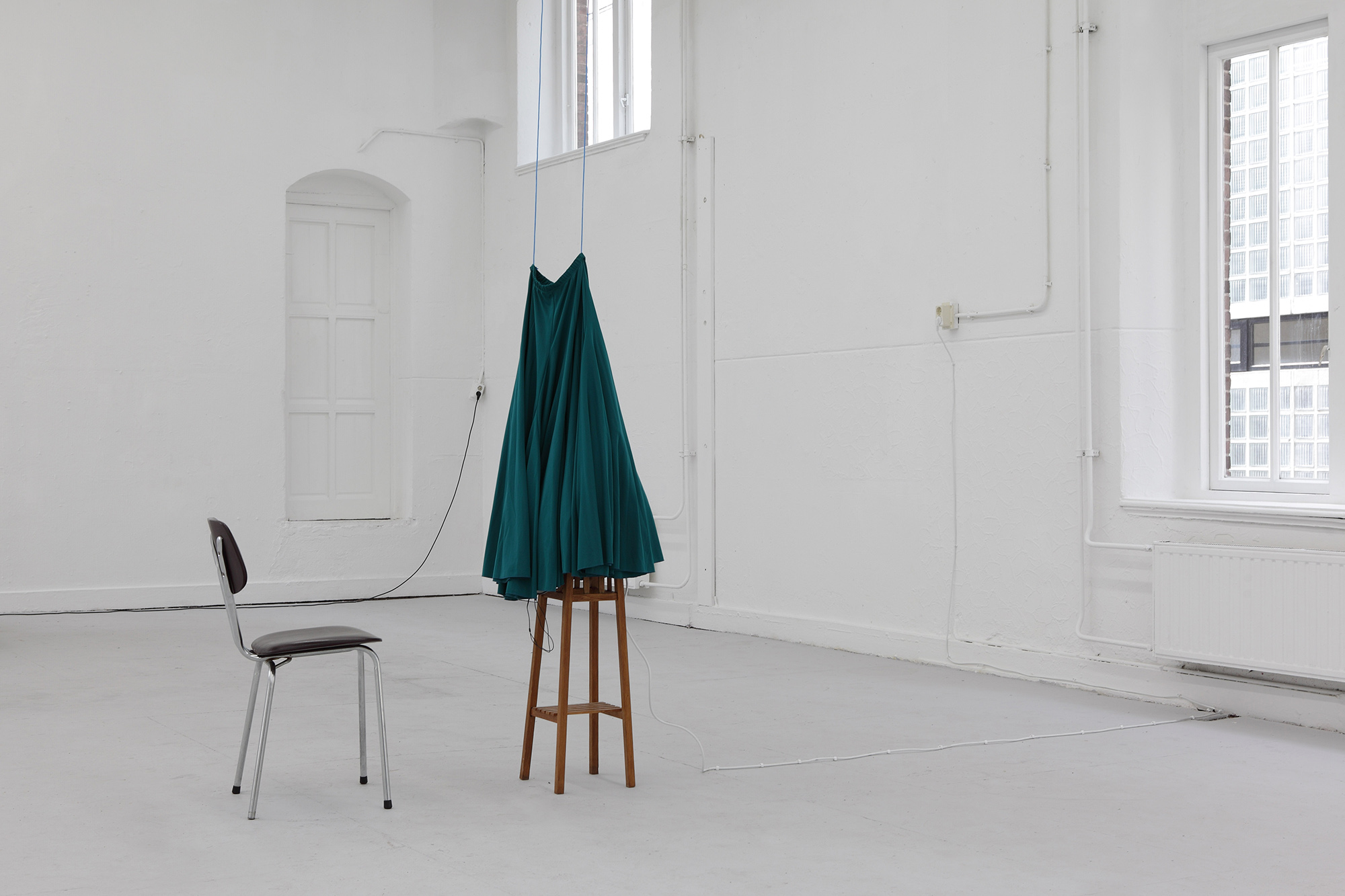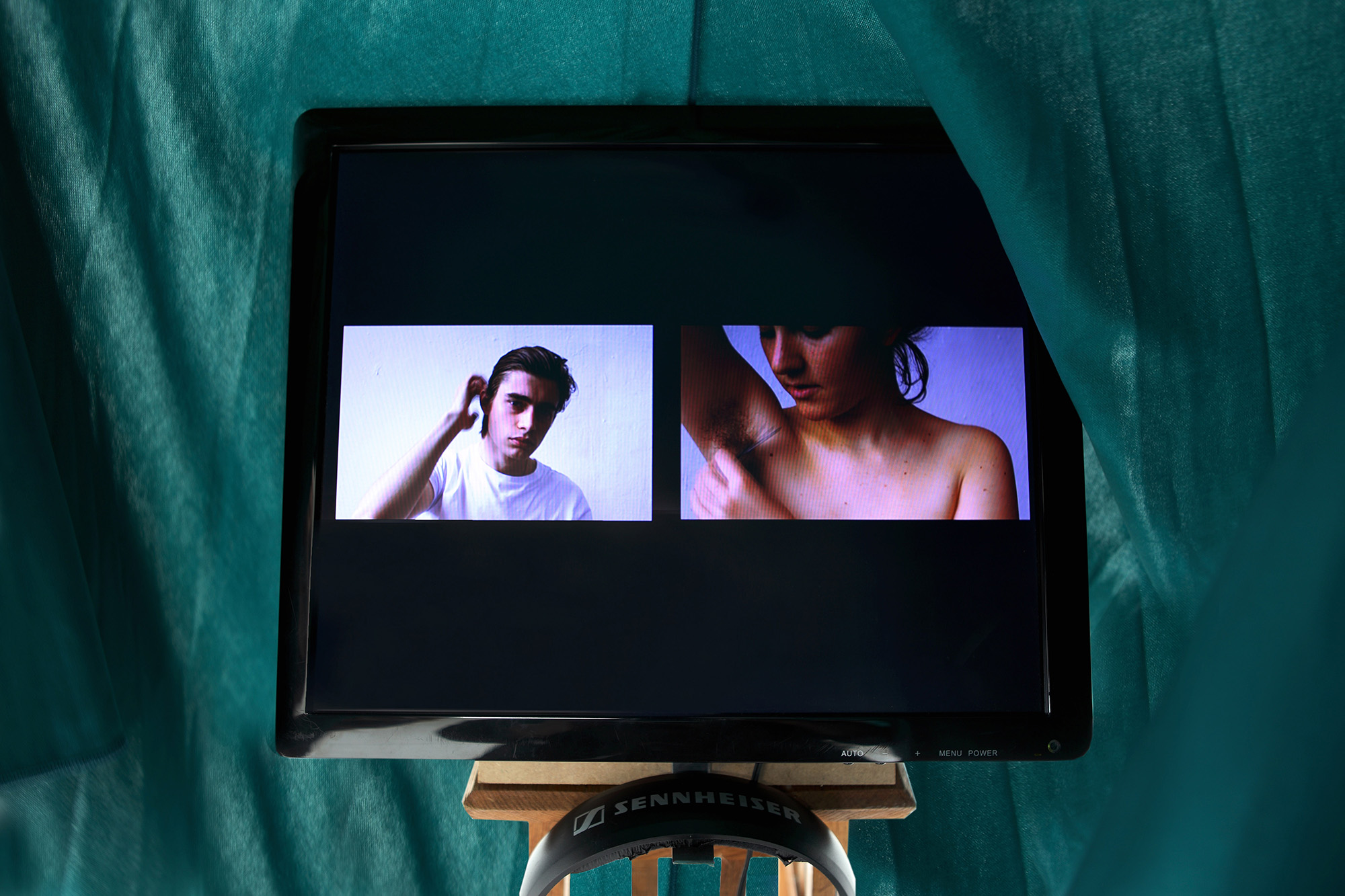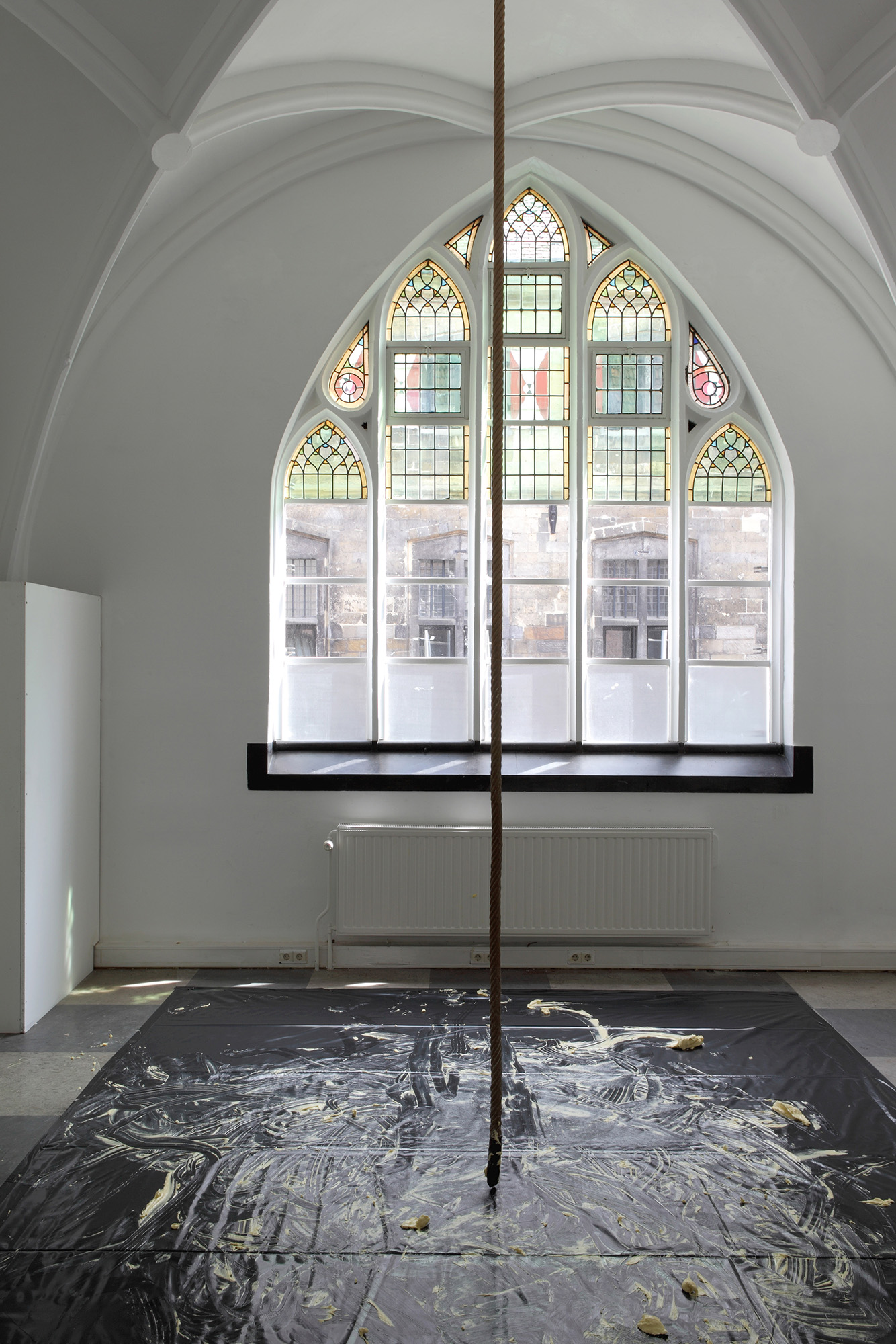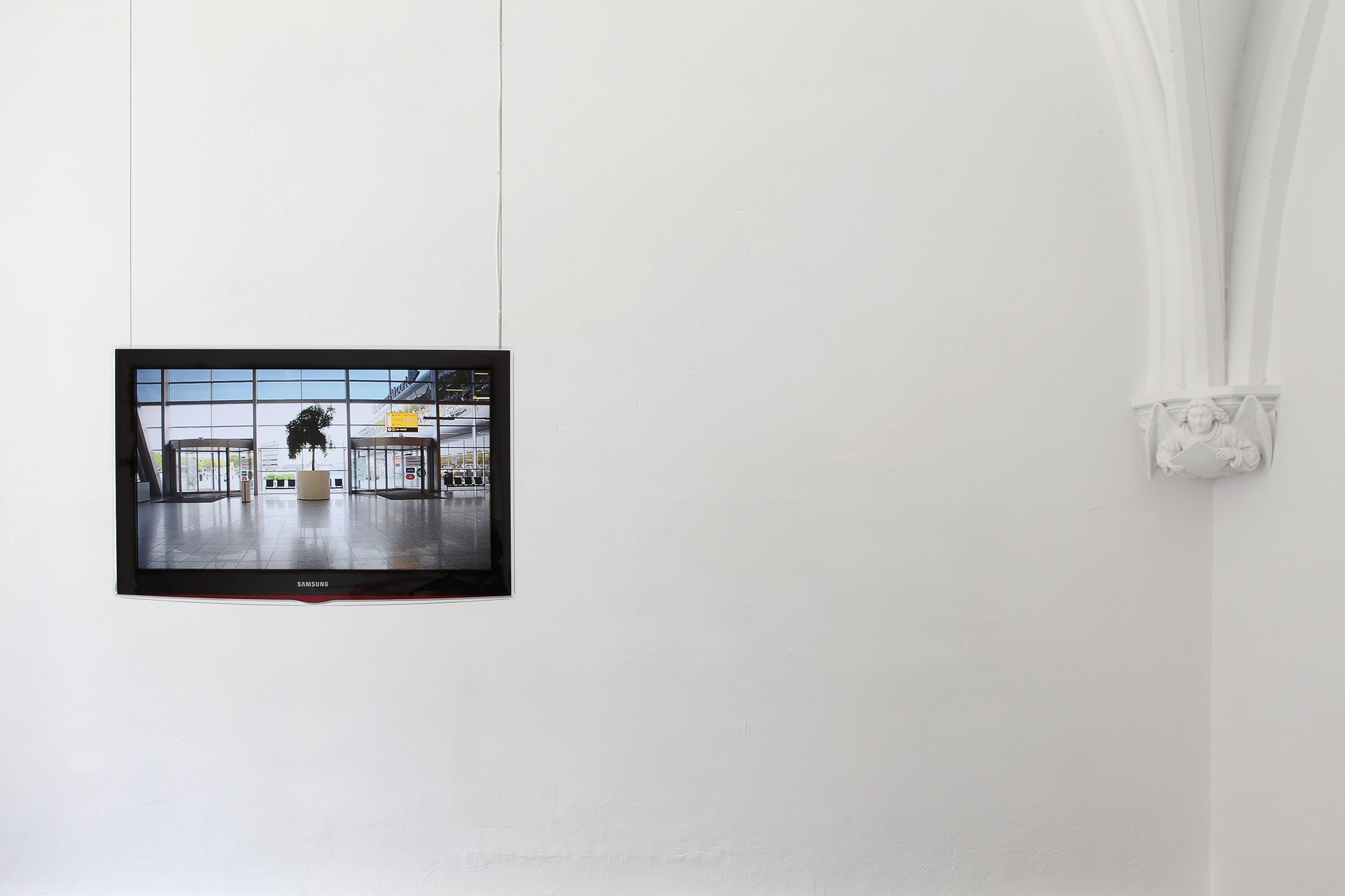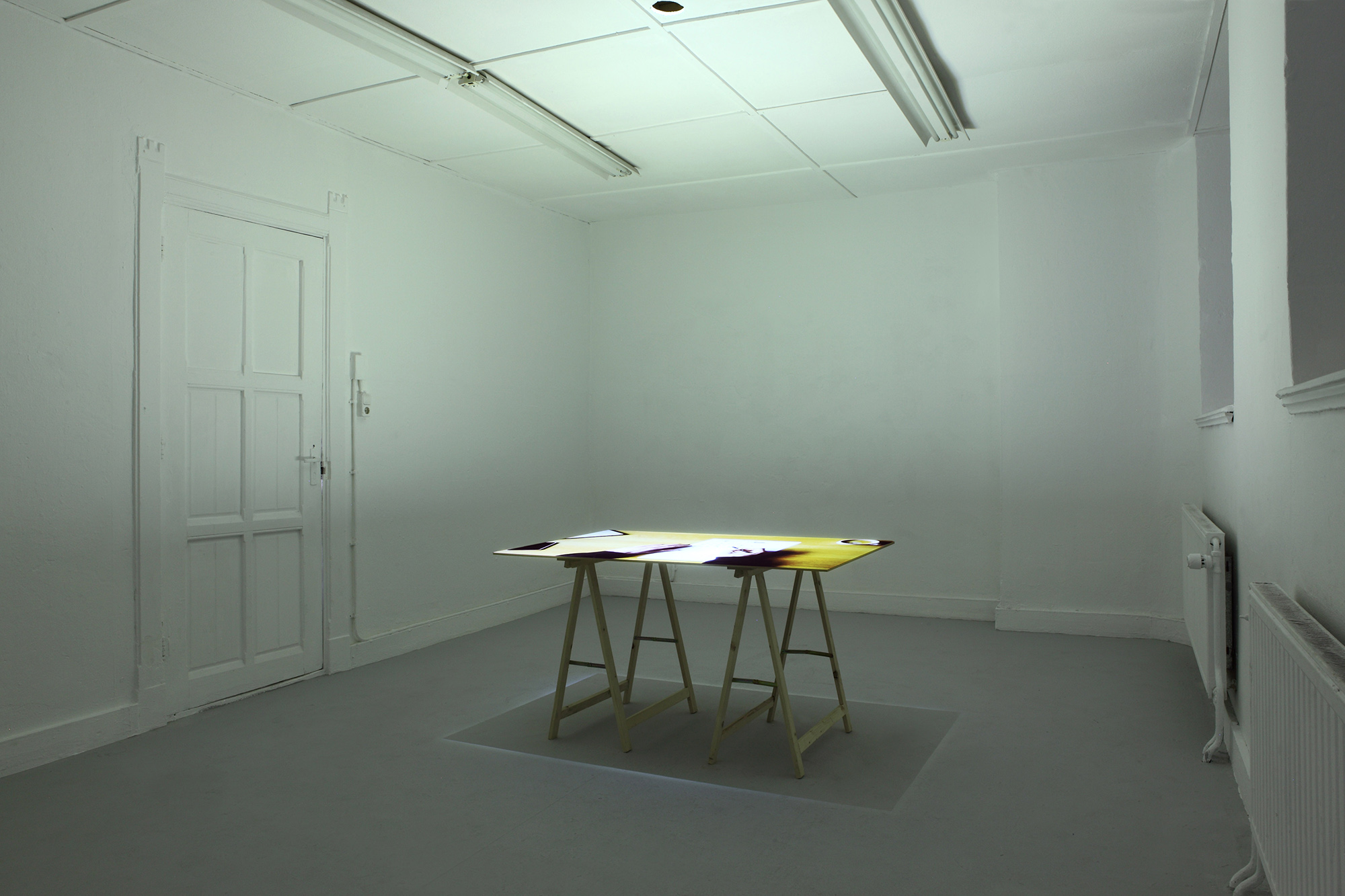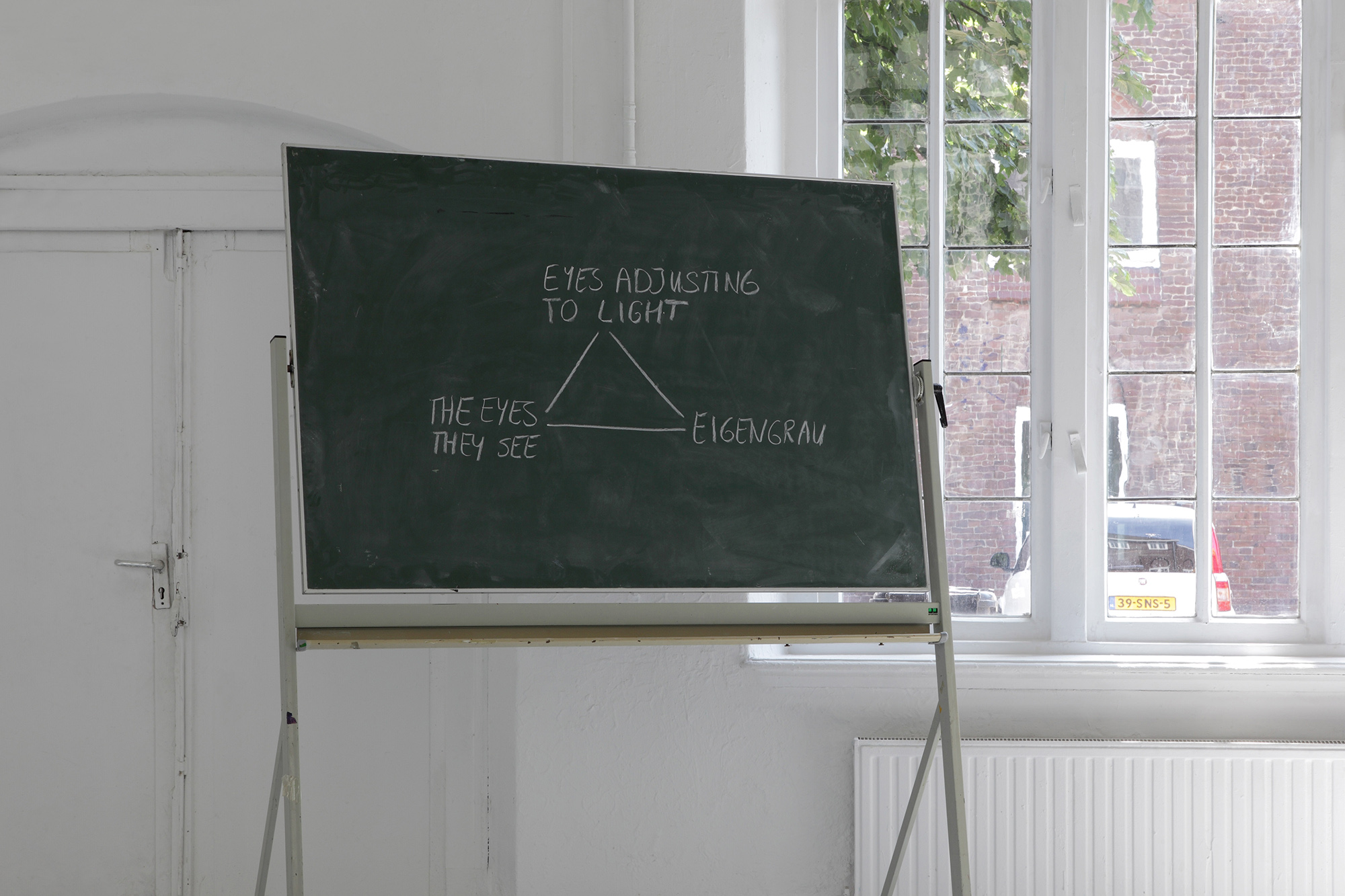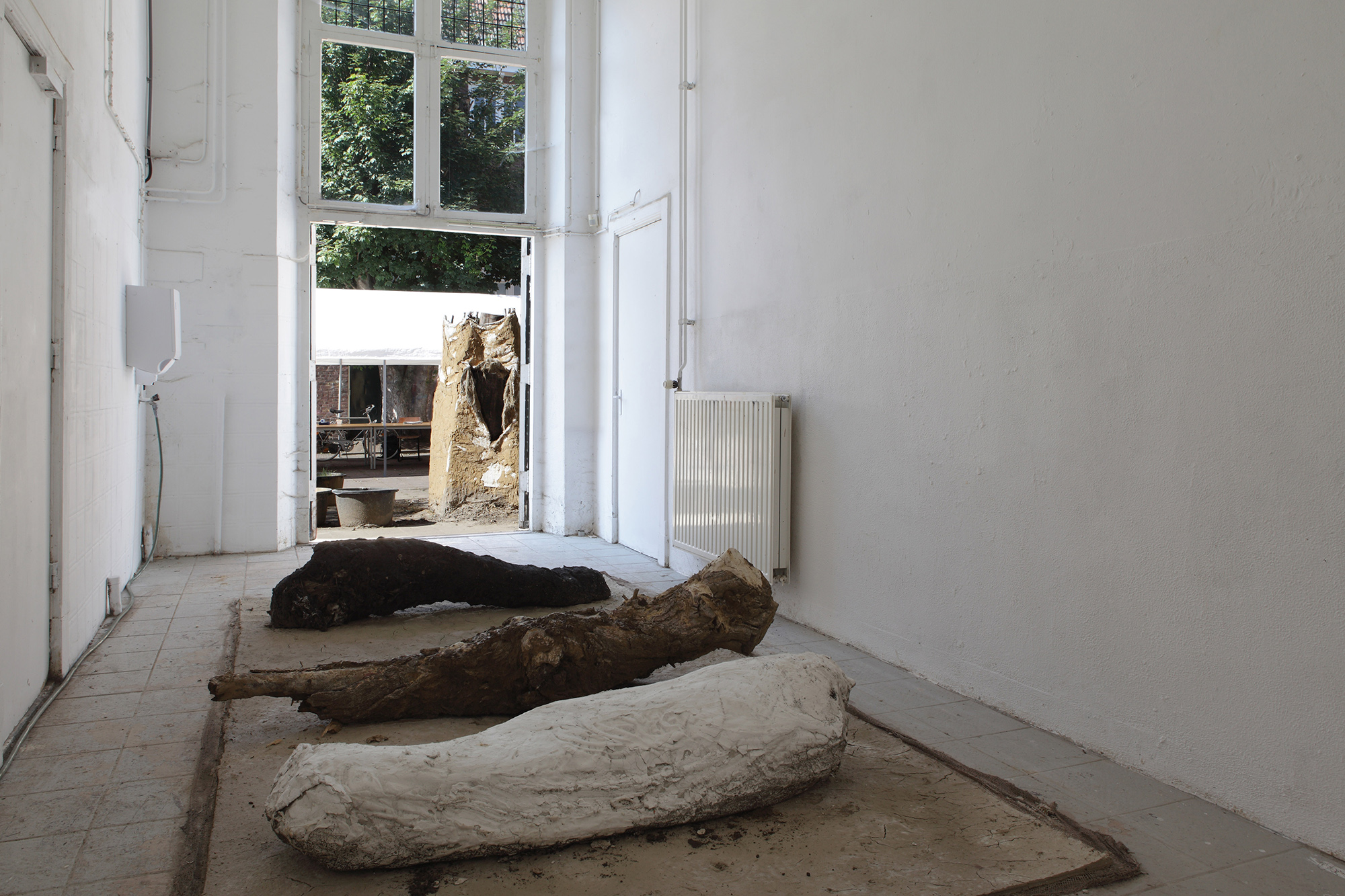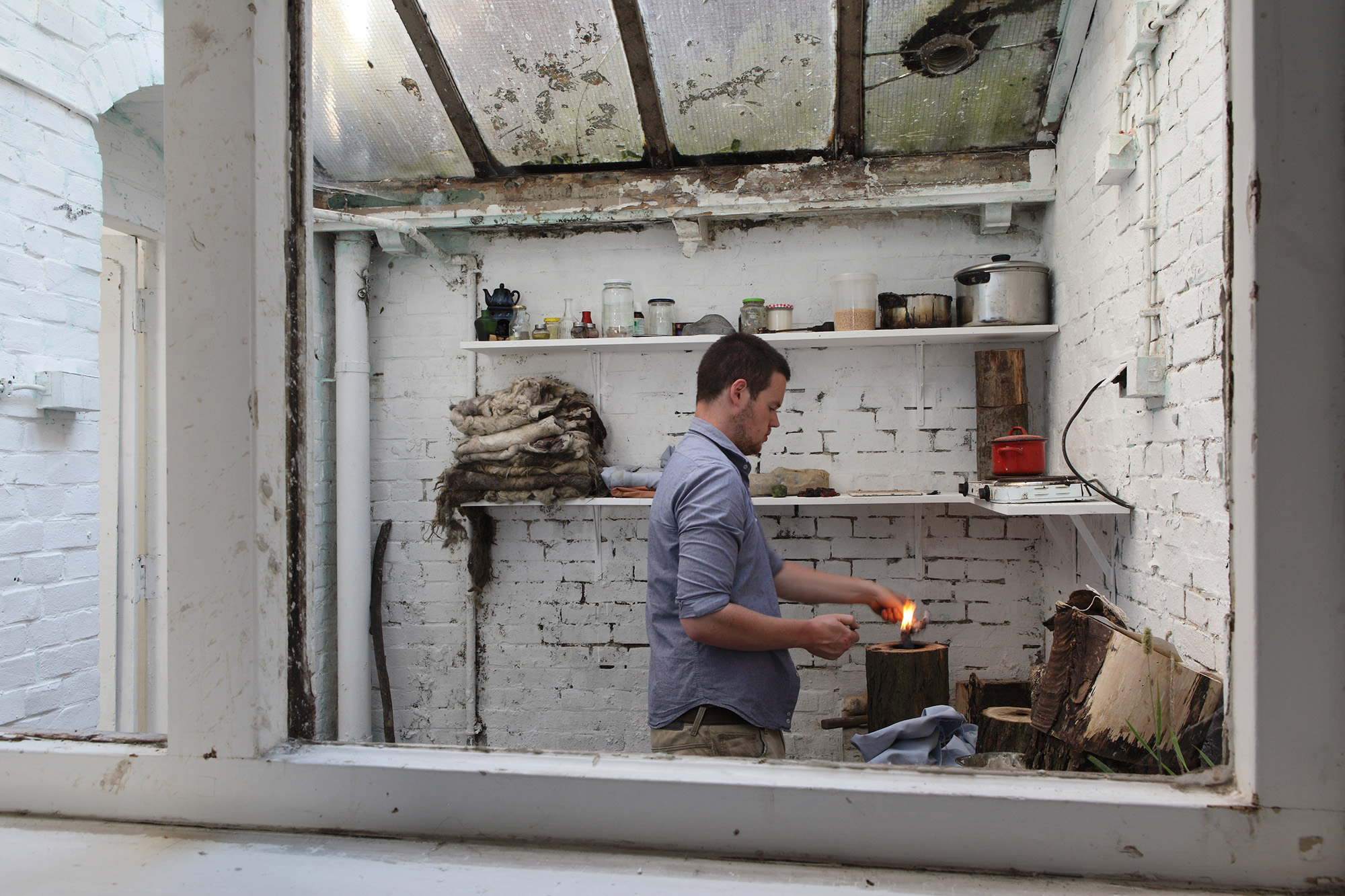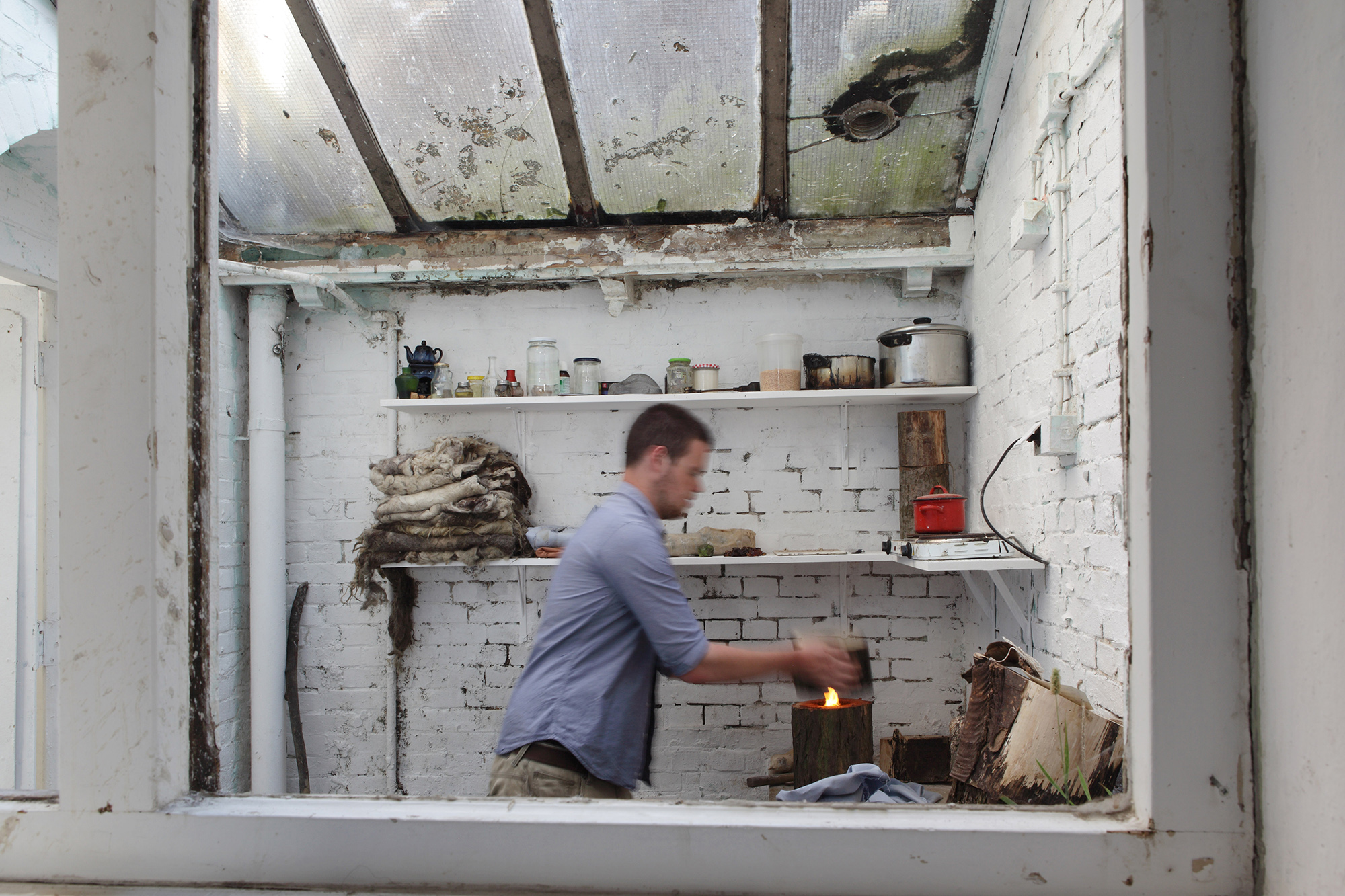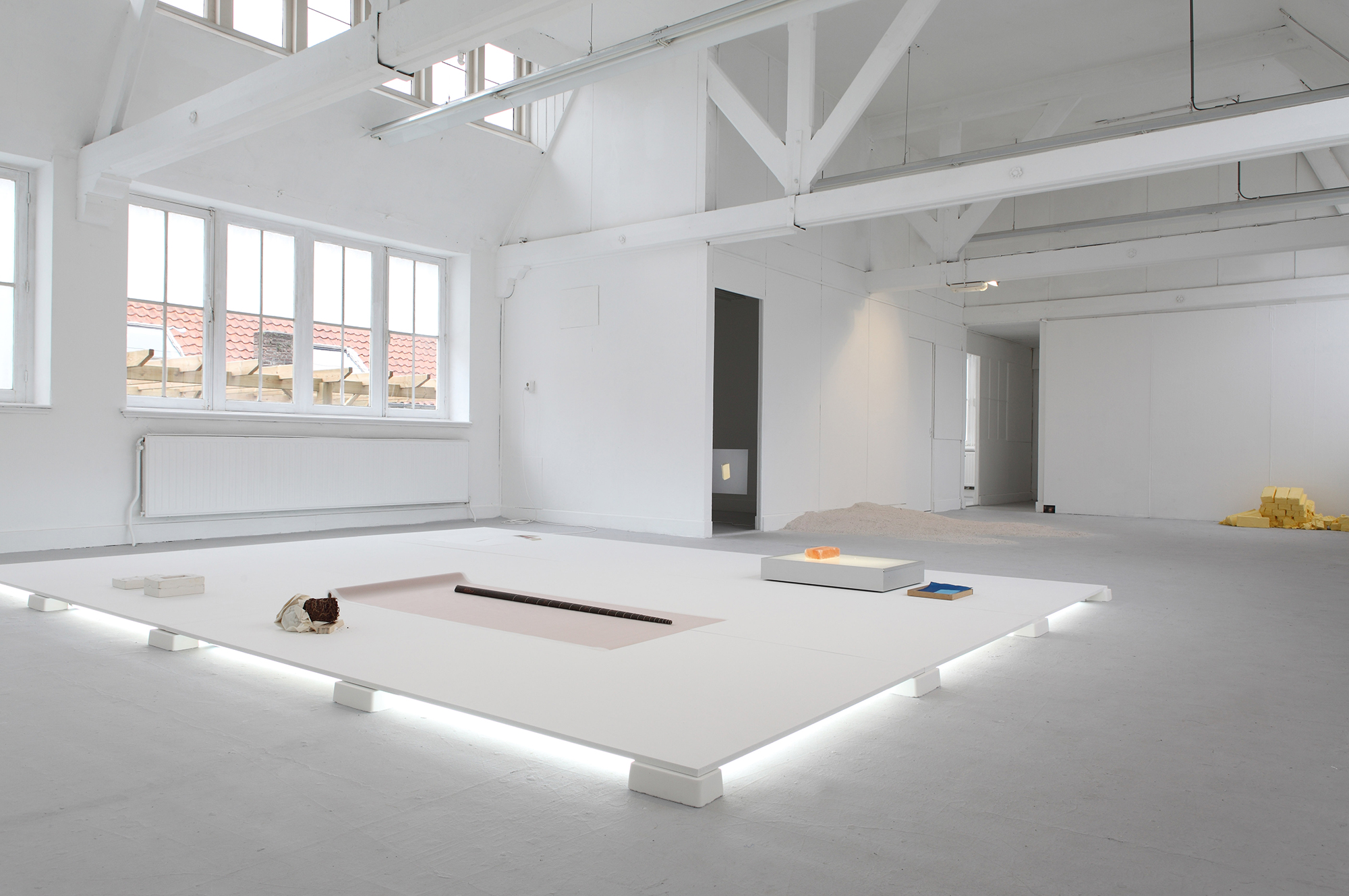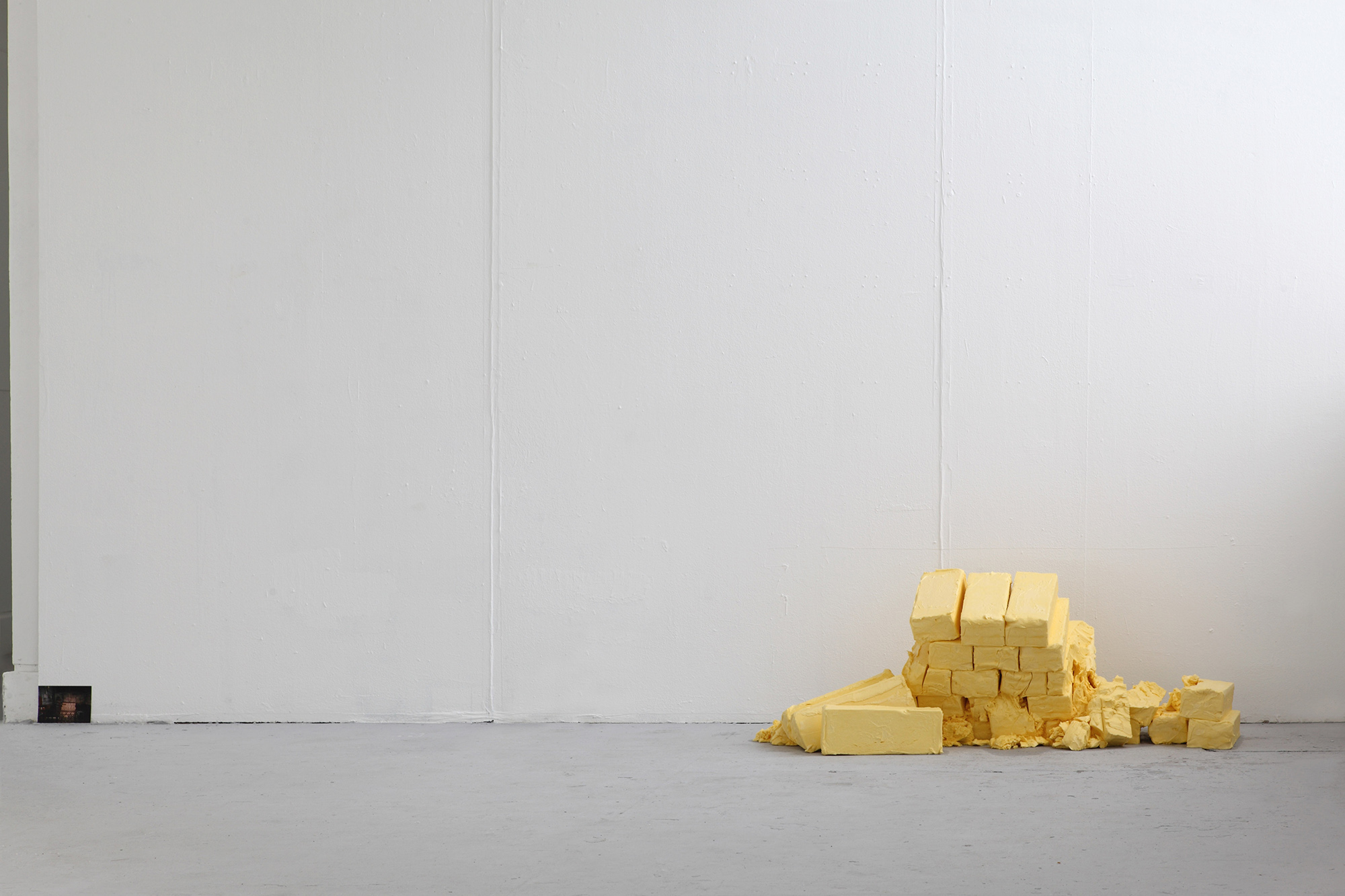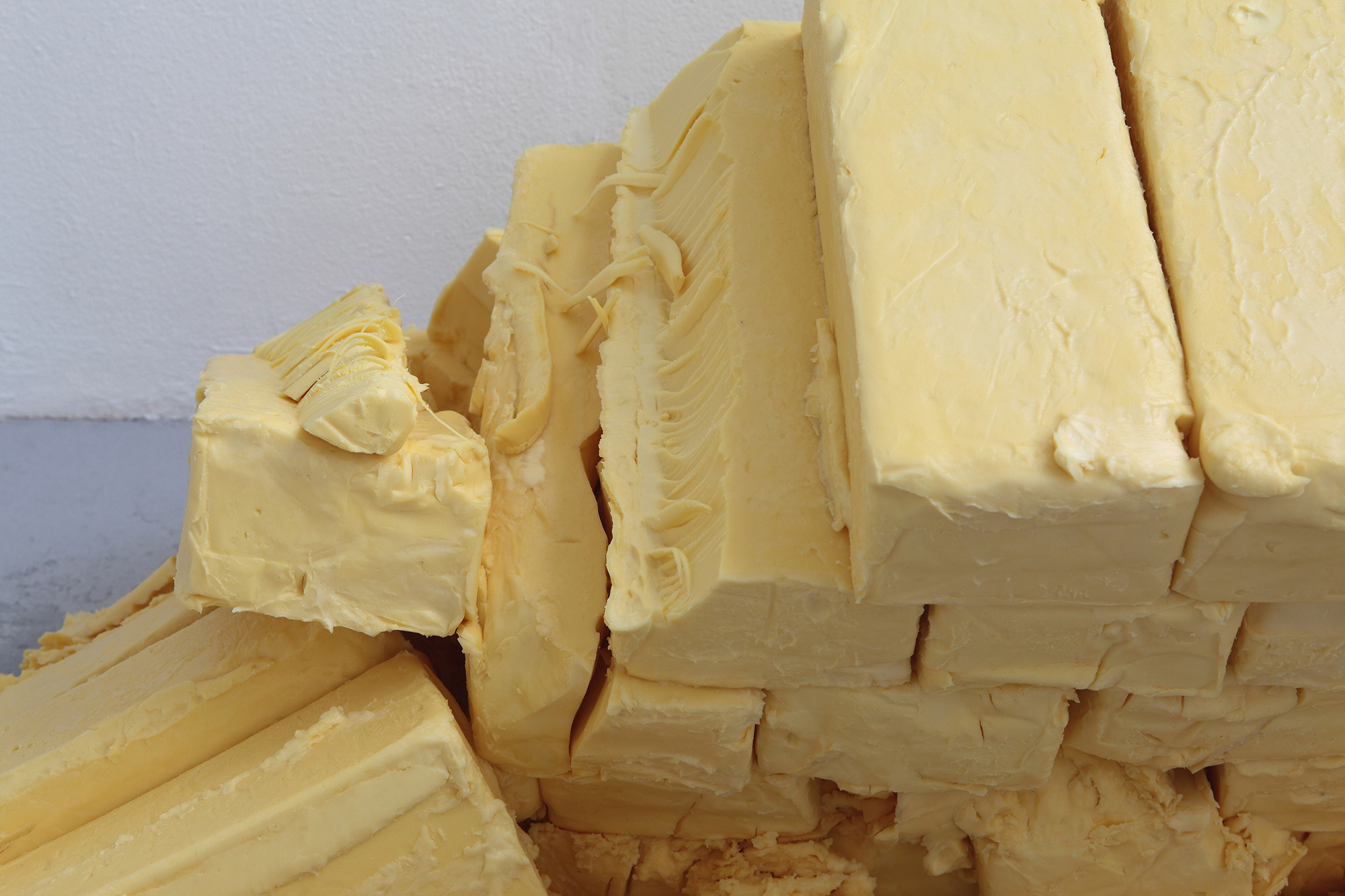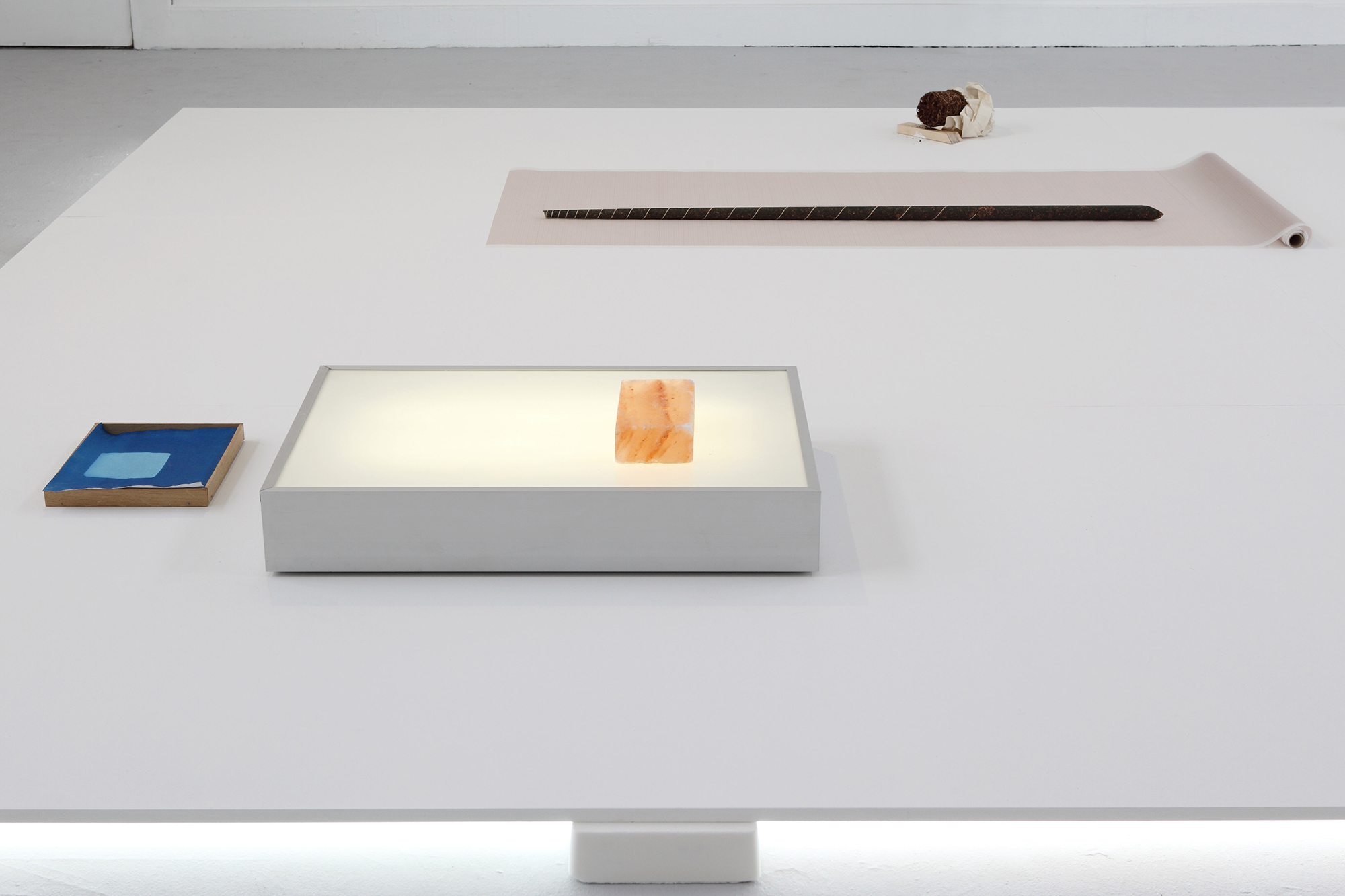Mique Eggermont Award
The ME Award is an incentive prize that is awarded to one graduate from the Fine Art department of the Maastricht Institute of Arts. The prize is intended for a young artist whose work distinguishes itself by an idiosyncratic artistic approach. The annually alternating jury consists always of one member, who has the mandate to make an independent, and personal choice.
Mique initiated the prize herself, from her own resources, as a playful commentary on the recurring prize-circus during graduation exhibitions, and as a concrete alternative. For her award, she annually chose a young maker who might be less likely to be 'honored' than others. She wanted to encourage artists to follow their own paths without making concessions, or playing to the ear of expectation. The Mique Eggermont Foundation is continuing the prize in this spirit, annually selecting one artist as its winner, and one jury member who chooses.
The prize is planned in consultation with the Academy of Visual Arts in Maastricht, and the ME Award in principle is always presented during the annual graduation exhibition.
Yannik Güldner is an auto-didact curator and programmer based in The Hague, investigating the intersections of contemporary and popular culture. Aiming to question structures of power and society at large through the eyes of upcoming and renewed artists within their multidisciplinary practices. He is interested in creating narratives across the borders of disciplines that interlink art, science and academia with one another. By facilitating spaces that mediate between audience and artist through exchange and collective learning, he aims to contribute to the understanding of entangled environments.",
Winners
Jury Member 2025: Yannik Güldner
Yannik Güldner is a visual artist and researcher, born and raised in East Germany. Her research-driven art practice draws from her diverse backgrounds in medicine, photography, and the military, orbiting around themes such as nonhuman intelligence, computer-brain analogies & supercomputing, the role of so-called 3D bodies in contemporary society, the fictionality of science, and the power structures underlying knowledge and data production regimes. Highly influenced by feminist science fiction, she is deeply invested in exploring non-digital tools to research digital practices from and through an oblique material position, developing the performative DATA DIVA alter ego practice as a fabulous artistic research tool. Her often collaborative work manifests in hybrid forms: performative ceramic objects, speculative scripts, fictionalized video tutorials, artist publications, narrative performances, and installations.",
Jury Report
Dear all,
First of all, I want to sincerely thank you for the warm welcome and the generosity of time, attention, and care you showed during my visit on Wednesday. It was a real pleasure to be invited into your graduation exhibition and to witness the culmination of your time at the academy in such a rich way. I am deeply sorry for not being able to attend the ceremony in person right now, but the trains had other plans for me, as it seems.
Walking through the works, I was struck by the honesty and commitment each of you brought to your practice. It is no small feat to bring together years of learning, experimentation, and questioning into a final presentation—yet what I encountered was not only the result of that process but something that exceeded it: works that breathed, that challenged, that opened up spaces of thought and feeling.
What stood out to me most was the strong sense of authorship across the board. Each of you managed to create a distinct environment—a space where material, concept, and presence came together in ways that felt grounded and considered. I was moved by the care with which you approached your chosen themes, by the way you allowed ambiguity to coexist with clarity, and by how you activated the exhibition space—not just as a place to display work, but as a site for encounter and reflection.
Choosing one recipient for the Mique Eggermont Prize was anything but easy. The diversity of perspectives, mediums, and urgencies presented in this year’s show made the decision all the more challenging. At the same time, it reminded me that this kind of choice is not about measuring value in absolute terms, but about honouring a particular voice that speaks clearly and compellingly within the context of this moment.
That being said, I am honoured and genuinely happy to announce the winner of this year’s edition: Zi Xun Dang 党子勋 de Graaf.
Your work stood out for the way it brought together formal precision, boldness of approach, and a capacity for storytelling that extended far beyond the graduation moment itself. You constructed an environment in which your personal history was not only articulated with grace and intention but transformed into something universally resonant. You allowed vulnerability to take space—deliberately, unapologetically—and invited the viewer to step into that space with care.
What impressed me most was the way you created a world of your own making, using formal references that, while rooted in existing languages, were clearly reimagined and reframed through your own sensibility. There was nothing derivative—only echoes that you shaped into something distinct. Every gesture felt considered. Every detail carried meaning. And yet, there was also room to breathe, to reflect, to feel.
Your presentation was not about spectacle, but about quiet strength - monumental yet generous. About coherence without rigidity. About clarity without over-explanation. You left nothing unresolved, yet never closed the door to interpretation. For that, I thank you—and I cannot wait to see what comes next in your practice. I genuinely hope that you will be able to achieve what you intend and, with the help of this prize, will also be able to begin your journey.
Congratulations again to all of you. It was a true honour to share this moment with you. Thank you again for the openness with which you shared your work and the vulnerability that comes with that. It was an honour to witness this moment in your journey, and I hope you all feel proud of what you’ve made and who you’ve become throughout this process. I look forward to seeing how your practices continue to grow, shift, and resonate in the years ahead.
Lastly, I extend my heartfelt thanks to Paul Devens and the Mique Eggermont Foundation for the kind invitation, the generous care I received, and for making this a meaningful opportunity. Rooted in the vision of Mique Eggermont (1950–2019)—art historian, curator, and critic—whose legacy continues to inspire. Mique was a passionate and uncompromising advocate for contemporary art. She believed deeply in the necessity of artistic freedom and challenged young artists to claim that freedom for themselves. It is an honour to be part of this history through this award.
Again, I wish nothing but the best to all of you on your journeys and future endeavours! Have a wonderful evening and well-deserved rest!
Read more about Zi Xun de Graaf
Jury Member 2024: Antye Guenther
Antye Guenther is a visual artist and researcher, born and raised in East Germany. Her research-driven art practice draws from her diverse backgrounds in medicine, photography, and the military, orbiting around themes such as nonhuman intelligence, computer-brain analogies & supercomputing, the role of so-called 3D bodies in contemporary society, the fictionality of science, and the power structures underlying knowledge and data production regimes. Highly influenced by feminist science fiction, she is deeply invested in exploring non-digital tools to research digital practices from and through an oblique material position, developing the performative DATA DIVA alter ego practice as a fabulous artistic research tool. Her often collaborative work manifests in hybrid forms: performative ceramic objects, speculative scripts, fictionalized video tutorials, artist publications, narrative performances, and installations.",
Jury Report
TO QUOTE THE YOUNG ARTIST: ‘THE GAY PET IS DEAD.’ (final)
We enter a zacht gekleurde space, a pastelachtige poederdos, as someone suggested. A textile guardian looks at us rather grimmig, almost von oben herab from the outer left corner opposite the entrance. Not without humour, mind you.
They are surrounded by an ensemble of textile sculptures. Some are created from stiff and hardened fabric. Cheap plastic materials meet DIY aesthetics of batik-coloured fabrics, and all the different sculptures seem to question wearability. Which of these pieces would you dare to put on and strut through the space?
And then, the textile guardian gets undressed. Undressed by a suppoost, a friendly attendant, who suggests the visitors to wear one of the pieces the guardian was made of: a straw headpiece with Stofffetzen as fringes, too large for a standard head, worn as a neckpiece or expressive jewellery instead. A light blue transparent ‘iets’ worn asymmetrically as a floor-length gown. A neon orange scarf adding a pair of extra hands as non-functional gloves. And the piece I was dressed in and proudly donned: a black, voluminous costume that felt like a serious robe if not for the black transparent folds of tulle that made me feel just fabulous. As I walk in this garment through the space, I become willingly/unwillingly a performer within the artist’s installation. I am not easily convinced by participatory practices, always vigilant (or suspicious, one could say) of peer-pressured interaction that serves the artist more than the participants. But this is not what I felt. Wearables become their own personage. Observant textile sculptures turn into pieces of performative interactions, suggesting genuine conversations, verbal and non- verbal, with the artist, their pieces, other temporary performers, and the space.
And then there is the floor, extending the color palette to the ground, connecting the different textile pieces, transforming the space into a light and inviting stage to play on. The pattern is made of watercolours, mopped onto the floor using a typical cleaning device, a gesture born from the desire to acknowledge the labor of the cleaning team at work, important members of the kunstacademie environment who remain nameless and invisible to most. The floor connects to an interview as well, a conversation the artist had with Barsiala (spelling?), one of the cleaning personnel, who rightly so questioned the title of the graduation show (Honoring the Cleaning Lady), as neither only women work as part of the cleaning team, nor does she feel particularly honoured in her work.
Community is important to them, the artist told me, and I get it. Or rather, I feel and sense it in the space, in the interaction with the artist and their sensitive and playful work. Community, or the desire for community building, seems to fuel and nourish the different practices and works: the textile sculpture turning into wearable costumes or ‘vestures of faggotry’ (as one of the titles suggests) with the audience, and the floor; the floor with the cleaning staff, the recorded conversation, and larger sociopolitical topics the artist more or less implicitly engages with. Costuming as a community-building practice, sich verkleiden as empowering gestures of getting involved, and the artist’s imaginative, perceptive art practices as an invitation to become part, if only temporarily, of different communities captivated me for sure.
Valentijn, congratulations on this well-deserved prize. I warmly look forward to seeing both your artistic practices and the communities they build and nurture blossom and flourish in the future.
Read more about Valentijn Schnitz
Jury Member 2023: Marloes de Vries
Marloes de Vries is the director of Roodkapje in Rotterdam.
Jury Report
In her space, Niekeline has broken open the floor, opened the windows, invited ants, uprooted a birch tree from the courtyard sold to big capital, and installed four motors. Hanging in a net stretched between these four motors, you can view everything from above and see how the outside world penetrates the interior. She raises the question, where does one thing end, and another begin?
First of all I would like to congratulate and thank all the artists who graduated this year for taking the time yesterday to tell me about the work, their motives and plans for the future. It was a pleasure to meet you.
While storm Poly raged past the windows yesterday, I was taken to other worlds and spaces, in a physical sense, digitally and through my nose. I have regularly asked you the question where am I?
It is understandable that, given the crises in our living environment, this new generation of artists is looking for an escape from climate depression, housing shortages, polarization and old white men. I have therefore seen glimpses into alternate universes, received absurdist answers and saw that some of you want to freeze time in order to be able to hold loved ones who disappear for a while.
The artist I have chosen shows that between apparent extremes there is a grey-area worth exploring. Stripped of gravity for a moment, Niekeline der Kinderen didn't have to mince words to let me experience this grey-area, and that is the power of art as far as I'm concerned.
In her space, Niekeline has, among other things, broken up the floor, opened the windows, invited ants, pulled a birch tree from the inner garden that had been sold to the big business and installed four motors. Hanging in a net stretched between these four engines, you can take a closer look at everything from above and see how the outside world invades the interior. She therefore asks the question, where does one end and the other begin? If I eat a cherry, when does the pulp become part of my body and my poop in the sewer is an extension of me? Seeing the circle of life as an ecosystem in which we inextricably participate, not superior, not inferior but somewhere in between.
The work is experienced and stubborn, Niekeline clearly knows what she is doing and does not wait for permission. This disobedient attitude fits in perfectly with the tradition of Mique Eggermont and makes me incredibly curious about the work she will make next. I therefore hope that this prize and thus support for your practice will enable you to take the next steps. And for the visitors, let Niekeline lift you up, it's a pleasant state of being, in between.
Read more about Niekeline der Kinderen
Jury Member 2022: Willem Oorebeek
Dutch artist Willem Oorebeek (1953) studied at the Academy of Art in Rotterdam, was a lecturer at the Jan van Eyck Academy in Maastricht, at De Ateliers in Amsterdam, and at the Hochschule der Künste in Hamburg. His conceptual works, installations, and book projects have been presented in numerous solo and group exhibitions.
Jury Report
First of all, I would like to express my gratitude for the honorable invitation to be on the jury of the Mique Eggermont Prize. I highly rate this as an initiative to add a personal touch to the machinery of the institutional business. At this stage, a small push of support can have a lot of effect and that's why it has not been easy for me to choose to whom to give such an impulse.
In the end, the choice fell on the candidate who, in my opinion, is the least spectacular, yet the most articulate and also makes the most settled work; I'm talking about Caroline Sarneel.
I call her photographic works settled, which, due to the choice of material, create a veil of absence and lend the chosen objects in the landscape a subcutaneous, contemplative atmosphere.
The most articulate I call the relationship between the photographic work and the paintings, which has an exactness of explicitly because they are NOT the same, yet do reveal a connection through precisely their difference(s) as if seen through colored lenses. The least spectacular are the paintings that at first glance seem to provide little access, but on closer inspection - through Caroline’s conception of her own smallness in the tangible cosmos in which she exists - offer a shared understanding towards the viewer.
Perhaps not a very striking word, but one that does express from which she speaks is the word SOLVENCY. By that, she means certainly not anti-social, because she seems to me to be the most social of the class, but the word loneliness can be understood more as the position of the forester, who shares his attention with all the trees of the forest and yet is still able to see the forest.
I'll leave it at this, and wish Caroline this moment of recognition, but also everyone I got to speak to yesterday good luck in their further career.
Read more about Caroline Sarneel
Jury Member 2021: Maaike Gouwenberg
Maaike Gouwenberg is a curator and initiator working from Europe and the US. Based on her experience with exceptional projects on the cusp of theater, visual arts, and film, she works alongside artists to venture together into unknown terrain.
She founded several art(ists) organizations, including the multidisciplinary exhibition space Expodium in Utrecht; A.P.E., which focuses on the development of performances, exhibitions, printed matter, and meetings that cannot be realized within traditional institutional frameworks (with Keren Cytter and Kathy Noble); and the residency program Deltaworkers in New Orleans (with Joris Lindhout).
Gouwenberg worked as curator at If I Can’t Dance, I Don’t Want To Be Part Of Your Revolution (2007–2011), and produced major projects with Alexandre Singh, Michael Portnoy and Rana Hamadeh at (then) Witte de With Center for Contemporary Art in Rotterdam. She has been a programmer for IFFR since 2012, and a producer at large for Performa, New York, since 2017. She is co-curator of Melanie Bonajo’s presentation for the Dutch Pavilion at the Venice Biennale 2022.
Jury Report
Thinking about all the works and conversations and who wants to go where and what the future might bring I cracked my brain. What did I remember, which image remained, which image did I have to look at again, scratch over, reposition, hold upside down or rewind? Step by step, through weaving opinions, coloring matter, absorbing vibrations of an atmosphere and letting memories run, I came to my choice.
The artist I chose made an important choice during the lockdown, realizing that she no longer wanted the multitude of materials she had collected day in and day out in the field, and that she wanted to interact with the voice of the audience. could use in the way she had suggested.
Rather than persistently persisting or halting the project altogether, she managed to seize this moment of change and make it the core of the work she eventually displays in AS A MATTER OF FACT. The memory that had become the earlier research became the starting point of a work that attempts to physically display memory (a moment about the past but experienced in the present). Goya van der Heijden's exceptional installation, in which sound-carrying material from the past is deployed in a way that is punk and contemporary, has convinced me to believe in the future of her practice.
She embraces the seductive beauty of the sound tape, while at the same time she does not shy away from cutting the tape raw and even cutting the cover of the cassette tape in half. This combination of the love for memory and the reality of the moment is reflected in the apparently loose presentation. I see the freedom that you seem to be taking as a positive force and I hope you can keep it as a guideline in an artistry that continues to push the boundaries of ideas, media and disciplines.
Read more about Goya van der Heijden
Jury Member 2021: Kianoosh Motallebi
Kianoosh Motallebi (1982) is a Dutch-Iranian artist working with video, sculpture, animation, 3d modelling and, more recently, text. His recent practice utilises etymology as a point of departure to translate historical biographies and events into spatial experiences, in which the historical, individual and fictional converge. To this effect he is researching the potential of virtual reality and volumetric video.
Motallebi is alumnus of the Rijksakademie and a Lorentz Centre Fellow. He has taken part in residences such as Skowhegan School of Painting and Sculpture (USA), Very Real Time (Cape Town) and Juming Museum (Taipei). Exhibitions and screenings include, Sharjah Art Foundation (Sharjah), Slyzmud (Buenos Aires), STUK center for contemporary Art (Leuven), De Hallen (Haarlem), Honghah Museum (Taiwan). He has served as committee member for the Mondriaan Foundation and is currently an advisor for the Netherlands Funds for Creative industries.
He has recently hurt his right arm and is weary of collectives.
Jury Report
The exchange between the body and its environment seems to be an important motif in the exhibition of the 2020 alumni (which takes place in 2021 because of COVID). Within this thematic, I found Christy Westhovens' technological approach to be distinctive, due to her research into physical interaction and the web of macrostructures that comes with the context of observation technology.
I had seen her microphone at the entrance to the exhibition but had not yet understood this as part of a work, and instead talked to her about her other work on the first floor. The interactive installation of Westhovens can convert physical electrical capacity into sound via sensors that the viewer must hold. The experience of architecture is thus expanded by employing the invisible qualities of the human body as a transformative resource. This results in a transformative experience of space in which touch, movement and sound interconnect.
The work I initially missed consists of Viewsonic computer screens with some generic texts: ‘Hello, hey, the weather...', etc. They are the words and speculations of the viewers near to the microphone, who's input is interpreted by an AI, which then tries to display it ‘correctly’. This is a minimal intervention in a sea of AI projects that often have spectacular concepts behind them. Where the promises are often not fulfilled and notions of dangerous AI are only repeated, Westhovens manages to emphasize the human component in AI with this work: as an entity that is mainly subject to ‘Nurture' instead of ‘Nature', because it attempts to represent what is available or what it is presented with.
Westhovens is aware and critical of the presentation of her work and analyzes the steps she takes. This is also reflected in this presentation. Her step to experiment with interaction between two incarnations of the work—one in Rotterdam, one in Maastricht—demonstrates her awareness of the possibilities of AI and is a relevant step in researching the circumstances surrounding the emergence of AI recognition technology. Based on the potential of the work and her presentation, I choose Christy Westhovens from the 2020 class as the winner of the ME Award, and I hope this prize will enable her to do more research and experiment.
Read more about Christy Westhovens
Editions conducted by Mique herself
Read an interview with Laura about her graduation work here (Dutch only).
Read more about Laura Hogeweg
